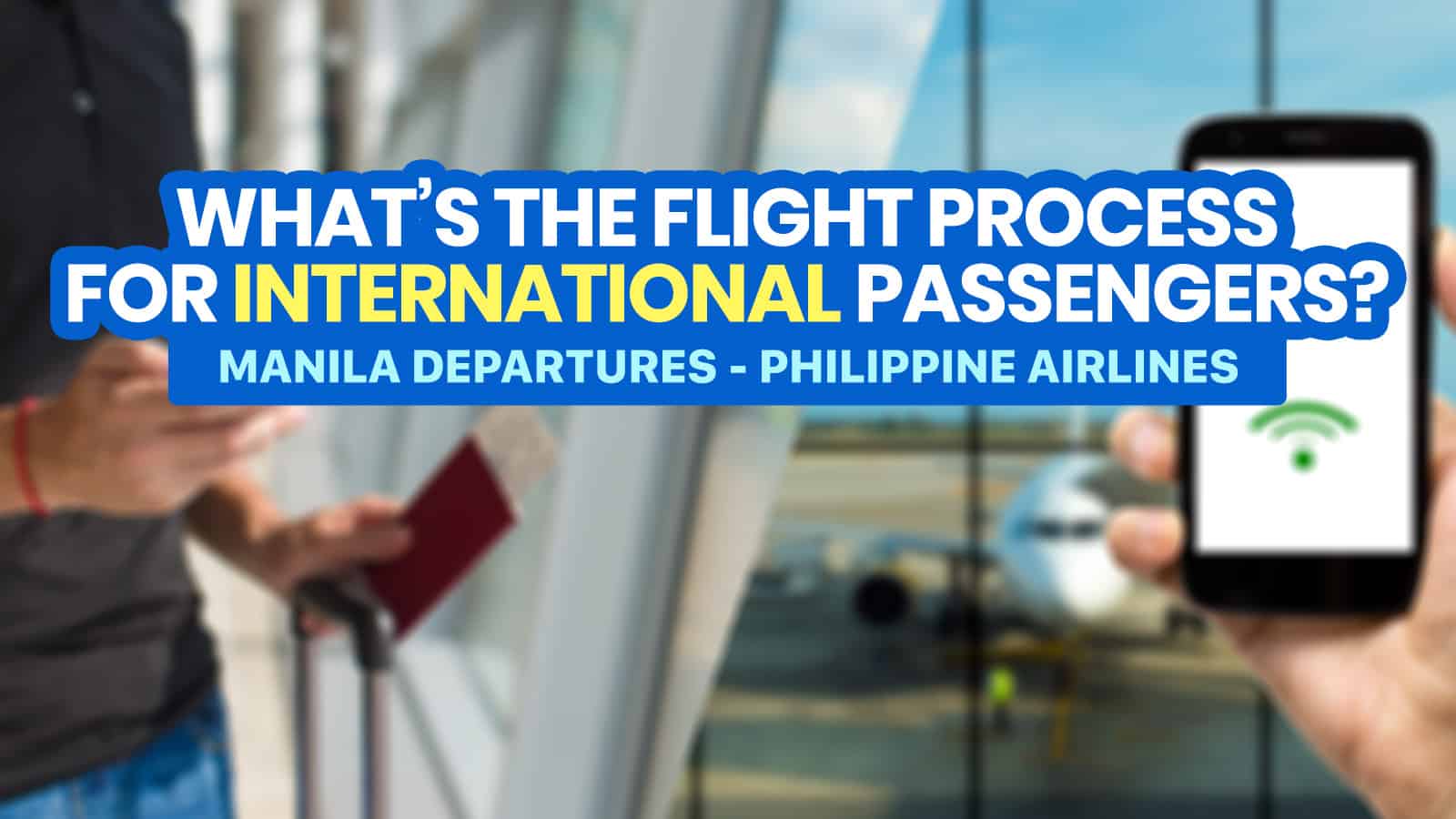

NEW INTERNATIONAL DEPARTURE PROCESS & TRAVEL REQUIREMENTS: For PAL Passengers from MANILA

If you are planning to go on an international trip soon, here are the travel requirements and procedures you must follow on your departure if you’re flying with Philippine Airlines (PAL).
Travel protocols and requirements have been continuously changing due to the COVID-19 pandemic, so also check with the concerned government authority for updates.
WHAT'S COVERED IN THIS GUIDE?
1. Pre-register and fill out the PAL Passenger Profile and Health Declaration form (PPHD).
You should do this as early as 5 DAYS before departure .
You must first accomplish the pre-registration form here: https://bit.ly/PALIntPPHD . This is step one of the 2-step registration process for passengers departing from the Philippines.
After submitting this form, you will be sent the following via email:
- a list of requirements of your destination
- a unique reference code
- the PAL Passenger Profile and Health Declaration form (PPHD form)
Save or print the unique reference code that will be sent to you. You might need to use it later on so don’t forget this step.
2. Complete the requirements.
The requirements below are applicable for all outbound Filipino travelers except OFWs and students enrolled abroad or exchange program participants.
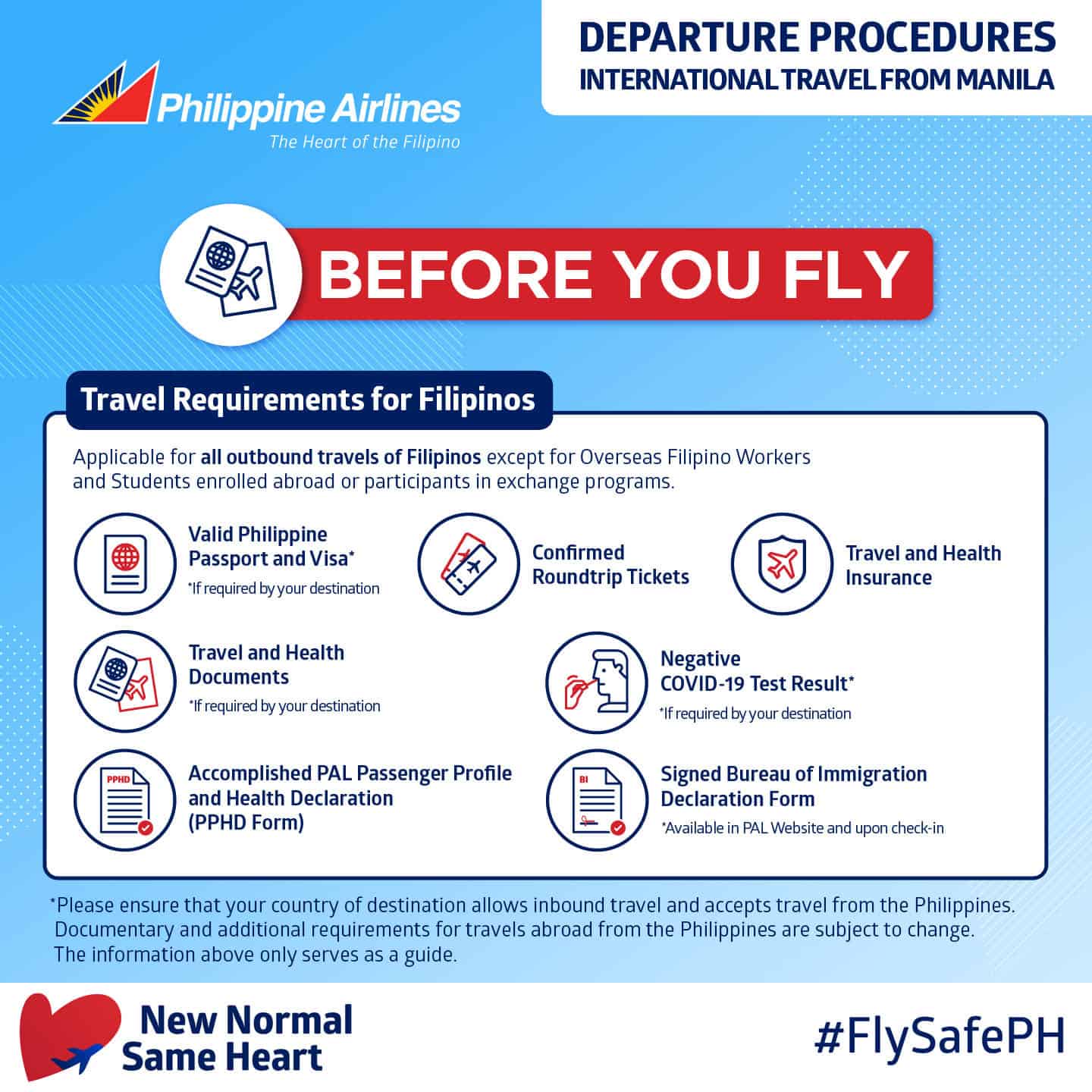
- Valid Philippine passport
- Confirmed roundtrip tickets
- Travel and health insurance
- Accomplished PAL Passenger Profile and Health Declaration Form (PPHD Form). You can find it here .
- Signed Bureau of Immigration Declaration Form. Available upon check-in and on PAL website.
In addition, some countries may have additional requirements such as:
- Valid visa (if applicable)
- Travel and health documents (if required by destination country)
- Negative COVID-19 Test Result (if required by destination country)
Note that these are just the requirements for leaving the Philippines. Your destination country most probably has additional ARRIVAL rules and restrictions that you must follow. These entry requirements vary per country. For example, some countries may require a negative COVID-19 test result prior to departure but some don’t.
If you’re flying with PAL, you may check the requirements here! On that page, scroll down to the bottom and you’ll find a menu. Click those that apply to you and they’ll reveal a list of requirements per destination and passenger classification.
It is also important to note that NOT ALL countries accept travelers from the Philippines . It’s best to contact the authorities in your destination directly to make sure and get their updated policies.
3. Undergo a COVID-19 testing, if required by your destination country.
You can get discounted rates and quicker release of results with PAL’s accredited testing partners. You can find the list here: PAL-accredited testing partners!
4. On departure date, proceed to the airport.
Arrive at the airport at least 4 hours before the scheduled time of departure or before 8PM latest.
The extra time is due to the additional protocol for COVID-19 done at the airport.
In addition, the government also requires airport passengers to download the TRAZE app, a contact-tracing mobile application. More info about that here: HOW TO USE TRAZE APP!
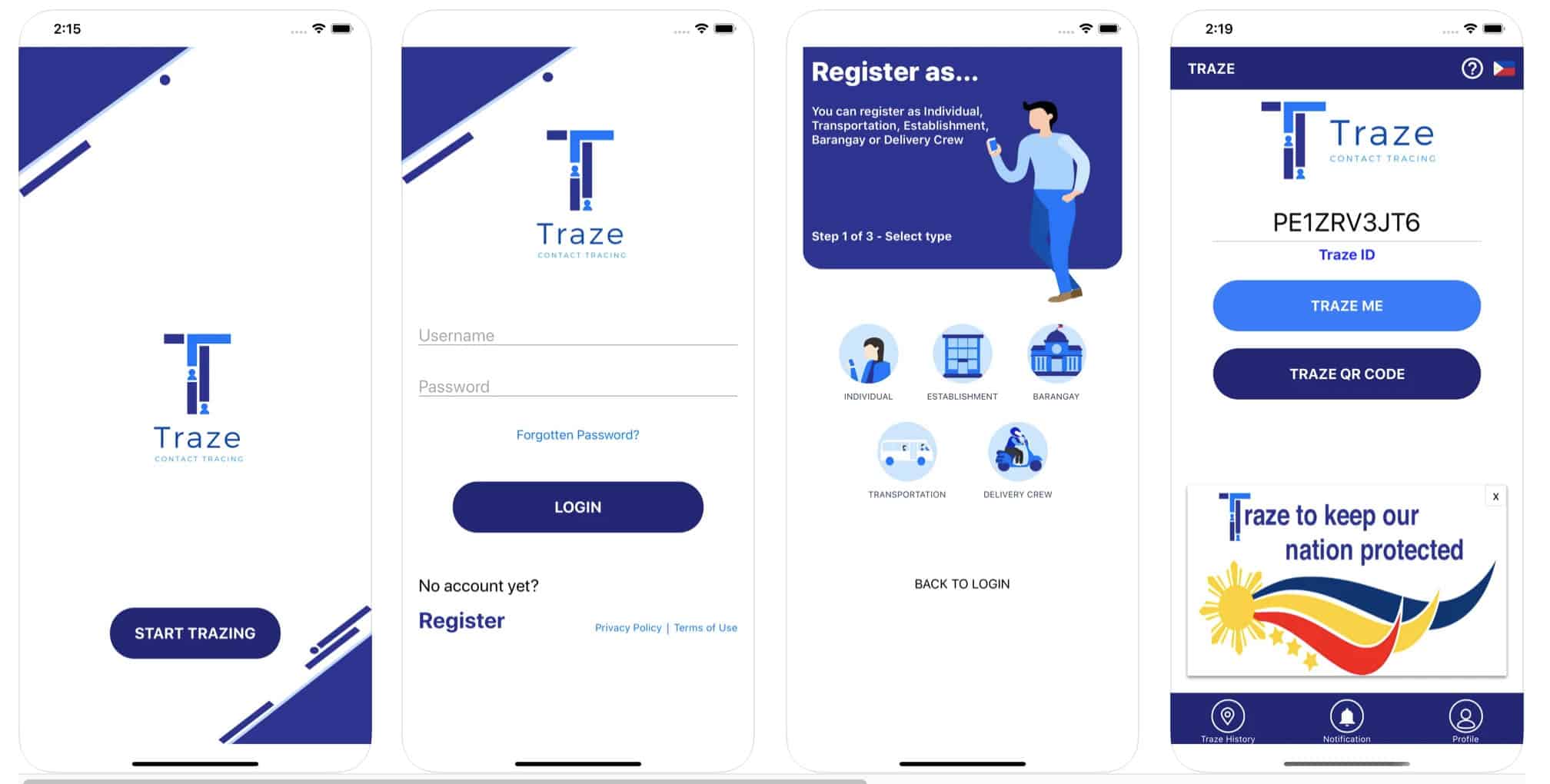
5. Follow safety procedures at all times.
- Wear a face mask and a face shield at all times inside the airport and during the flight. The face shield must be of clear and sturdy and must cover the entire face.
- Have your temperature checked at designated spots.
- Use foot baths and disinfection facilities at designated stations.
- Observe physical distancing at all times. Minimum contact must be ensured during all procedures from check-in, boarding, in-flight, disembarking, to retrieving of check-in baggage.
6. Check in and clear Immigration and Security checks.
Check in to your flight as usual. The check-in staff will check your requirements.
If you don’t have an Immigration Declaration Form yet, you may get one from the check-in counters too.
Other Useful Articles
- List of DOH-Accredited Hotels in Metro Manila, Cavite, Laguna and Batangas
- List of DOH-Accredited Hotels in Cebu
- List of DOT-Accredited Hotels in BORACAY and KALIBO
- New ARRIVAL Guidelines for International Passengers in Manila
- New DEPARTURE Guidelines for Domestic Passengers in Manila
More Tips on YouTube ⬇️⬇️⬇️
Is this post helpful to you?

Related Posts:
- FIRST TIME ABROAD: Airport Tips & Frequently Asked Questions 2024
- List of OPERATIONAL AIRPORTS IN THE PHILIPPINES: As of July 17, 2020
- List of REQUIREMENTS for Essential Travel: Philippine Airlines, Cebu Pacific, AirAsia
- CLARK AIRPORT: Travel Requirements & Guidelines for Arriving AirAsia Passengers
- NEW DEPARTURE PROCESS for Domestic PAL Flights from Manila: Step-by-Step Guide
- PASSENGER PROFILE & HEALTH DECLARATION FORM (PPHD): How to Register Before Flight (Philippine Airlines)
- PHILIPPINE ENTRY REQUIREMENTS for FOREIGN NATIONALS / NON-FILIPINO
- NEW BORACAY & KALIBO TRAVEL REQUIREMENTS & New Normal Guidelines 2022

- Recent Posts
- Cebu Pacific Set to Restore 100% of Flights, Launches Another Seat Sale - 26 January 2023
- PUERTO PRINCESA TRAVEL GUIDE with Requirements, Sample Itinerary & Budget - 13 December 2022
- JAKARTA TRAVEL GUIDE with Sample Itinerary & Budget + Indonesia Requirements - 2 December 2022
hi is this guide ONLY for PAL passengers
All this, just to LEAVE??? But we will be GONE. None of this should be their business. I don’t want to give immigration my address abroad. And “it’s dangerous to leave, is your travel essential?” What? It’s dangerous to stay! We have been under martial law for over a year. No food. No drink. No housing. Death squads. Bandits. Are they serious? We are literally being held prisoner! This is ILLEGAL!
Paano po mag fill up ng mga papers?
Tanong lang po kung required pa ang PCR Test result pagpapasok ng Airport destination ko po ay going Saudi, as per PAL hindi na daw po kasi required ang PCR TEST RESULT pa puntang saudi.
Hi Aris, 2021 pa po itong article na ‘to. Best po to follow yung advice ng airline na sasakyan nyo po.
Featured On

We heard you!
Your comment is now queued for moderation! We’ll try to get back to you soonest. While waiting, follow us on these channels.
Subscribe on Youtube! Follow us on Instagram!

Security Alert May 17, 2024
Worldwide caution, update may 10, 2024, information for u.s. citizens in the middle east.
- Travel Advisories |
- Contact Us |
- MyTravelGov |
Find U.S. Embassies & Consulates
Travel.state.gov, congressional liaison, special issuance agency, u.s. passports, international travel, intercountry adoption, international parental child abduction, records and authentications, popular links, travel advisories, mytravelgov, stay connected, legal resources, legal information, info for u.s. law enforcement, replace or certify documents.
Before You Go
Learn About Your Destination
While Abroad
Emergencies
Share this page:
Philippines
Travel Advisory May 16, 2024
Philippines - level 2: exercise increased caution.
Updated to reflect changes in the country summary and information on the Sulu Archipelago, Marawi City.
Exercise increased caution to the Philippines due to crime, terrorism, civil unrest, and kidnapping. Some areas have increased risk. Read the entire Travel Advisory.
Do Not Travel to:
- The Sulu Archipelago, including the southern Sulu Sea, due to crime, terrorism, civil unrest, and kidnapping .
- Marawi City in Mindanao due to terrorism and civil unrest .
Reconsider Travel to:
- Other areas of Mindanao due to crime, terrorism, civil unrest, and kidnapping .
Country Summary: Terrorists and armed groups have carried out kidnappings, bombings, and other attacks targeting public areas like tourist sites, markets, and local government facilities in the Philippines. Violent crimes are also common in the Philippines such as robbery, kidnappings, and physical assaults. Protests happen in the Philippines and could turn violent and/or result in traffic jams and road closures with limited capacity of the local government to respond.
There are stringent travel protocols and restrictions for U.S. government employees under the U.S. Embassy’s (Chief of Mission) security responsibility when traveling to certain areas of the country as stated below.
Read the country information page for additional information on travel to the Philippines.
If you decide to travel to the Philippines:
- Monitor local media for breaking events and adjust your plans based on new information.
- Avoid demonstrations.
- Enroll in the Smart Traveler Enrollment Program (STEP) to receive Alerts and make it easier to locate you in an emergency.
- Follow the Department of State on Facebook and Twitter/X .
- Review the Country Security Report for the Philippines.
- Visit the CDC page for the latest Travel Health Information related to your travel.
- Prepare a contingency plan for emergency situations. Review the Traveler’s Checklist .
The Sulu Archipelago and Sulu Sea – Level 4: Do Not Travel
Terrorist and armed groups in the Sulu Archipelago and the Sulu Sea have historically engaged in kidnappings for ransom on land and at sea, in addition to bombings and other attacks. These incidents often target foreign nationals, including U.S. citizens, local government entities, and security personnel.
The U.S. government’s ability to provide emergency services to U.S. citizens in this region is very limited. U.S. government employees under the U.S. Embassy’s (Chief of Mission) security responsibility are required to obtain special authorization to travel to these areas.
Visit our website for Travel to High-Risk Areas .
Marawi City in Mindanao – Level 4: Do Not Travel
Civilians face risk of death or injury from ongoing clashes between terrorist group remnants and Philippine security forces in Marawi.
The U.S. government’s ability to provide emergency services to U.S. citizens in Marawi City is very limited. U.S. government employees under the U.S. Embassy’s (Chief of Mission) security responsibility are required to obtain special authorization to travel to Marawi City.
Mindanao (except Davao City, Davao del Norte Province, Siargao Island, and the Dinagat Islands) – Level 3: Reconsider Travel
Terrorist and armed groups in Mindanao have historically engaged in kidnappings for ransom, in addition to bombings and other attacks. These incidents often target foreign nationals, including U.S. citizens, as well as civilians, local government entities, and security forces.
The U.S. government has limited ability to provide emergency services to U.S. citizens in large parts of Mindanao. U.S. government employees under the U.S. Embassy’s (Chief of Mission) security responsibility are required to obtain special authorization to travel to areas outside of Davao City, Davao del Norte Province, Siargao Island, and the Dinagat Islands.
Embassy Messages
View Alerts and Messages Archive
Quick Facts
Sufficient space for an entry visa stamp.
No (for tourist travel under 30 days).
Required for travelers from countries with yellow fever.
50,000 pesos/$10,000.
Embassies and Consulates
U.s. embassy manila.
1201 Roxas Boulevard Manila, Philippines 1000 Telephone: + (63) (2) 5301-2000 Emergency After-Hours Telephone: + (63) (2) 5301-2000 Fax: + (63) (2) 5301-2017 Email: [email protected]
U.S. Consular Agency - Cebu City Ground Level, Waterfront Hotel Salinas Drive Lahug, Cebu City Philippines 6000 Telephone: + (63) (32) 231-1261 Emergency After-Hours Telephone: Please contact the U.S. Embassy in Manila: + (63) (2) 301-2000 Fax: +(63) (32) 231-0174 Email: [email protected]
Destination Description
See the Department of State’s Fact Sheet on Philippines for information on U.S.-Philippines relations.
Entry, Exit and Visa Requirements
Visit the website of the Embassy of the Republic of the Philippines in Washington, D.C., for the most current visa information.
If you remain in the Philippines beyond the “admit until” date stamped in your passport by immigration authorities, you may be subject to fines and detention by the Philippine Bureau of Immigration (BI).
Certain foreigners must apply for an Emigration Clearance Certificate (ECC) from BI before they may depart the Philippines.
See the Philippine Bureau of Immigration (BI)'s website for information about Philippine visas, exit clearances, and Alien Certificate Registration (ACR).
See the Philippine Retirement Authority (PRA)'s website for information about the Special Retiree Resident Visa (SRRV).
U.S. citizens who intend to work in the Philippines should contact the Philippines Department of Labor and Employment (DOLE) for information.
The U.S. Department of State is unaware of any HIV/AIDS entry restrictions for visitors or foreign residents of the Philippines.
We advise all U.S. citizens against traveling with potentially prohibited items, such as firearms, on their person or in their checked baggage. While at the airport or traveling in country, possession of prohibited items such as live or spent ammunition or firearms, or anything resembling such items -- whether it be a souvenir, gift, or artifact – may subject the traveler to prosecution and stringent penalties by local authorities. Learn more about how to avoid problems when traveling abroad with firearms.
Check with your airline to determine whether a particular item is allowed for transport, as well as with the appropriate authorities in the Philippines – such as the Philippine National Police and Bureau of Immigration – as well as the appropriate authorities in any transit countries.
You can find information on dual nationality , prevention of international child abduction , and customs regulations on our website.
Safety and Security
Terrorism: Terrorist groups, and those inspired by such organizations, are intent on attacking U.S. citizens abroad. Terrorists are increasingly using less-sophisticated methods of attack – including knives, firearms, and vehicles – to target crowds more effectively. Frequently, their aim is unprotected or vulnerable targets, such as:
- High-profile public events (sporting contests, political rallies, demonstrations, holiday events, celebratory gatherings, etc.)
- Hotels, clubs, and restaurants frequented by tourists
- Places of worship
- Shopping malls and markets
- Public transportation systems (including subways, buses, trains, and scheduled commercial flights)
U.S. citizens should remain alert to the potential for explosions and bombings as part of pre-planned attacks, as well as the threat of kidnapping.
Terrorist and armed groups continue plotting possible kidnappings, bombings, and other attacks in the Philippines. Terrorist and armed groups may attack with little or no warning, targeting tourist locations, markets/shopping malls, and local government facilities.
For more information, please visit our website here .
Crime: Confidence games (con games), pickpocketing, Internet scams, and credit/ATM card fraud are common. Be wary of unknown individuals who attempt to befriend you, especially just after you arrive in country. Do not accept food, drinks, or rides in private vehicles from strangers, even if they appear to be legitimate. Solo travelers have been drugged and robbed by strangers after accepting an invitation to visit a tourist destination.
Kidnappings, physical assaults, murder-for-hire, and other violent crimes occur in the Philippines. Philippine government law enforcement agencies are engaged in a nationwide counter-narcotics campaign that has resulted in a sharp increase in violence between police and individuals suspected of involvement in the drug trade. As part of this campaign, law enforcement is engaged in aggressive search and buy-bust operations that could affect foreigners.
Taxis or ride-sharing applications are the recommended form of public transportation. However, taxi drivers and/or individuals using stolen taxi cabs have committed robberies. Ask the hotel, restaurant, and/or business establishment to call a reliable taxi service for you.
- Do not enter a taxi if it has already accepted another passenger.
- Request that the taxi driver use the meter to record your fare.
- Wait for another cab if the driver is unwilling to comply with these requests.
- Make a mental note of the license plate number of your taxi, or text it to someone, should there be a problem.
When driving in the city, make certain that vehicle doors are locked and windows are rolled up.
Travelers have been stopped and robbed shortly after leaving Manila Ninoy Aquino International Airport in a taxi or private vehicle.
One common form of credit/ATM card fraud involves an illicit electronic device attached to ATM card readers that retrieves and records information, including the PIN, from a card's magnetic strip. Refer to the Overseas Security Advisory Council (OSAC) website for more information .
International Financial Scams: See the Department of State and the FBI pages for information on scams.
Internet romance and financial scams are prevalent in the Philippines. Scams are often initiated through Internet postings/profiles or by unsolicited emails and letters. Scammers almost always pose as U.S. citizens who have no one else to turn to for help. Common scams include:
- Romance/online dating
- Money transfers
- Lucrative sales
- Gold purchase
- Contracts with promises of large commissions
- Grandparent/relative targeting
- Free trip/luggage
- nheritance notices
- Work permits/job offers
- Bank overpayments
Victims of Crime: U.S. citizen victims of sexual assault are encouraged to contact the U.S. Embassy for assistance.
Report crimes to the local police at the 911 hotline and contact the U.S. Embassy at +(63)(2) 5301-2000. Remember that local authorities are responsible for investigating and prosecuting the crime.
See our webpage on help for U.S. victims of crime overseas .
- Help you find appropriate medical care.
- Assist you in reporting a crime to the police.
- Contact relatives or friends with your written consent.
- Provide general information regarding the victim’s role during the local investigation and following its conclusion.
- Provide a list of local attorneys.
- Provide our information on victim’s compensation programs in the U.S.
- Provide an emergency loan for repatriation to the United States and/or limited medical support in cases of destitution.
- Help you find accommodation and arrange flights home.
- Replace a stolen or lost passport.
Domestic Violence: U.S. citizen victims of domestic violence are encouraged to contact the Embassy for assistance.
Tourism: Please check with the Philippine Department of Tourism before traveling. The safety standards you might expect of transport and tour operators, including adventure activities such as diving, are not always met. Sufficient safety equipment may not be provided, and recommended maintenance standards and safety precautions may not be observed. Always use available safety equipment, such as lifejackets or seatbelts, even if others do not. If appropriate safety equipment is not available, use another provider. In the event of an injury, appropriate medical treatment is widely available throughout the country. Outside of a major metropolitan center, it may take more time for first responders and medical professionals to stabilize a patient and provide life-saving assistance. U.S. citizens are encouraged to purchase medical evacuation insurance . If you are planning to dive, the Diver’s Alert Network (DAN) provides information on diving accident management.
Local Laws & Special Circumstances
Criminal Penalties: You are subject to local laws. If you violate local laws, even unknowingly, you may be expelled, arrested, or imprisoned. Individuals establishing a business or practicing a profession that requires additional permits or licensing should seek information from the competent local authorities, prior to practicing or operating a business.
The judicial process in the Philippines typically is lengthy, extending for years rather than weeks or months, and individuals charged with a crime can be held in indefinite pre-trial detention as their case makes its way through the judicial system. Penalties for possessing, using, or trafficking in illegal drugs in the Philippines are severe.
Convicted offenders can expect long jail sentences and heavy fines.
If a traveler is found to have any amount of drugs on his or her person, or nearby, when arriving or departing from the Philippines, he or she will be charged with trafficking. Trafficking is a non-bailable charge, and the maximum penalty is life imprisonment. If you intend to enter the Philippines with a prescribed controlled substance (e.g., medical marijuana), obtain clearance from the Philippine government first.
Since June 2016, Philippine authorities have conducted a public campaign against illegal drugs. This has resulted in armed confrontations between authorities and suspected drug dealers and users.
Always carry a copy of your passport in the event that you are asked about your citizenship. You may be questioned by authorities if you take pictures of certain buildings, especially government buildings or military installations. Driving under the influence of alcohol or drugs could land you immediately in jail.
The Philippine Bureau of Immigration (BI) may consider the participation of foreigners in demonstrations or political rallies in the Philippines to be a violation of the terms of admission. Foreign nationals who participate in demonstrations, political rallies, or other activity deemed anti-government in nature may be detained and deported for violating Philippine immigration laws.
In the Philippines, any adult in the company of a minor under 12 years old who is not related within the “fourth degree” may be subject to a severe penalty. U.S. citizens should be aware of this law both to avoid unlawful behavior and to protect themselves against potentially frivolous accusations.
Furthermore, some laws are also prosecutable in the United States, regardless of local law. For examples, see our website on crimes against minors abroad and the Department of Justice website.
Arrest Notification: If you are arrested or detained, ask police or prison officials to notify the U.S. Embassy immediately. See our webpage for further information.
Counterfeit and Pirated Goods: Although counterfeit and pirated goods are prevalent in many countries, they may still be illegal according to local laws. You may also pay fines or have to give them up if you bring them back to the United States. See the U.S. Department of Justice website for more information.
Faith-Based Travelers: See the following webpages for details:
- Faith-Based Travel Information
- International Religious Freedom Report – see country reports
- Human Rights Report – see country reports
- Hajj Fact Sheet for Travelers
- Best Practices for Volunteering Abroad
LGBTQI+ Travelers: There is no prohibition on entry into the Philippines by LGBTQI+ individuals. Transgender travelers should be aware that immigration officials may require supporting documents if the gender in the traveler’s passport does not reflect the gender expression of a transgender person. According to Philippine law, an individual’s sex must match that assigned at birth as reflected on the official birth certificate, even in cases of post-operative sex reassignment.
Same-sex relationships are not illegal in the Philippines, but they lack legal recognition. No federal law prohibits discrimination against LGBTQI+ individuals. Several cities, however, have passed local ordinances protecting LGBTQI+ rights. Despite these legislative efforts, LGBTQI+ individuals continue to face discrimination and harassment.
See our LGBTQI+ Travel Information page and section 6 of our Human Rights Report for further details.
Travelers with Disabilities: Streets, buildings, and public transportation may lack facilities for persons with disabilities. Most public buildings are inaccessible to persons with physical disabilities or mobility impairments. Government efforts to improve access to transportation for persons with disabilities are limited due to weak implementing regulations.
There are local stores in the Philippines for durable medical equipment (DME) and some pharmacies also carry limited medical supplies and equipment.
- For information regarding disability laws, please visit the Philippines National Council on Disability Affairs website.
Students: See our Students Abroad page and .
Women Travelers: See our travel tips for Women Travelers .
For emergency services in the Philippines, dial 911.
Ambulance services are not widely available, and training and availability of emergency responders may be below U.S. standards. Not all ambulances are equipped with state-of-the-art medical equipment.
We do not pay medical bills. Be aware that U.S. Medicare/Medicaid does not apply overseas. Most hospitals and doctors overseas do not accept U.S. health insurance. For more information about TRICARE medical services overseas (a health care program for uniformed service members, retirees, and their families), including possible vaccinations, please visit their Tricare-overseas website .
Medical Insurance: Make sure your health insurance plan provides coverage overseas. Most care providers overseas only accept cash payments. See our webpage for more information on insurance overseas. Visit the U.S. Centers for Disease Control and Prevention for more information on type of insurance you should consider before you travel overseas.
We strongly recommend supplemental insurance to cover medical evacuation.
Always carry your prescription medication in original packaging, along with your doctor’s prescription. Check with the Philippine Bureau of Customs to ensure the medication is legal in the Philippines.
Vaccinations: Be up-to-date on all vaccinations recommended by the U.S. Centers for Disease Control and Prevention.
Further health information:
- World Health Organization
- U.S. Centers for Disease Control and Prevention (CDC)
Air Quality: Visit AirNow Department of State for information on air quality at U.S. Embassies and Consulates.
The U.S. Embassy maintains a list of doctors and hospitals in the Philippines. We do not endorse or recommend any specific medical provider or clinic.
Health facilities in general:
- Adequate health facilities are available throughout the country but health care in rural areas may be below U.S. standards.
- Public medical clinics lack basic resources and supplies.
- Hospitals and doctors often require payment “up front” prior to service or admission.
- Patients bear all costs for transfer to or between hospitals.
- Psychological and psychiatric services are limited, even in the larger cities, with hospital-based care only available through government institutions.
- Hospitals usually require advance payment or proof of adequate insurance before admitting a patient.
- U.S. citizens have lodged a large number of complaints about unethical business practices, prices, and collection measures against some of the hospitals in the Philippines. Travelers should make efforts to obtain complete information on billing, pricing, and proposed medical procedures before agreeing to any medical care.
- Be aware that some hotels or resorts may have exclusive agreements with medical providers, which may limit your choices in seeking emergency medical attention.
- Medical staff may speak little or no English.
- Generally, in public hospitals only minimal staff is available overnight in non-emergency wards. Consider hiring a private nurse or having family spend the night with the patient, especially a minor child.
Medical Tourism and Elective Surgery:
- U.S. citizens have suffered serious complications or died during or after having cosmetic or other elective surgery.
- Medical tourism is a rapidly growing industry. People seeking health care overseas should understand that medical systems operate differently from those in the United States and are not subject to the same rules and regulations. Anyone interested in traveling for medical purposes should consult with their local physician before traveling and visit the U.S. Centers for Disease Control and Prevention website for more information on medical tourism.
- We strongly recommend supplemental insurance to cover medical evacuation in the event of unforeseen medical complications.
- Your legal options in case of malpractice are very limited in the Philippines.
- Although the Philippines has many elective/cosmetic surgery facilities that are on par with those found in the United States, the quality of care varies widely. If you plan to undergo surgery in the Philippines, make sure that emergency medical facilities are available and professionals are accredited and qualified.
Pharmaceuticals:
- Exercise caution when purchasing medication overseas. Pharmaceuticals, both over the counter and requiring prescription in the United States, are often readily available for purchase with few controls. Counterfeit medication is common and may prove to be ineffective, the wrong strength, or contain dangerous ingredients. Medication should be purchased in consultation with a medical professional and from reputable establishments.
- U.S. Customs and Border Protection and the Food and Drug Administration are responsible for rules governing the transport of medication to the United States. Medication purchased abroad must meet their requirements to be legally brought back into the United States. Medication should be for personal use and must be approved for usage in the United States. Please visit the U.S. Customs and Border Protection and the Food and Drug Administration websites for more information.
Water Quality:
In many areas, tap water is not potable. Bottled water and beverages are generally safe, although you should be aware that many restaurants and hotels serve tap water unless bottled water is specifically requested. Be aware that ice for drinks may be made using tap water.
Adventure Travel:
- Visit the U.S. Centers for Disease Control and Prevention website for more information about Adventure Travel .
The following diseases are prevalent:
- Tuberculosis
- Chikungunya
- Visit the U.S. Centers for Disease Control and Prevention website for more information about Resources for Travelers regarding specific issues in the Philippines.
Air Quality:
- Air pollution is a significant problem in several major cities in the Philippines. Consider the impact seasonal smog and heavy particulate pollution may have on you and consult your doctor before traveling if necessary.
Travel and Transportation
Road Conditions and Safety: Vehicle traffic is dense and unpredictable. The road system is frequently congested, and drivers are often undisciplined. Consider the risks of driving your own vehicle if you are not used to Philippine road conditions. Avoid driving off the national highways and other paved roads, especially at night. Be extra vigilant when crossing the street. Do not expect vehicles to stop.
Traffic Laws: If you are involved in an accident, contact the local police, and attempt to stay inside your car until the police arrive before engaging with the other driver. Do not attempt to negotiate with drivers until police arrive. Drivers often ignore or do not yield to emergency vehicles, which may delay their arrival to the scene of an accident.
Always have a valid driver’s license and relevant documents with you when driving. Please review the following notices circulated by the Metropolitan Manila Development Authority (MMDA) to avoid scams and requests for bribes from apprehending officers: List of Traffic Violations and Penalties, No Contact Traffic Apprehension Policy, and Procedure in Settling Traffic Violations The MMDA also publishes guidelines on what to do during vehicular accidents .
Public Transportation: Exercise caution while traveling by inter-island ferryboats or other public transportation. Avoid overcrowded or unsafe transport. There have been 19 major inter-island ferryboat accidents since 2012, two with significant loss of life. U.S. government employees are advised not to use inter-island ferry boat services unless they are the only means of transportation available. There have also been a series of bus accidents due to poor bus maintenance or driver error. While taxis are the recommended form of public transportation, there have been safety issues using taxis. Please refer to our Safety and Security section for more information.
See our Road Safety page for more information. Visit the Philippine Department of Tourism website , the national authority responsible for road safety.
Aviation Safety Oversight: The U.S. Federal Aviation Administration (FAA) has assessed the government of the Philippine’s Civil Aviation Authority as being in compliance with International Civil Aviation Organization (ICAO) aviation safety standards for oversight of the Philippine’s air carrier operations. Further information may be found on the FAA’s safety assessment page.
Maritime Travel: Mariners planning travel to the Philippines should also check for U.S. maritime advisories and alerts . Information may also be posted to the U.S. Coast Guard homeport website and the NGA broadcast warnings .
For additional travel information
- Enroll in the Smart Traveler Enrollment Program (STEP) to receive security messages and make it easier to locate you in an emergency.
- Call us in Washington, D.C. at 1-888-407-4747 (toll-free in the United States and Canada) or 1-202-501-4444 (from all other countries) from 8:00 a.m. to 8:00 p.m., Eastern Standard Time, Monday through Friday (except U.S. federal holidays).
- See the State Department’s travel website for the Worldwide Caution and Travel Advisories .
- Follow us on Twitter and Facebook .
- See traveling safely abroad for useful travel tips.
Review information about International Parental Child Abduction in Philippines . For additional IPCA-related information, please see the International Child Abduction Prevention and Return Act ( ICAPRA ) report.
Travel Advisory Levels
Assistance for u.s. citizens, philippines map, learn about your destination, enroll in step.

Subscribe to get up-to-date safety and security information and help us reach you in an emergency abroad.
Recommended Web Browsers: Microsoft Edge or Google Chrome.
Check passport expiration dates carefully for all travelers! Children’s passports are issued for 5 years, adult passports for 10 years.
Afghanistan
Antigua and Barbuda
Bonaire, Sint Eustatius, and Saba
Bosnia and Herzegovina
British Virgin Islands
Burkina Faso
Burma (Myanmar)
Cayman Islands
Central African Republic
Cote d Ivoire
Curaçao
Czech Republic
Democratic Republic of the Congo
Dominican Republic
El Salvador
Equatorial Guinea
Eswatini (Swaziland)
Falkland Islands
France (includes Monaco)
French Guiana
French Polynesia
French West Indies
Guadeloupe, Martinique, Saint Martin, and Saint Barthélemy (French West Indies)
Guinea-Bissau
Isle of Man
Israel, The West Bank and Gaza
Liechtenstein
Marshall Islands
Netherlands
New Caledonia
New Zealand
North Korea (Democratic People's Republic of Korea)
Papua New Guinea
Republic of North Macedonia
Republic of the Congo
Saint Kitts and Nevis
Saint Lucia
Saint Vincent and the Grenadines
Sao Tome and Principe
Saudi Arabia
Sierra Leone
Sint Maarten
Solomon Islands
South Africa
South Korea
South Sudan
Switzerland
The Bahamas
Timor-Leste
Trinidad and Tobago
Turkmenistan
Turks and Caicos Islands
United Arab Emirates
United Kingdom
Vatican City (Holy See)
External Link
You are about to leave travel.state.gov for an external website that is not maintained by the U.S. Department of State.
Links to external websites are provided as a convenience and should not be construed as an endorsement by the U.S. Department of State of the views or products contained therein. If you wish to remain on travel.state.gov, click the "cancel" message.
You are about to visit:
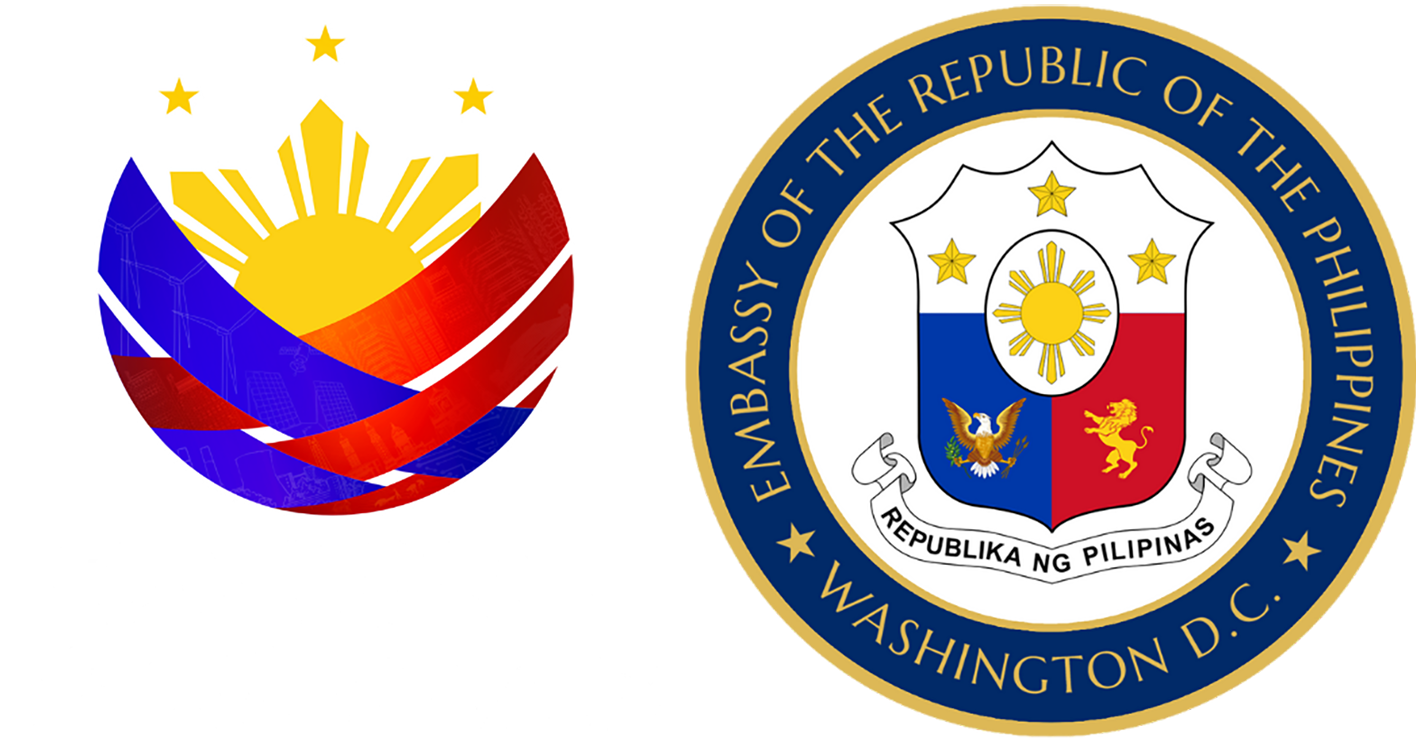
Last Updated 14 August 2023
Travel to the Philippines
Note: etravel.gov.ph now replaces the One Health Pass and remains mandatory for all travelers, Filipino and non-Filipino alike. The Embassy would like to remind the public that this website is FREE OF CHARGE and to be vigilant in recognizing fraudulent websites.
For International Arrivals in the Philippines: Presentation of vaccination status and vaccination certificate for COVID-19 is no longer required . All arriving international travelers are accepted regardless of their vaccination status.
For OFWs and Seafarers: The issuance of the International Certificate of Vaccination for Prophylaxis for Yellow Fever Vaccine and other vaccination depends on the requirement of the agency/company.
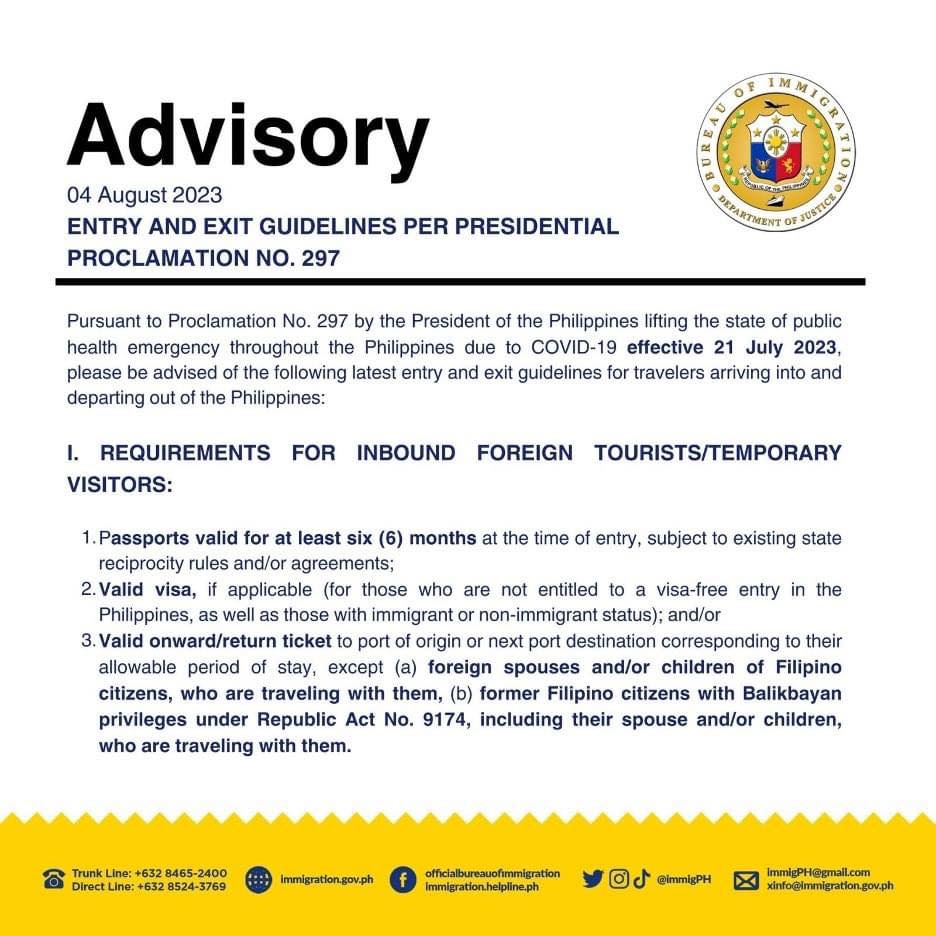
Travel to the United States from the Philippines
For details and updates, visit the website of the US Embassy in the Philippines. You can also visit the Official “Visit the USA” website at https://www.visittheusa.com/ .
For more information, see CDC regulations on international travel .
Note for all travelers : Travelers transiting through other countries will need to check the travel restrictions regarding that country and are recommended to further inquire with their airline carrier of choice
Philippine Travel Information System
Announcement
You may only register within 72 hours prior to your arrival or departure in the Philippines. Travelers are enjoined to present their eTravel QR code to flight boarding.
Update Existing Record
Philippine One-Stop Electronic Travel Declaration System
Initiative of the Government of the Philippines:
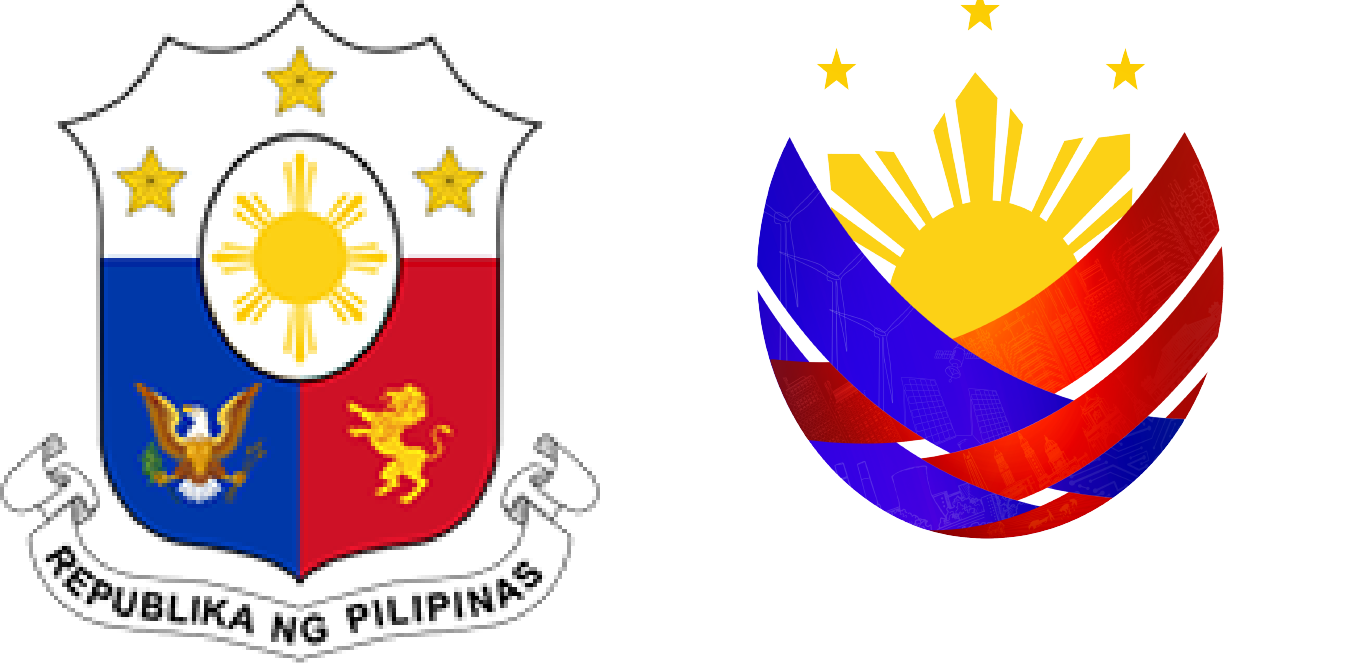
Republic of the Philippines
Departure formalities for filipinos exiting the philippines qdl-2022-09.
Philippine nationals departing the Philippines are covered by departure formalities pursuant to Department of Justice (DOJ) Memorandum Circular No. 036 of 15 June 2015 or the Inter-Agency Council Against Trafficking (IACAT) Revised Guidelines on Departure Formalities for International-Bound Passengers. Please visit https://immigration.gov.ph/images/ImmigrationLaw/2017_Feb/18_2015Jun15_IACAT_RevisedGuidelines.pdf
The abovementioned guidelines provide the parameters on the strict enforcement of immigration departure formalities intended for the prevention of trafficking in persons, illegal recruitment, and other related offenses.
Even departing Filipinos who have been issued appropriate New Zealand visas, when deemed necessary, may need to go through the secondary inspection of the Travel Control and Enforcement Unit (TCEU) of the Bureau of Immigration (BI).
BI is the primary enforcement arm of the Philippine Government on the applicable entry and exit regulations on Filipinos. It also has sole and sovereign prerogative on the entry, stay, and exit of all foreign citizens into the Philippines. The final evaluation and decision on who may enter (especially foreign nationals) and leave (all nationals) rests with BI. Thus, compliance to their requirements is strongly advised.
BI may require the presentation of an original Affidavit of Support (AOS) from the sponsor in New Zealand, which would be presented at the port of exit in the Philippines, a template of which may be downloaded via this link: https://dms.philembassy.org.nz/website/download-forms/affidavit-spa-authentication-notarials/212-affidavit-of-support/file
The AOS must be submitted to the Philippine Embassy in Wellington or Honorary Consulates in Auckland or Christchurch and must be signed in person in front of the administering officers of the Embassy / Consulates as requirement for notarization / acknowledgement. The name in the AOS must match the name indicated in the valid ID with photo, whose copy should also be submitted. Appointment slots may be availed through https://www.philembassy.org.nz/ .
For further information on the other requirements which may be requested by the immigration authorities at the port of exit in the Philippines, it is also advisable to reach out to the BI through its Facebook Messenger which could be accessed here: https://www.facebook.com/officialbureauofimmigration . The BI normally replies within the same day.
Next Post Previous Post
COVID-19 pandemic and travel insurance policies in the Philippines Learn more
Travel Tips
Outbound travel restrictions from the philippines - updated for 2023, despite travel restrictions in the philippines have been relaxed, some documents are still needed for outbound filipino tourists. at times, only your boarding pass will be checked but the required documents listed here have not been officially lifted yet..
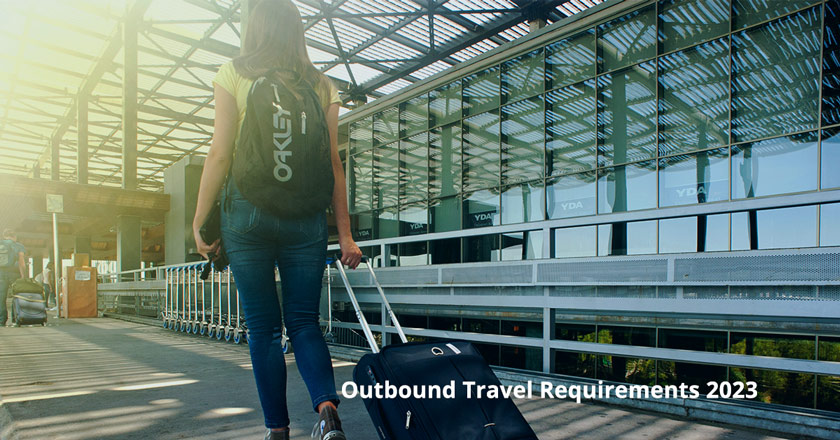
Travel Update - Outbound Tourists from Philippines
Travel requirements .
At the middle of the COVID-19 pandemic sometime late 2020, the Philippines allowed non-essential travel for their citizens or those who are traveling abroad for the purpose of tourism.
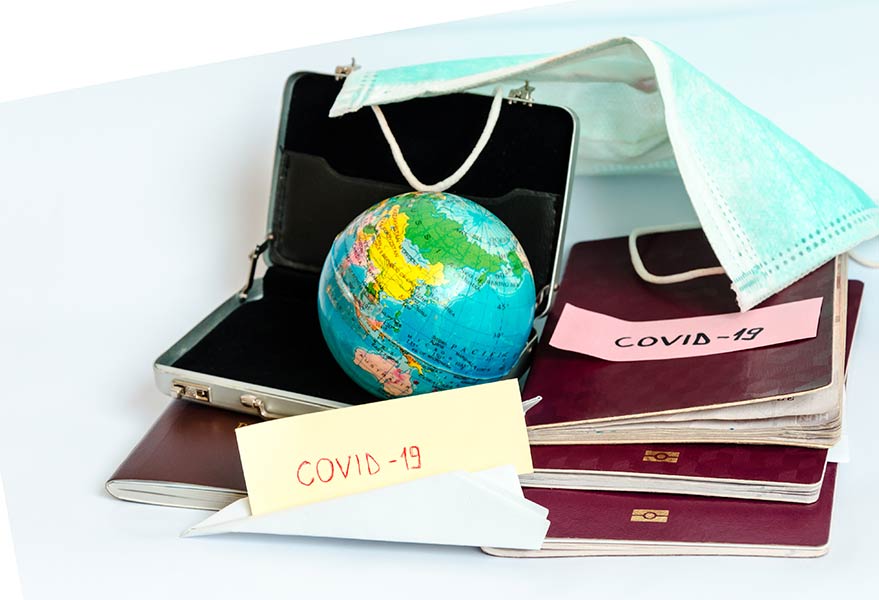
This post COVID season, requirements have been lessened but it is still wise to prepare these documents.
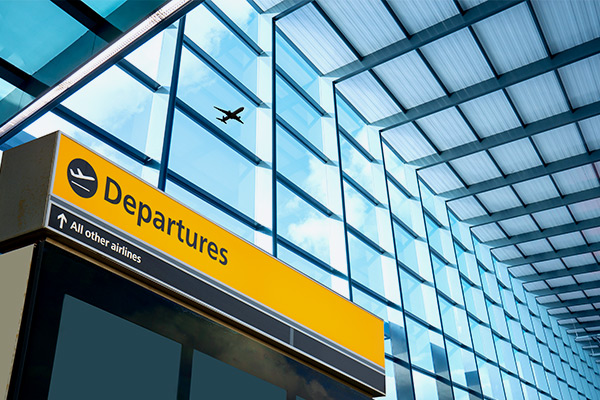
Travel requirements for outbound Philippine passport holders:
Checking of requirements is
1. Passport
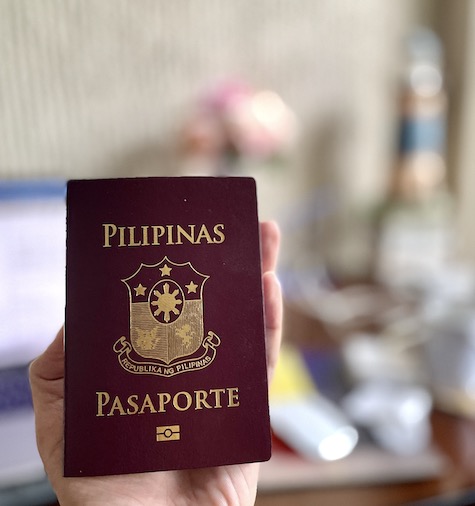
Your passport should have a validity of at least 6 months before its expiry date.
2. Visa (if required by your destination country)
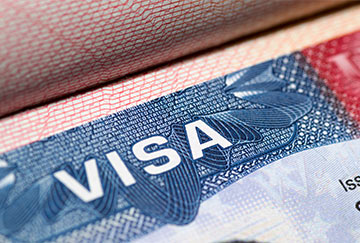
As with traveling pre-pandemic, traveling to a developed country means you need to apply for visa ahead of your trip.
3. Roundtrip Airline Tickets
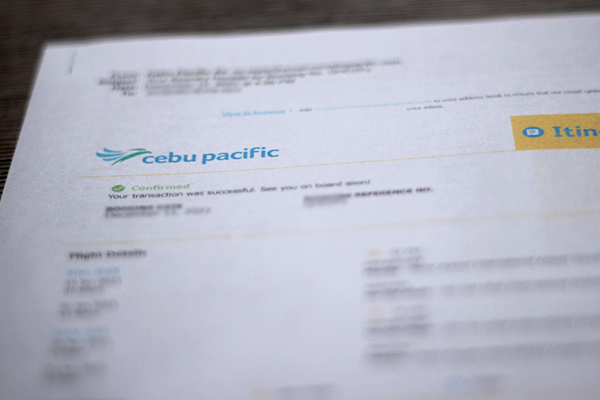
Your airline ticket should have a return flight. This may not be checked at the immigration counter. But if they do, immigration officers would like to ensure you will be returning to the Philippines within the allowed length of travel.
4. Travel insurance with COVID-19 medical cover
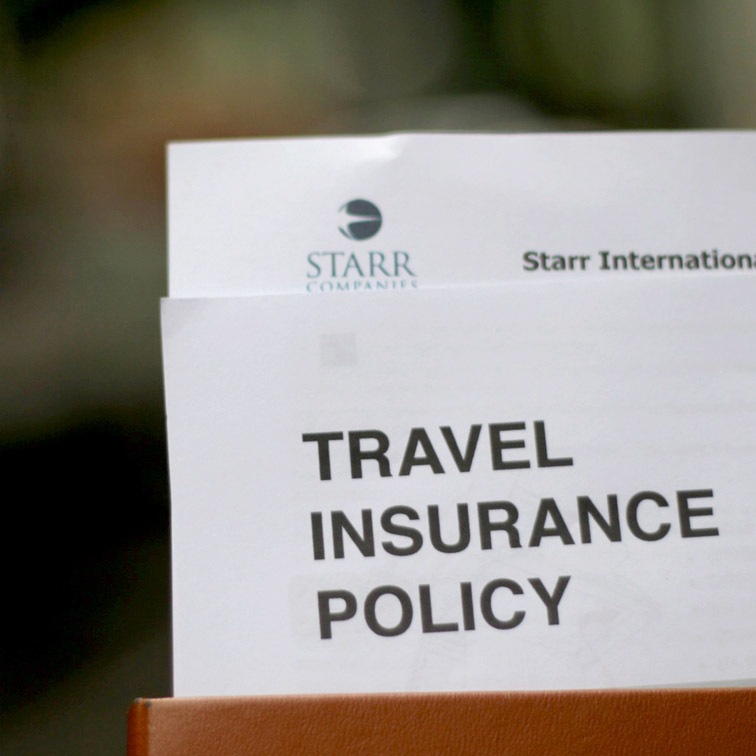
This 2023, having travel insurance with COVID-19 coverage is no longer required, but is recommended.
Though no longer required by the immigration, it is still worth it to have travel insurance coverage in case you need treatment for medical expenses, including COVID-19 infection, as it is very expensive to be hospitalized while traveling outside the Philippines.
Contact TRAVELINSURANCE.com.ph to see your options
If you want to see our recommended travel insurance options for your trip, provide your age, destination and duration of travel by sending us a message or chatting with us through Messenger so we can provide you a travel insurance quote appropriate for your destination.
5. Vaccination Certificate
For fully vaccinated travelers, getting a Vaccination Certificate at VAXCertPH . This is an online system is operated by the Department of Information and Communications Technology (DICT) and the Department of Health (DOH).
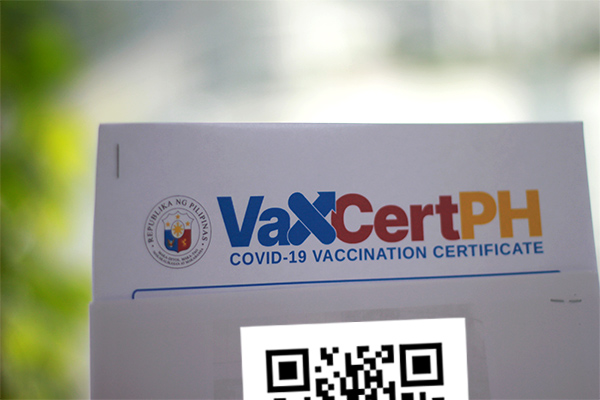
VaxCertPH shows when you were last vaccinated, where you were vaccinated as well as which brand of vaccine you got. A QR code is provided in case it needs to be scanned at the airport or establishment that requires a vaccination certificate during your trip.
Your vaccination rertificate will be checked upon your return to the Philippines. Also, because the vaccines you received are summarized in the VaxCertPH, it will help during your application for eTravel, a document needed upon arrival in the Philippines.
Requirement upon return to the Philippines:
Travelers to and from the Philippines are required to register online at https://etravel.gov.ph/ within 72 hours from the scheduled departure from Philippines.
For arriving travelers, register within 72 hours prior to your scheduled arrival to the Philippines.
You will need to enter your personal and trip information to the online system. The process can take around 10 minutes until a QR code be generated.
Save or take a screenshot of your eTravel QR code to your mobile phone, where you can easily find it.
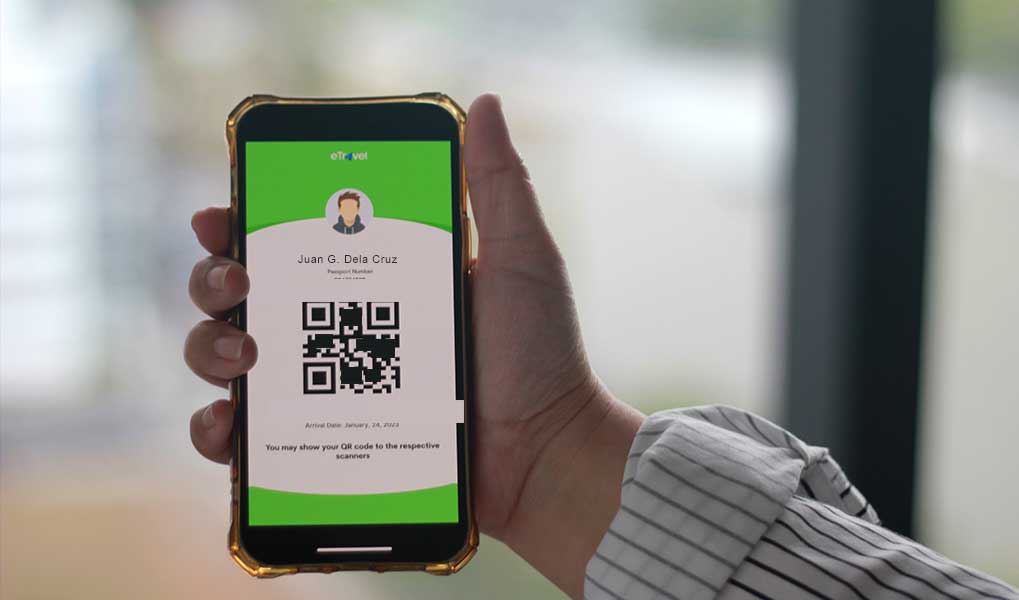
Upon your return to the Philippines, show your eTravel QR code (digital copy also accepted) when requested at airport counters.
The eTravel replaces the traditional departure and arrival cards.
Other reminders for travelers from Philippines
- Though majority of countries no longer require COVID-19 test results and other requirements, we advise you to research the documentary requirements in entering your country of destination.
- If not yet paid upon booking your airline ticket, Travel Tax needs to be settled before leaving the country
- Restrictions change from time to time. Pay attention to your airline's announcements to be updated with the constantly changing travel restrictions
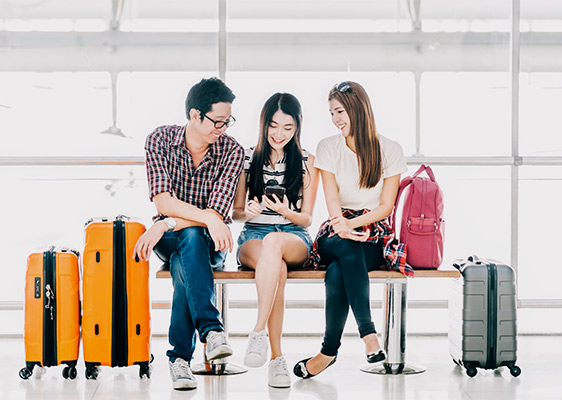
What is Non-essential Travel?
According to the Philippine News Agency , in contrast, essential travels are those that involve "employment, education, medical, humanitarian and essential business".
That being said, travel is considered non-essential if it does not entail the above mentioned reasons. This indicates tourism and vacations are considered non-essential.
If you are holding a tourist visa of your destination country, your travel is assumed to be non-essential.
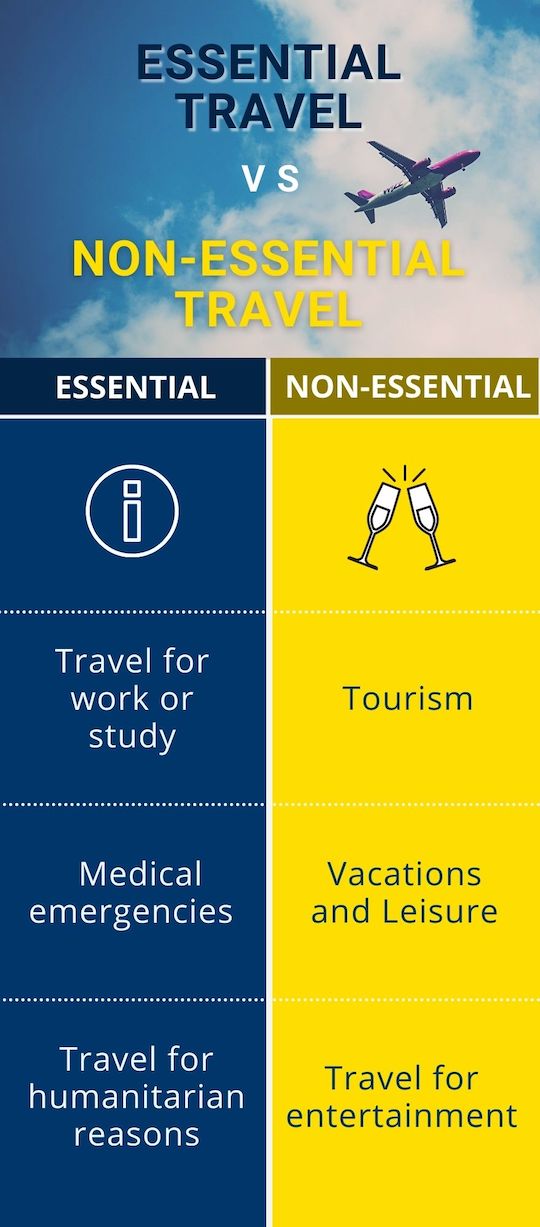
Filipinos who are intending to travel for leisure and tourism purposes are allowed. Lifting of non-essential outbound travels also benefit Filipinos who want to visit their foreign partners abroad.
Philippine travel restrictions constantly change
As we weave through and move forward towards the end of the pandemic, restrictions on travel are continually being adjusted. We expect that restrictions will be relaxed furher soon. More updates are constantly being posted at the Bureau of Immigration website or their Facebook page .
Do you need travel insurance with COVID-19 cover ?
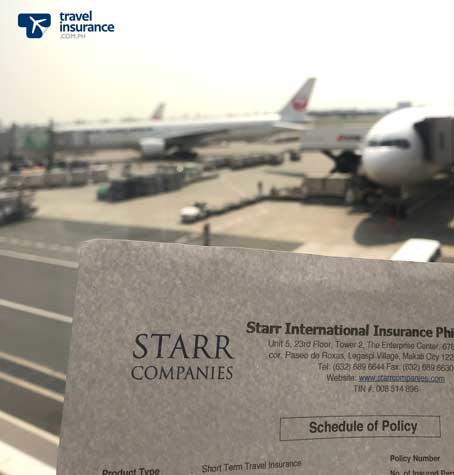
Contact us or send us a message through Facebook
Once you provide us your duration of travel and destination, a travel insurance advisor will be sending your travel insurance options through email.
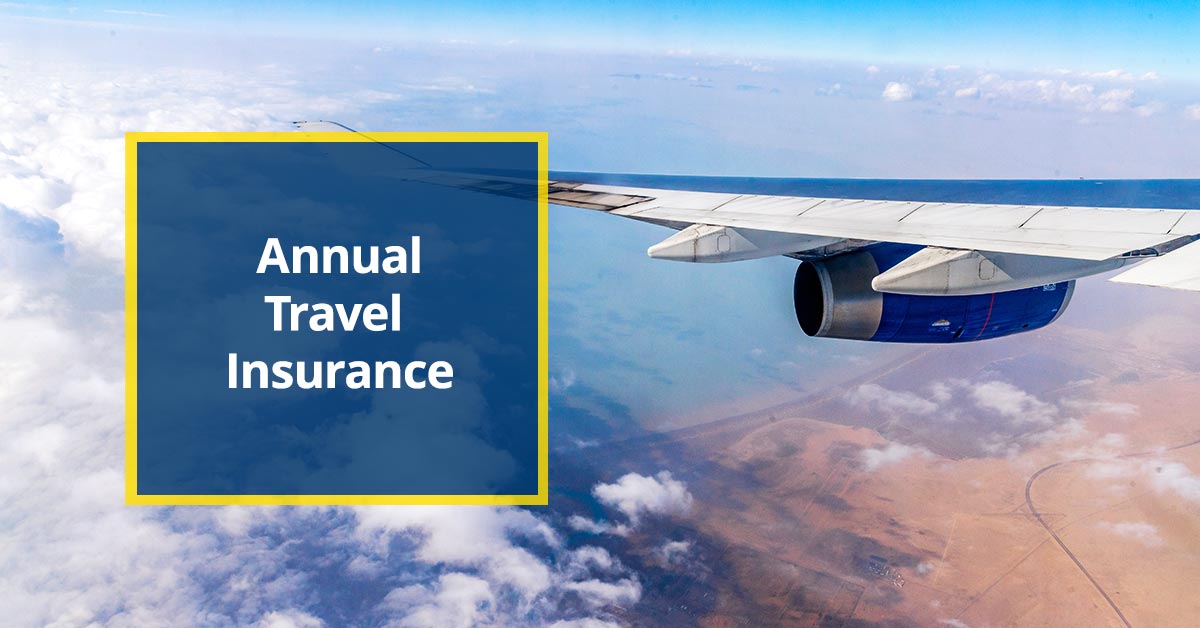
Travel Insurance Info
Annual travel insurance - a guide for tourists from the philippines.
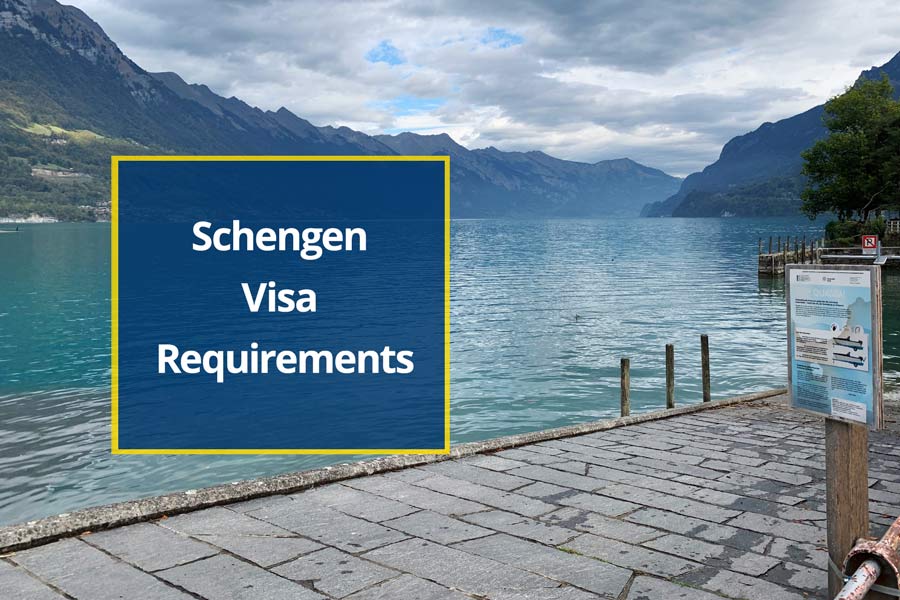
Schengen Visa Application: 5 major steps for employed Filipinos
✈️ Registration is OPEN for our Intentional Travelers Tookit Membership ! Sign up by Monday, July 8 2024 ** Get this deal >

Philippines travel requirements 2024: What travelers need to know
We aim to keep this post updated about Philippines travel in 2024 with official Philippines travel restrictions, requirements, and health and safety guidance. Our goal is to help you make informed decisions so you can travel confidently, safely, and responsibly in this new post-pandemic world of ours.
As restrictions can vary based on the traveler’s citizenship, we will focus primarily on rules affecting U.S. citizens.
Last update: February 21, 2024. Originally published: October 2020.
Disclosure: This post contains some affiliate links. If you make a purchase through one of our links, we may receive a small commission, at no additional cost to you.
* Get our free Post-Pandemic Travel Checklist *
February 2024: “Our main requirement for travel to the Philippines was completing an online form within 72 hours of arriving. Our airline reminded us to do the same process before departing the Philippines as well. The form asks for flight info, countries visited in the last 30 days, and whether you have been sick or exposed to someone ‘known to have communicable/infectious disease’ in the past 30 days. We then received a QR code to show at the airport. We did not need to show the QR code upon arrival or departure (airline staff told me it’s actually for Philippine passport holders only). At immigration they had no questions for us on arrival or departure.” – Michelle & Jedd, Intentional Travelers, American digital nomads
Photo credit: Anwar Y January 2024: “I visited the Philippines for 3 weeks in January with visits to places on 4 major islands across the country [Luzon, Bohol, Cebu, and Palawan]. Overall tourism was open and accessible within the country, flights between islands were the easiest, with long overland travel times (due to local-roads / lack of highways). We did not experience any travel restrictions while within the country. There is a pre-arrival form that must be filled out that is used for tracing but really we didn’t find it used much beyond immigration. There were requirements for providing hotels for contact tracing but it was haphazardly enforced, such as only 1 bus company asked for this information. Access to all services is open, we did notice that for many services employees were masked but there was no requirement for tourists to mask. We found covid tests readily accessible and often in vending machines such as in the airport. One thing of note is that people did appear to be sick. My entire group ended up sick (non-covid) but the sinus cold did impede our ability to do some activities (scuba diving).” – Anwar Y of Beyond My Door , American traveler
At the end of the post, we share on-the-ground perspectives from local residents and travelers to the Philippines so you can get a true sense of what to expect. We’re thankful to one of our team members from the Philippines for co-creating this post with us!
Table of Contents
Is the Philippines open for travel? Can I travel to the Philippines right now?
Effective July 2023 , all travelers are allowed entry in the Philippines without restrictions. The following are no longer required to enter the Philippines:
- Proof of Vaccination
- Proof of negative Covid test (for unvaccinated or partially vaccinated travelers)
- Travel insurance
However, travelers must still meet the following requirements:
- As of April 2023, all travelers, including children. are required to register via the Electronic Travel Declaration System no earlier than 72 hours from the intended arrival.
- Passport must be valid for at least six months at the time of arrival.
- Have booked a return or outbound ticket (affiliate link).
U.S. citizens are allowed visa-free entry into the Philippines for 30 days.
See the list of visa exempt countries here.
Philippines travel restrictions have changed over time, please check back for updates.
Quarantine rules in the Philippines: What happens if I get Covid?
All travelers arriving in the Philippines are not required to quarantine.
Foreign tourists who test positive for Covid while in the Philippines must continue to isolate and undergo quarantine.
For cases with moderate to severe symptoms or belonging to the immunocompromised category, isolation of 10 days from onset of signs and symptoms is required. Patient may be required to be admitted to a health care facility based on the advice of the attending physician.
For severe cases and immunocompromised cases , isolation is required and may end only upon the advice of their health care provider.
Patients with mild symptoms or asymptomatic are advised to isolate at home for five days or until fever-free for at least 24 hours without using antipyretics such as paracetamol, whichever is earlier.
Foreign tourists may be required to cover the costs of quarantine accommodations or hospitalization.
Recommended Quarantine Hotels in the Philippines:
Bayview Park Hotel Manila – Located at the heart of Manila, near the Ninoy Aquino International Airport and US Embassy, Bayview Park Hotel has modern and cozy rooms with air conditioning, cable TV, personal safe, and free Wi-Fi. The hotel also features an outdoor swimming pool and coffee shop with local and international dishes. Estimated cost for a 14-day stay is $748-$997. Book this hotel >
Hotel Durban – Hotel Durban is located in Makati, Manila. The hotel features air conditioned rooms, restaurant, bar, and free Wifi. Estimated cost for a 14-day stay is $471-$871. Book this hotel >
Somerset Millennium Makati – Somerset Millennium is a high-end hotel conveniently located in the vibrant business district of Makati City, 30 minutes from the Ninoy Aquino International Airport. The hotel offers elegant rooms with free Wifi, air conditioning, and flat screen TVs. There’s also an on-site restaurant, fitness center, spa, and swimming pool. Estimated cost for a 14-day stay is $1657-$1888. Book this hotel >
Radissan Blu Cebu – The Radissan Blue is one of Cebu’s top rated five star hotels. It has swimming pool, spa, fitness center, on-site restaurant, and airport transfers. Rooms come with air conditioning, Wifi, and a fantastic breakfast. Estimated cost for a 14-day stay is $1022-$1498. Book this hotel >
Can I travel to the Philippines in July 2024? Can I travel to Philippines this Summer?
The Philippines is open to tourists in July. Read on for details and check back for updates.
What is it like to fly to Manila MNL Ninoy Aquino International Airport right now? Philippine Airlines reports p assengers are no longer required to wear face masks, though it is still recommended.
Do I have to quarantine when traveling to the Philippines? No. Only travelers who test positive will need to quarantine. See details above.
Does Philippines check COVID-19 symptoms of incoming travelers? Travelers undergo a passive thermal scan upon arrival in the airport. Hats must be removed, otherwise just walk through.
Does Philippines require a negative Covid 19 test for travelers? No. As of July 2023, a negative test is no longer required for travelers to enter the Philippines.
Do I have to undergo a Covid test upon arrival in the Philippines? No. Covid test upon arrival is no longer required.
Does Philippines require a proof of Coronavirus vaccine for travelers? No. A proof of Coronavirus vaccine is no longer required.
Do I still need to provide a negative Covid test or quarantine if I have been vaccinated? Quarantine and negative Covid test is no longer required for travelers.
Is a booster shot required for travel to the Philippines? At this time, booster shots are not required in the Philippines. There is currently no expiration period set for the validity of vaccinations.
Do I need to provide proof of vaccination or test for domestic flights in the Philippines? Most destinations within the Philippines no longer require a proof of vaccination or test for domestic flights.
However, local authorities may have specific requirements. It is recommended to check with the destination’s local government unit (LGU) through their official website or Facebook page for the latest rules and guidelines.
What healthcare options are available to travelers in the Philippines who get the virus? Philippine hospitals and clinics are open. Foreign visitors can get PCR or antigen test at the Philippines Department Of Health accredited testing centers .
Foreign visitors who get the virus would pay out of pocket for medical services. The medical expenses for the treatment will vary depending on the severity of the condition, the hospital where the patient is admitted, confinement duration, and other factors.
For travel insurance that covers Covid, check out Nomad Insurance by Safety Wing >
What service businesses and restaurants are open in the Philippines? Markets and groceries, which are considered essential businesses, remained open throughout the duration of the community quarantine in the Philippines.
Restaurants are permitted to accept dine-ins. Malls, personal care services, and entertainment establishments are also back in business following health and safety protocols.
More hotels, resorts, and other accommodation establishments are allowed to operate under different community quarantine classifications and cater to local travelers.
Do I need to provide proof of vaccination or a negative test to enter or stay at hotels, resorts, and other accommodation establishments in the Philippines? Most accommodation establishments in the Philippines no longer require a proof of vaccination or a negative Covid test.
It is advisable to visit the hotel website or official social media pages to know their latest guidelines. Additionally, contacting the establishment directly is recommended for any clarifications.
What public gatherings are allowed in Philippines? Public gatherings are allowed but must follow health and safety protocols.
Are face masks required in the Philippines? As of July 2023 , wearing of face masks is no longer required in the Philippines.
Are buses running in the Philippines? Yes. Public transportation is available in the Philippines, including buses, jeepneys, trains, tricycles, and vans.
Will the Philippines impose new Covid restrictions? What’s next is difficult to predict. Historically, the Philippines has imposed nationwide as well as localized COVID-19 restrictions when strains on the health care system might become unsustainable.
How has the Coronavirus impacted the Philippines?
The first case of the Coronavirus was confirmed in the Philippines January 30, 2020 and the country was placed under a State of Public Health Emergency on March 8, 2020.
As a measure to limit the spread of the virus, lockdowns or community quarantines have been imposed since March 15, 2020. Despite implementing strict lockdowns, the country still experienced surges in cases, reporting more confirmed cases and deaths than any other Southeast Asian country.
The onslaught of the virus put the country into recession with mass unemployment. The restriction on travel also affected tourism, which is a large industry in the country.
Over two thirds of the population has been vaccinated in the Philippines.
In July 2023, the State of Public Health Emergency has been lifted throughout the Philippines. All restrictions due to Covid 19 are no longer in effect.
For the current situation in the Philippines, including: total COVID-19 positive cases; total cases in the Philippines; and COVID-19 testing in the Philippines, please see the Philippines Department of Health site .
What should you pack for safely traveling in the Philippines?
😷 Face Masks – Face coverings are optional but recommended in crowded areas. Find N95 masks at Bona Fide > or designer options at Vida >
💊 Medicine – Bring enough prescription and over-the-counter medication for your entire trip to avoid trips to the clinic.
💳 Vaccine Card Holder – Protect that paper CDC card when traveling abroad (if your country doesn’t offer a digital version). Get a simple plastic protector > or Vegan leather clippable > or Leather passport + card combo holder >
👃 Covid self-test – The most studied rapid antigen self-test with FDA emergency authorization. NOT valid to enter countries. Use for your own peace of mind. Order from CVS > or Walmart >
💧 Sealed water bottle – Make sure your reusable water bottle has a lid that’s not exposed to the air. We use one of each of the following: Shop insulated water bottles with protective lid > Shop water bottles with purification filter and protective lid >
✈️ Travel insurance that covers Covid – We’ve started using Nomad Insurance by Safety Wing for affordable evacuation, international medical, and trip coverage.
What do Philippine locals and recent travelers say about visiting the Philippines now?
What is it like to visit the Philippines right now? It’s our goal to provide regular updates here from real people on the ground, to help potential visitors know what to expect. The following are subjective opinions only. Official travel guidance can be found above.
November 2023 – Gladis of Happiness on the Way , Filipina citizen: “I flew from Frankfurt to Clark International Airport (Philippines) in September and was surprised by the low number of tourists. I’ve traveled around Clark and Manila for a month and most of the businesses like cafes, restaurants and even tours are all back – I love how I was able to see famous spots with less tourists!
Healthcare, testing, and local attractions are fully operational in most cities and touristy towns. Hotels and restaurants provide sanitizers, and staff are vaccinated with open-air setups. Airports in the Philippines have synchronized e-travel for smoother lines. Most popular destinations have maximum tourists now, so booking ahead is advisable to secure your spot.”
June 2023 – Liza of Always in Spain : “I’m in the Philippines for one month (May to June 2023) to visit family and travel around the country.
Tourism in the Philippines is thriving again! Tourist attractions are open without restrictions, tour operators are offering services again, and transportation (air & land) look fully open for domestic travel so it’s easy to get around the country.
Aside from having to complete a declaration upon arrival, things are back to normal in the Philippines. Some people still prefer to mask up (especially indoors) but it’s not obligatory.
Pharmacies are plentiful in the large cities so you have easy access to home testing kits and over-the-counter medication if you need it. If you’re traveling to more remote areas, it’s a good idea to have your own emergency medical kit just in case.”
February 2023 – Kieren of Wales Guidebook , UK traveler: “My girlfriend and I visited the Philippines for 10 days in February 2023 with a return trip from Bali. Tourism in the Philippines is mostly back to normal. Aside from being asked to wear masks at airports and onboard with some airlines, there were no other Covid requirements or restrictions and I can highly recommend visiting at this time.
Although signage regarding Covid restrictions (such as mask wearing) are still on display across the country, these are rarely enforced. You may still see staff wearing masks in supermarkets and shopping malls. Pharmacies are readily available in most areas frequented by tourists and the level of English is usually enough to get any medicine you need. Chain pharmacies, such as Watsons, are more likely to speak a good level of English.”
October 2022 – Jennifer Terri, Philippines:
September 2022 – Elizabeth, visitor from UK: “I visited the Philippines for a 3-week trip to explore its top destinations. The locals are still wearing masks, however, it’s a bit more relaxed, especially in the open public area. When you enter an establishment, you will be asked or expected to put on the mask.
Most businesses related to tourism are open or in service such as airlines, hotels, and tour agencies. Locals seems to be getting back on travelling as well, but it seems like the airlines are not well-staffed resulting in long queues, although very little delay.”
July 2022 – Angeline of GoAroundPhilippines.com , resident: “All tourist destinations in the country are open and locals mostly enjoy them now. It is the best time to visit as there are still few tourists around and you can easily get cheaper rates for hotels and tours as companies need tourists.
The islands and beaches have gone through a bit of a break so they’ve become more vibrant and marine animals are plenty. There are still no long lines or crowds either.”
March 2022 – Camille, resident of the Philippines: “Things are finally the closest it’s been to “back to normal” after two long years of strict quarantine rules. Everything feels much more relaxed and people are happy to go out, dine out, party, and travel. Even though it feels like back to normal, most people still comply with wearing masks almost everywhere so this is something foreigners should expect and be sensitive in following.
Many places still are at limited capacity though, so lines are long and crowds can be packed. As much as possible, we appreciate it when tourists are understanding of any delays or mishaps. There’s a period of adjustment since it’s only been recently that things are as they were before. Many workers have been affected and are now happy to get back to work, so patience and tips are appreciated. At the end of the day, tourism has always played a big part in our economy so you’ll definitely feel welcome.”
July 2021 – Ailene, resident of Manila: “The Philippines does not currently allow tourists to enter the country. Majority of the residents are hesitant to the reopening of the borders to foreign tourists because of the fear that our healthcare system would collapse if there will be a surge in Covid cases. In Metro Manila, people (except children and senior citizens) are free to move within the city as long as the curfew, social distancing, face mask, and face shield rules are observed. Traveling to other places outside Metro Manila is also possible. Travel restrictions are generally being followed. However, there were some instances when people were caught violating the rules such as faking their Covid results, partying, and not following the curfew. Access to healthcare is a little difficult. In some hospitals and clinics, patients without an appointment will not be allowed to enter. But virtual consultation is also available. Getting tested for Covid is easier. People have an option to get tested at clinics, hospitals, drive through testing centers, or at home. Access to local attractions is possible as long as the needed requirements are provided. A negative Covid test is required in some destinations, while a health certificate is enough for some. Right now, the safest and preferred places to travel to are private resorts and outdoor open areas like parks and beaches where interaction with other people can be avoided as much as possible. Restaurants, groceries, and other food service can be accessed easily. Although public transportation is available for travelers, it is safer to travel in private vehicles.”
June 2021 – Tina of https://iwentanyways.com , resident of Philippines: “Many provinces in the country are not yet open to tourism, and those that are already open have requirements that need to be followed. Locals have varying reaction to their place opening up to tourists. Some support the opening due to financial reasons, while those that are not in favor are concerned that these tourists might spread the virus in their place. Travel restrictions are being followed by locals and visitors, but I’ve heard of stories of some people who do not follow it but are able to get away with it. As for the healthcare and testing, most of the hospitals and testing centers are available in the capital cities. Some provinces that have opened for tourism require visitors to register in an app and wait for the approval of their visit before they could travel. This is required for contact tracing purposes.”
Even if you can’t go to the Philippines right now, you can still get started planning your Philippines trip for the future.
Check out our other Philippines travel resources: – Best Places to Visit in the Philippines on a Budget
If you have questions or updates about travel to the Philippines during the Coronavirus crisis or post-pandemic, please let us know in the comments below. *Please note that we are not able to advise travelers regarding specific situations outside of the free information provided above. We recommend working with a professional travel agent if you need assistance particular to your trip.
~ Pin this post for later or share with friends ~
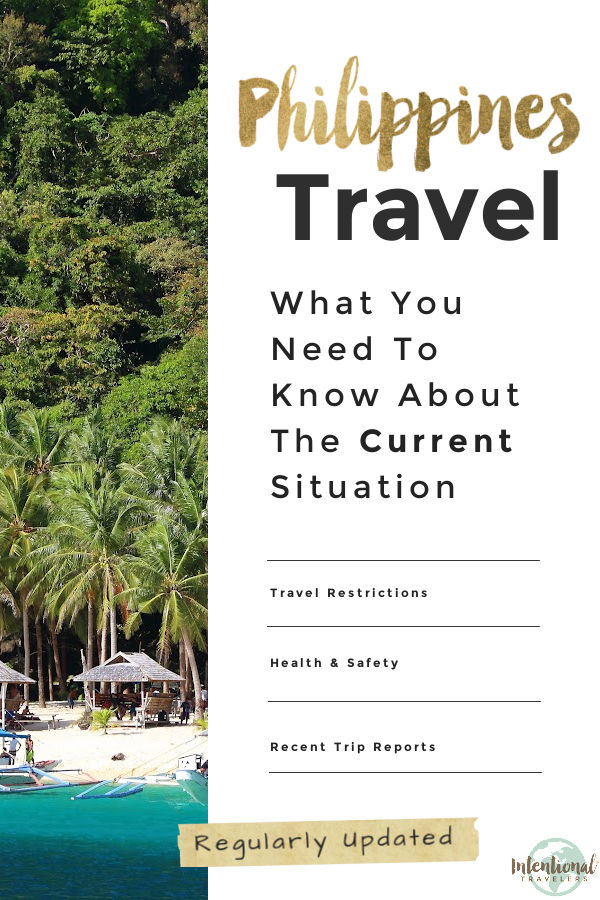
Disclaimer: Please note, travel restrictions change frequently. Readers must take responsibility for verifying information through official sources like the State Department and CDC, in respect to their specific situations. No responsibility can be accepted by Intentional Travelers for action or inaction as a result of information provided through IntentionalTravelers.com. Any information provided here is issued as general information only.
Similar Posts

What to Do in Huế, Vietnam on a Budget
Huế can be a great stop for travelers on a central Vietnam itinerary. In this post, we’ll cover the best things to do in Hue, where to stay, and what to eat on a budget. Visiting Hue, Vietnam Once the national capitol and home to the royal Nguyen family, much of the Imperial City was…

Our Favorite Alternatives to Travel Wallets
When it comes to exploring new destinations, we all want to be worry-free and secure. While traditional hidden travel wallets have been the go-to solution, we find they leave much to be desired. The discomfort of hanging wallets around our necks or dealing with bulky waist options led us to look for alternatives. In our…

Hoi An Tour Recap
Last week we hosted 6 guests for their very first trip to Vietnam. The week went better than we could have imagined. We enjoyed it so much that we’re going to do this again in the near future (more on this later). Our goals for this trip were: to help orient our guests to traveling…
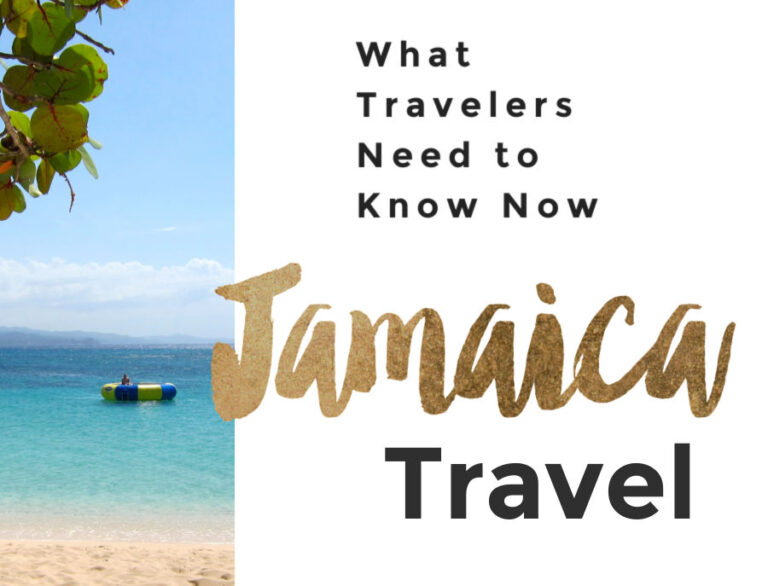
Jamaica travel requirements 2024: What travelers need to know
We aim to keep this post updated about Jamaica travel in 2024 with official Jamaica travel restrictions, requirements, and health and safety guidance. Our goal is to help you make informed decisions so you can travel confidently, safely, and responsibly in this new post-pandemic world of ours. Jedd and I lived in Jamaica for two…
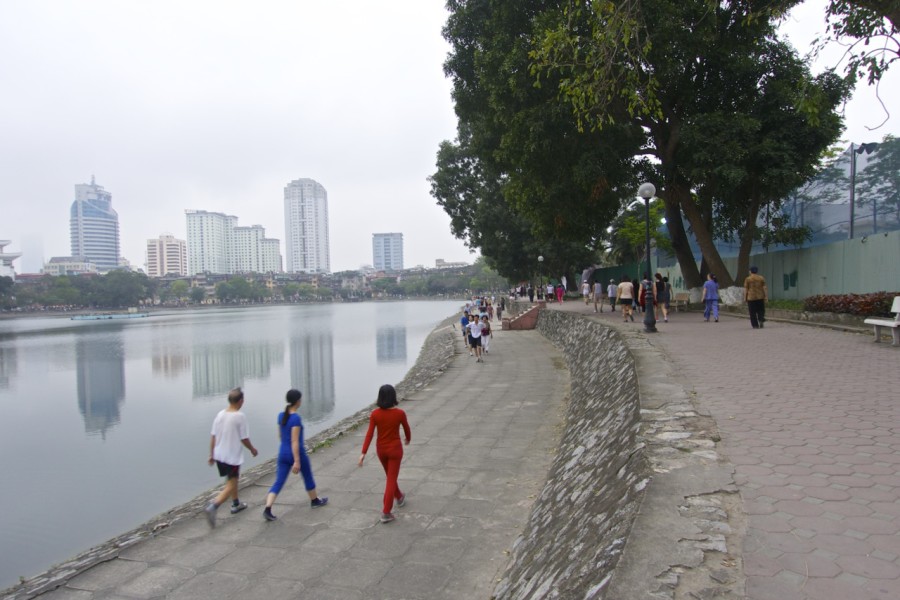
Staying Fit in Hanoi, Vietnam
No matter where we go around the world, it’s important to us to maintain a regular exercise habit. This can sometimes be a challenge on the road, but thankfully in Hanoi, there weren’t too many barriers. Our Morning Work Outs in Hanoi Our morning work outs fell under one of two approaches: 1. Doing work out…

Top 10 must-try street foods when traveling Penang, Malaysia
Coming to Malaysia, visitors will never want to ignore Penang, the city with the most delicious street food in the country. This district is also called the world’s “heaven for food.” Penang has a lot of delicious dishes in colorful culinary style. It is a harmonious blend of Chinese, Indian, the West and of course,…
84 Comments
We have booked a trip to the Philippines next month. We have not been vaccinated for covid19, Earlier it was mentioned that we had to take a corona test to enter the philippines. Last weekend all corona measures in the Philippines were scrapped, see source: https://pco.gov.ph/news_releases/pbbm-lifts-state-of-public-health-emergency-throughout-ph-due-to-covid-19/
I don’t want any surprises, Can you please confirm to me if we need to take a corona test to fly to the Philippines (from Madrid) or if it is therefore not necessary anymore now. In addition, I am also asking for more clarity on the inernal movements.
Hello Falko. Since the State of Public Health Emergency has been lifted in the Philippines, all rules and restrictions due to Covid 19 are no longer in effect. This means that you are no longer required to present a negative Covid test to enter the Philippines. For traveling within the Philippines, restrictions are also no longer in effect. However, it is still advisable to check your destination’s local government unit (LGU) official website or Facebook page for the latest travel guidelines. You may also check for the latest COVID requirements by destination through this websites: https://www.philippineairlines.com/covid-information-hub/covid-requirements
Hello, I’m a little confused on one issue. I’m a US citizen unvaccinated and would like to fly to the Philippines. I know what tests, etc I need to actually fly to the philippines, but what is not clear to me based on conflicting information is will I be required to take another covid test on arrival if the 24 hour one taken before flight was negative? One thing I don’t want to happen is discover I have to have another one when I arrive as I really hate them since they are so unnecessarily intrusive, and I’ve read some places that you will need a second one on arrival regardless of the results of the preflight test. I would be flying to Cebu. Thank you for your time.
Hello Sam, thank you for visiting our blog. According to the current entry rules , unvaccinated or partially vaccinated “travelers 15 years and older who fail to present a negative pre-departure testing shall be required to undergo a laboratory-based Antigen Test UPON ARRIVAL at the airport.” Therefore, if you can provide a valid and negative pre-departure Covid test when you arrive in the Philippines, then you will no longer have to test upon arrival at the airport.
Thank you for answering my question, that is good news. Just one other question please. Where do I look to find what remotely supervised covid tests are accepted by Philippines government on arrival since I don’t want to take a test in a clinic?
Hello Sam. Unfortunately, we cannot find updated information about remotely supervised tests accepted by the Philippines. It seems like no updates have been published but we’ll let you know if we find updated information regarding this. You may also contact the Philippine Department of Tourism official Facebook page or a Philippine embassy near you to get information about remotely supervised tests.
Is a negative COVID test result required for return travel from the Philippines to the United States?
Hi. Regardless of departure point, test results are not required going to the US, and as of this month (May 2023), noncitizen nonimmigrant air passengers no longer need to show proof of being fully vaccinated either.
I will be on vacation soon in the Philippines and resorts (specifically at Pico de Loro, Batangas and Los Banos, Laguna) still require a certified negative covid-test for stay. Where can I get this certified covid-19 rapid antigen test?
Hello Yeen. Thank you for visiting our blog. You can see the list of licensed Covid 19 testing facilities in the Philippines here: Philippine Department of Health Licensed Covid-19 Testing Laboratories
I am traveling to the Philippines in July 2023. I see that the Philippines currently still requires a negative Antigen Test for entry. Once a traveler has entered the country and wants to travel to different locations (such as Tacloban, Cebu City, Bohol, etc.) does a traveler have to provide a clean test at every domestic airport in the Philippines to board the plane if I stayed at each different location for 3-5 days? I need clarification as the domestic air carriers (Cebu Pacific, Air Asia, etc.) indicate that you need at least a negative Antigen Test to board on their websites. Any comments from recent travelers in the Philippines would be helpful. Thank you
Hi Greg. It is correct that the Philippines still require proof of a negative COVID test for entry if a traveler is unvaccinated or partially vaccinated. For travel within the Philippines, most destination no longer require a negative test for domestic flights. However, please note that some destination may still require a negative test and other documents for domestic travel depending on the local authorities’ regulations. We recommend that you check your destination’s local government unit (LGU) official website or Facebook page for the latest travel guidelines and requirements.
You may also check for the latest COVID requirements by destination through these websites: https://www.cebupacificair.com/pages/travel-info/covid-travel-reminders/travel-document-requirements?lang=en-PH https://www.philippineairlines.com/covid-information-hub/covid-requirements
We hope this helps and thank you for visiting our blog!
Hello, we are scheduled to go to the Philippines February 1st. We will be flying to japan January 27th and then from japan to Manila February 1st. Then from Manila to Boracay on the 2nd of February. We are American us citizens unvaccinated. What are the requirements and regulations for us? Will we be allowed to go with the new covid laws?
Hello Vee. Thanks for visiting our blog. Based on the current travel requirements and your status as an unvaccinated U.S. citizens, the following are the requirements you need:
For travel to Japan, you will need to provide a pre-travel COVID-19 test conducted within 72 hours prior to departure from the country/region of origin. You may check the Japan Ministry of Foreign Affairs webpage or the U.S. Embassy in Japan webpage for details.
For travel to the Philippines, you will need the follwing: – negative Antigen test certificate from a clinic conducted within 24 hours of departure from the country of origin – complete a BOQ e-Health Declaration Card (e-HDC), including children – passport valid for at least six months at the time of arrival – return or outbound ticket to your country of origin or next country of destination.
Once you’re in the Philippines, the requirements to travel to Boracay are the following: – Tourist Arrival Form – Confirmed Boracay Hotel Booking slip/voucher – Passport (for Foreigners)
You may also contact the Boracay/Aklan Tourism facebook page for more details.
Hello, we are Polish Filipino marrige and we are not vaccinated. We are planing to Visit Philipinnes in the middle of January 2024. Do you think it will be still required to do the PCR covid tests before travel? Since I read about Thailand, Laos, Vietnam is already fully open (no covid tests, no vaccinated etc). When they will fully open the Philippines? Regards
Thanks for visiting our blog. We don’t have any special information about the government’s future plans about travel restrictions, however, we will be sure to update this post when we see that anything changes.
Hello there, i am filipino-american citizen. I am unvaccinated and my vacation and my 4yo son to cebu by october. What are the restrictions for us since we don’t want to get vaccinated. From cebu international airport do we have to book a hotel for quaratines that are doh accredited and for how many days? Is it possible to choose our own place to stay while waiting for pcr test? And also does me and my son need a pcr test before we travel to Philippines? And also do we need return ticket or not needed? Hope to hear your response. Thank you
Hi Isabel. Thanks for visiting our blog! The current restriction states that foreign nationals (including Balikbayans) visiting the Philippines without a visa must be vaccinated. Unfortunately, you won’t be allowed entry into the Philippines based on the current rules. The same goes for your 4-year-old son since he will follow the rules that are applicable to you. However, if you will enter the Philippines with a visa or if you have double citizenship (Filipino and American) then it’s possible that you and your son may be allowed entry. We recommend that you contact or visit the Philippine Embassy in your area to see if there are any exemptions applicable to you that will allow you to visit the Philippines. Hope this helps.
Hello hoping to travel to the Philippines but I am unvaccinated are they open for unvaccinated foreign travelers yet?
Hi Mark. You’ll find the answer to that in our post and we’ll continue to update it as rules change.
Please note that on the PAL site ( https://www.philippineairlines.com/en/covid-19/arrivingintheph ) it states that valid return ticket(s) to the original port of origin or next port of destination for not more than 30 days from the date of arrival in the Philippines is/are required. Since I want to go for 3 months can I assume this is now impossible? Please help
Hi Norman! Thanks for visiting our blog. Tourists entering the Philippines visa-free are allowed to stay for not more than 30 days. Thus, the need for a valid return ticket to your country of origin or your next destination dated not more than 30 days from the date of arrival in the Philippines. If you want to stay in the Philippines for more than 30 days, you will need to apply for a Philippine tourist visa. You need to contact the Philippine Embassy or Consulate near you for information on how to apply for a Philippine tourist visa. I hope this helps.
I am a Filipino citizen with Philippine passport and vaccinated, I will be traveling with my family to Philippines – my husband american citizen fully vaccinated, but my 1.5 yrs old son also american citizen and not vaccinated. We are just planning to stay in the Philippines for 1 week just for my son to meet my parents. My question is, will he/we still need to be in quarantine? Thanks
Hi Camille. Thanks for visiting our blog. According to the Philippine’s quarantine rules, children below the age of 12 who cannot be vaccinated must follow the quarantine protocols of the parents traveling with them. Since you and your husband are fully vaccinated and do not need to quarantine, your son is not required to quarantine as well. You may also contact the Philippine Bureau of Immigration for more information regarding entry requirements.
I heard the quarantine laws recently changed. I am a US citizen fully vaccinated. I have two questions…
1) Do I still have to quarantine? 2) Will I be admitted with a work visa?
Thanks for visiting our blog. If you are traveling to the Philippines from the United States and fully vaccinated, you still need to quarantine at a government approved facility until the result of a RT-PCR test taken on the 5th day of quarantine is released. If the result is negative, you’ll be allowed to continue the quarantine at home until the 10th day. You can check the post for more details about quarantine rules in the Philippines. Regarding your work visa, if it is valid and existing, then you may be allowed to enter the Philippines. We advise that you contact the nearest Philippine Embassy or Consulate in your area to get more information and before attempting travel.
Travel to the Philippines My legal wife is an ex-Philippine citizen having been “required” to give it up on becoming a Canadian citizen, more years ago than I’m “allowed to divulge”! I’m a naturalized Canadian citizen originally from the UK, a few years ago shall we say! Am I correct in believing my wife can travel “home” without a pre-authorized but will we granted a “tourist” visa on arrival, and that I may accompany her getting a “balikbyan” visa on arrival?
Vaccine “Combo” Canada considers us “fully” vaccinated against COVID-19 with 1st Dose Pfizer-BioNTech & 2nd Dose Moderna Mrna vaccines, but is this “combo” accepted by the Philippines?
Vaccination-Quarantine I understand that as we are “fully” vaccinated we will be required to “reside” at a hotel for 7 days with a PCR test on Day 5, and if the PCR test is clear we can then shorten the full 14-day period to 10 days? Can the hotel be “of our choice” if that hotel provides such facilities, or are their only “designated” hotels to choose from? At the hotel do we have full access to its facilities such as swimming pool etc if open, or are we “imprisioned” in our rooms for the duration?
Post-Quarantine Travel in the Locale Are there any restrictions for “ALL” in moving around the locale to say attend golf courses if open, and can we travel by public transport. Are there any “AGE” restrictions as we are seniors, although the exact ages are a “closely guarded secret”!
Travel to Provences On arrival into Manila can we “immediately” transfer to the domestic airport for travel to the Provences for quarantine, or do we have to quarantine in Manila before moving on?
Best wishes William & Lourdes
Hello, William and Lourdes, and thank you for visiting our blog. These are important questions you have, and travel restrictions can certainly be confusing, not to mention constantly changing. We are only able to track a limited set of scenarios, which we post for free on the blog. To answer specific questions beyond what’s in our post, we would recommend working with a travel agent to ensure your trip needs are met. We’ll also see where we can better clarify some of the information in our post in the coming days. Best regards.
I would like to get a visitor visa for the Philippines as I plan to marry my fiancé who is a Philippine resident in January 2022. Can you guide me to websites so that the visa process for the Philippines can be simplified if that is possible, or inexpensive visa service for the Philippines? Thank you for any help you can provide me. Anthony
Hi Anthony. Thank you for your question. As we do not have personal experience using a visa service ourselves, we can only recommend doing a web search for “philippines visa services” and checking for recent user reviews. Perhaps one of our other readers will be able to chime in with a suggestion in the future.
Hi – Is there a quarantine exception offered for emergency travel from the U.S. (fully vaccinated) such as caring for sick/dying family member?
Thanks for visiting our blog. We are not aware of emergency exceptions at this time. With the many changing rules, we have to focus on those that apply to the majority of travelers, so a travel agent or visa service that specializes in the Philippines may be more help for specific scenarios or exceptions.
Hi! Fully vaccinated foreign travellers who have been in a green list country for at least 14 days are allowed to enter the Philippines without any problems as long as they quarantine 7 days in an approved facility, right? So for me who live in Italy, the only way I can currently access the Philippines would be to travel to Albania (green list country) right after I get my second dose, stay there 2 weeks and then fly from Albania to the Philippines.
Hi Andrea, thank you for visiting our blog. That is a very good question. The Philippines’ green lane was created to lessen the quarantine period of fully vaccinated individuals who are allowed to enter in the Philippines. Therefore, it is important to determine first if you belong to any of the traveler categories who can enter the Philippines. For foreign citizens, you must have a valid and existing Philippine visa. If without a visa, you must be a former Filipino or a family member traveling with a former Filipino. You can check the complete details of who can enter the Philippines here .
If you are one of those travelers who are allowed to enter, fully vaccinated, and traveling from Albania or any of the countries in the Philippines’ green list, the quarantine period would only be 7 days.
Hi Ailene and thank you for your kind reply. I guess I will need a visa and probably an exemption document which I have now idea how to get and if there are any requirements I don’t think I meet them anyway since the purpose of the trip would be to visit my girlfriend hence why I am considered as a mere tourist.
I’m from Arizona currently looking for a way to travel to the Philippines ASAP to marry my fiance. I have my vaild US passport, however found myself needing a tourist visa with a possible certificate of entry as well..would you recommend going through a travel agency, a family member who is Filipino, or waiting for the covid travel restrictions to be lifted? Point me in the right direction or any vaild news will be greatly appreciated. Thanks & God bless.
Hi Chris. Without a valid and existing visa, you would need to wait for restrictions to change. We’ll be sure to update this post as we get more news. In general, we do recommend working with a travel agent who is familiar with Philippine visas to help navigate the ever-changing travel situation these days.
Chris You and so many others are in the same situation. I am looking into flying my Fiance to another country, (Mexico, Columbia or Costa Rica) Getting married there Then fly back together on a Balikbayan Visa.
Hi! We want to visit Philippines in February. If we are vaccinated with 2 doses do we still need to do a covid test? We need to fill out a form before entering the Philippines? but for Boracay? Thank you!
Hello Cristina! Based on the current Philippine travel rules, a booster is no longer required for entry, therefore, you no longer need to provide a negative Covid test. However, you need to register on the Philippines eTravel website and you can register up to three days in advance of your departure. For Boracay, a filled out tourist arrival form, hotel booking, and passport for foreign tourists are required. You can check details here or you may contact the Aklan government through their Facebook page for additional information.
Hi! I was just wondering, are fully vaccinated senior citizen (60 years and older) coming from Canada allowed to enter Philippines? Are there any travel restriction for their age group? Thanks a lot!
Thanks for visiting our blog. We’ve been focusing on requirements primarily for US citizens, as it can vary by country and it’s a challenge to track all the changes. I would double-check with the Canadian State Department and/or a travel agent for more specific guidance. It’s my understanding that the age group restrictions don’t apply for entering the country but rather for going out and about once there – so far this has only been relevant to Philippine residents and will likely change with local vaccination rates eventually.
Hi, thank you for a really good blog. I am fully vaccinated norwegian man, and I wonder if you know anything about when it will be possible to travel to the Philippines. Cebu is a possible destination. If you dont know, because I think no one can know for sure now, what will be your educated guess. I have a close friend I want to visit there.
I’m glad you’ve found our blog helpful. I wish we had more insight as to when things will open up more. Some countries in Southeast Asia have indicated that they may wait until a majority of their own population is vaccinated, so it really is uncertain. We’ll do our best to provide updates here as they come out.
I am a fully-vaccinated US citizen. Do I understand correctly that I can fly into Cebu with no quarantine requirements? What covid-related requirements would I be subjected to (e.g. tests, etc). Thank you!
Hi James. Thank you for visiting our blog. Travelers flying in directly to Cebu don’t have to quarantine at the hotel, provided that they receive a negative test result conducted immediately upon arrival at the airport. Please note that this is applicable only to permitted foreign nationals. We recommend that you contact the local government of Cebu or the Cebu-Mactan International Airport for complete details and requirements. Also, as of today, only US citizens with visa, US citizens who are former Filipinos, and US citizens who are family members and traveling with a Filipino citizen or former Filipino are allowed entry in the Philippines. Please see the Philippine Bureau of Immigration page for complete details. It is also advisable to contact the Philippine Embassy or Consulate in your area for more information and before attempting travel.
My daughter was born in Manila in 2020. What do i need to do to get to the philippines? The philippines embassy in los angelas doesn’t replay to my emails and nobody picks up the phones. please help
Hello and thank you for visiting our blog. We do our best to provide regularly updated information on this post for free to the public, as our small team does not have capacity to provide individualized advice for everyone who requests. If you’re not able to find what you need in the details of our post or through the official resource links we have provided above, many travelers are finding this type of support through travel agents.
I’m from Canada and I’m also a citizen here. I don’t understand why United States citizen foreigners are allowed in the Philippines but not Canadians when their country is much worse with the current situation with the covid virus. Or are Canadians allowed also? Thank you.
Hello and thanks for visiting our blog. Because the majority of our blog readers are from the US and rules do vary by country and change frequently, we have chosen to focus on restrictions for Americans in this particular post. This does not mean other nationalities are excluded from entering the Philippines. I would suggest checking the Canadian State Department website for details that apply to your home country.
Thanks for all the info! Hoping to head to the Philippines December of this year, of course plans are put on hold until then.
I’m planning a trip in August. Do you think the borders will be reopened? If so, I want to go to Iloilo directly, can I quarantine there instead of Manilla even though I have a 1h change (stopover because of a direct flight with terminal as Iloilo) of plane there? Thank you
Hi. Thanks for visiting our blog. We do our best to keep this post updated as things change, but we don’t have any special insight as to when changes will happen in the future. For advice on specific trip questions that you can’t find in our post, we recommend seeking a professional travel agent. Safe travels.
My American boyfriend planning to come and meet me this coming month of July. He should get a visa in US before coming here in the Philippines or he could get a visa when he landed here in the Philippines then? His destination will be in Kalibo, Aklan. Any idea about the protocols travelling to Kalibo, Aklan? And if he need to be quarantine for 14 days? He’s already fully vaccinated with Moderna vaccine. He is also tested in Covid and had a negative results. Thank you.
Thank you for visiting our blog. Traveling to the Philippines without a visa, unfortunately, that has been temporarily suspended because of the pandemic so he would need to arrange a visa before traveling. You can find details on the Philippine Bureau of Immigration Facebook page . Please note that we are not able to advise travelers regarding specific situations outside of the free information we already provide above. If you’re not able to find answers for your particular trip in our post, we recommend working with a professional travel agent to ensure your personal trip needs are met.
I’M TRYING TO TRAVEL IN JULY IS IT POSSIBLE FOR ME TO VISIT MY FAMILY. I’M AN AMERICAN CITIZEN BUT FORMERLY FILIPINO CITIZEN. FULLY VACCINATED AND JUST GOT SWAB FOR COVID 4 TIMES ALREADY. THANK YOU
Hello and thank you for visiting our blog. We do our best to provide regularly updated information on this post for free to the public, as our small team does not have capacity to provide individualized advice for everyone who requests. I hope you’ll find what you need in the details of our post or through the official resource links we have provided above. If you need further assistance, many travelers are finding this type of support through travel agents.
i don’t know how accurate your info is as i work with a filipino here in the US and he watches Philip news online and told me that if you fly into Cebu which is where i go not Manila that you get a temp check at the airport and only have to quarantine for 1 day not 14 like u said, also can you answer this question. I being a American and traveling with a passport the bureau of philippines website said if your traveling to the PI for less then 30 days you don]t need a tourist visa just your passport…any truth to that?? Thanks
Hi Will. As a general rule, a mandatory quarantine of 7-14 days is required for persons traveling to the Philippines. In the Province of Cebu, it is true that quarantine is no longer a requirement as of March 31, 2021. However, this is only for repatriated Overseas Filipino Workers (OFWs) and returning non-OFWs. You can visit the Cebu Provincial Tourism Office page for more information about this.
About traveling to the Philippines without a visa, unfortunately, that has been temporarily suspended because of the pandemic. Please check the Philippine Bureau of Immigration Facebook page for information and updates on who are allowed entry into the Philippines at this time.
Thank you so much for the information, that helps a lot….can’t wait to be there, but I know it may get delayed again. Just as long as everyone is safe and protected I can wait. I love the Philippine people, such beautiful souls.
I have rescheduled my trip from USA Arizona to Lapu-Lapu city where I will be staying with my friend who lives there this coming August….4th time rebooking since COVID. I will be there for 3 weeks. I have my COVID vaccination already and got a Hepatitis A vaccine. Do you know what other vaccines are required? Also, will I need to get a Visa since I am on a limited stay? Been trying to get there since last May, but want to be safe for everyone there. I am so looking forward to being with my friend this has been 2 years in the making. Thank you for any information you can give.
Hi Kenneth. I hope your trip will finally come to fruition. As you know, it’s still a difficult time to plan travel and the situation continues to change month to month. According to the State Department, U.S. citizens must have a visa to enter the Philippines for all travel purposes. The best place to find vaccination requirements and recommendations would be through the CDC: https://wwwnc.cdc.gov/travel/destinations/list
I am a Physician in Mexico with a Philippine wife. She is returning there on May 2. I am wondering what I need to travel only to Manilla in June or July only to accompany her back to Mexico. I would have no problem staying at motel around Manila for the approximately 30 days that I will be there. Any help on this ?
Hello and thanks for visiting the blog. Your ability to enter the Philippines as the spouse of a Filippino citizen in June/July will depend on whether the suspension is lifted for foreign nationals. We will do our best to update this post as the situation changes. Please refer to our post for other protocols and recommended hotels for quarantine in Manila. For further assistance, you may wish to work with a travel agent.
Planning to come home to the Philippines on May from a very long time (1982) since I left PI.. I am now a Us Passport holder, am I qualified as a Philippine balikbayan? Do I need to get a Philippine visa? Is my husband the same?
Hi Nimfa. Thanks for visiting our blog! Under the Philippines Balikbayan Program , you are considered a “balikbayan”. You can visit the Philippines and stay for 1 year without a visa. Your husband can also get the same privilege as long as he is traveling with you.
However, please take note that traveling to the Philippines has been recently suspended until April 19, 2021. Check our blog for updates on who will be allowed entry in May. We also advise that you contact the nearest Philippine Embassy or Consulate in your area for more information and before attempting travel.
With vaccines starting to arrive in PI and some places starting to make roll out plans- Any idea when tourist visas will start to be processed again and citizens will be able to take a trips out of PI?
Hi Dan. Thank you for your question, but I’m afraid we don’t have any special insight about when the Philippines will make changes to travel protocols.
i am now in the us, i left manila last march and coming back in april, do i still need to book a hotel for quarantine? most articles i see are for ofw’s and balikbayans.
also, do you know kung sino sasagot ng food ng magku-quarantine? coz hindi makakalabas yun tao to buy food and water. just wondering.
Hi Cher. Yes, you still need a confirmed booking at any accredited quarantine hotel in Metro Manila for at least 7 days (or 6 nights) from the date of your arrival. This is to accommodate the schedule of your RT-PCR test (which will be on the 5th day) and the release of the result. Your food during your stay at the hotel will be at your own expense. You may also have food from outside the hotel delivered to your room, but you need to check with the rules and regulations of the hotel first if it is allowed.
You may check the Philippine Airlines or the Philippines Travel website for the complete guidelines. I hope this helps.
Hello Is there a list of the hotels like in Manila or Subic that might be quarantine hotels and what the costs would be for the 14 day duration. .
Hi Bob. The current list of accredited hotels by the Bureau of Quarantine can be found here: http://quarantine.doh.gov.ph/facilities-inspected-as-of-february-18-2021/ You would need to look up the costs for individual hotels that interest you.
What is the best website to get Current travel updates for traveling to the Philippines this spring if possible.
Hi and thanks for visiting our blog. We are doing our best to update this post on a weekly basis with current information about travel to the Philippines. Your home country’s State Department website is probably the most reliable source. To get an official answer for your Spring travel, you can contact the nearest Philippine Embassy or Consulate (if in the United States).
The Philippine Airlines website is the most up to date regarding travel restrictions.
If one has had a coronavirus vaccine in the US, can one come to the Philippines without the need to quarantine and have the Covid test? I should have my second round of the Moderna vaccine on March 4th. Could I travel to the Philippines shortly after that time if I have a card proving that I had the vaccine?
That is a good question and I think many are wondering the same thing about other destinations as well. We can’t predict when the Philippines will reopen to travelers, nor what they will choose to require in terms of vaccines. From what I’ve read, I would guess that most destinations will continue to require a Covid test regardless of the vaccine since the timeline for immunity after vaccination is still uncertain.
I look forward to the country opening again. It is certainly one of my favorites!
Can I book myself on June or July to go to manila since they ( Department of Tourism ) mencioned that they will reopen the country for international tourism around June so ????
Hi Ricardo. We cannot predict if you’ll be able to fly into Manila at that time. What we personally are doing is making sure any flight we book is fully refundable, or can at least be changed to a later date without change fees if travel is not allowed for our original flight date. This will depend on the particular airline’s terms and conditions.
Do you know when is the date or anything that the Philippine government is gonna let foreigners for tourism cause I’ve been planning this trip for a year and its getting the people so angry that we cant go to the Philippines and nobody can give me a straight up answer.
Hi Clint. Thanks for your question. We know how frustrating it can be to have travel plans up in the air. Unfortunately, most countries do not have set dates for opening tourism yet because so much depends on ever-changing situations, both domestically and internationally.
Covid is spreading rapidly and nobody is vaccinated there stay home and keep you and the Philippines safer
The Philippines has no intention of opening up to tourism any time soon. The president has said that when the country is between 70 to 80 percent vaccinated it will reopen the country it currently is at 19%. So if you want to take a vacation start thinking of an alternative destination or your going to be waiting for at least a year.
Leave a Reply Cancel reply
Your email address will not be published. Required fields are marked *
This site uses Akismet to reduce spam. Learn how your comment data is processed .
- Skip to main content
- Skip to "About this site"
Language selection
Search travel.gc.ca.
Help us to improve our website. Take our survey !
COVID-19: travel health notice for all travellers
Philippines travel advice
Latest updates: Editorial change
Last updated: June 19, 2024 12:26 ET
On this page
Safety and security, entry and exit requirements, laws and culture, natural disasters and climate, philippines - exercise a high degree of caution.
Exercise a high degree of caution in the Philippines due to crime, terrorism and kidnapping.
Western Mindanao - Avoid all travel
- Lanao del Sur
- Lanao del Norte
- Maguindanao
- Misamis Occidental
- South Cotabato
- Sultan Kudarat
- Zamboanga del Norte
- Zamboanga del Sur
- Zamboanga Sibugay
Central and Eastern Mindanao - Avoid non-essential travel
- Agusan del Norte
- Agusan del Sur
- Davao de Oro
- Davao del Norte
- Davao del Sur, excluding Davao City
- Davao Occidental
- Davao Oriental
- Misamis Oriental
- Surigao del Norte, excluding Siargao Island
- Surigao del Sur
Back to top
Mindanao island
Extremists have been active in the southern Philippines for several years.
Although local authorities have demobilized some of violent extremist groups in the recent years, there's still a risk of terrorist attacks and kidnappings, especially in the following regions:
- Bangsamoro Autonomous Region in Muslim Mindanao
- Zamboanga Peninsula
- Sulu archipelago
Bombs causing deaths, injuries, and property destruction have exploded in public areas of major centres, including the cities of:
- General Santos
Clashes may occur between insurgent groups and security forces.
There's a risk of being in the wrong place at the wrong time. The Government of Canada's ability to provide consular assistance is limited if you get stranded in this area.
If you chose to travel in the southern Philippines despite this advisory:
- remain indoors as much as possible
- be aware of your surroundings at all times
- avoid crowded places
- always travel with identification
- expect an increased security presence in public areas, especially around malls and transportation hubs
- stop at security checkpoints
- monitor local media
- follow the advice and instructions of local authorities
There is a threat of terrorism in the southern Philippines.
In recent years, the Filippino government has intensified its fight against terrorists. Counterterrorism operations diminished the capacity of terrorist groups to operate in the Philippines. However, militants remain in the country even if attacks are less common.
Terrorist have carried out attacks, including in major cities and places visited by foreigners. Attacks are far more frequent in Western Mindanao, where government forces and rebel groups clash.
Further attacks may not be ruled out. Targets could include:
- government buildings, including military and police installations
- places of worship
- airports and other transportation hubs and networks
- public areas such as tourist destinations, restaurants, bars, coffee shops, shopping centres, markets, hotels and other sites frequented by foreigners
Always be aware of your surroundings when in public places.
Be particularly vigilant during the following:
- sporting events
- religious holidays
- public celebrations
- major political events, such as elections
Terrorists have used such occasions to mount attacks.
There is a threat of kidnapping across the country, including in Metro Manila. In coastal areas, criminals target individuals on private boats, in marinas and resorts. They have also kidnapped cargo vessel crews.
Kidnappings are usually for ransom, targeting both local and foreign nationals perceived to have money. Criminals have killed some victims.
While in the Philippines:
- maintain a high level of vigilance and personal security awareness at all times
- stay in reputable accommodation with adequate security measures
- report any suspicious behaviour to security forces
- if you are abducted, comply with the kidnappers' demands and do not resist
Crime remains a serious concern throughout the country.
Violent crime, such as armed robbery, sexual assault, and murder, occur regularly. Gangs are active, including in Metro Manila.
The possession of guns and other weapons is common and poorly regulated. Arms trafficking is a significant problem throughout the country and criminals have attacked foreigners, even in wealthy neighborhoods.
- Be aware of your surroundings at all times
- Avoid showing signs of affluence
- If threatened by robbers, don't resist
Petty crime
Petty crime, such as pickpocketing, swarming and bag snatching, occurs, especially in urban areas.
- Ensure that your belongings, including your passport and other travel documents, are secure at all times
- Be careful in crowded shopping malls and other public places
- Avoid carrying large sums of money
- Keep valuables in safe place
- Keep backpacks and bags away from traffic, as motorcyclists may grab them from pedestrians, sometimes causing injury
- Beware of friendly strangers offering to take you around town or on an excursion
Spiked food and drinks
Some criminals have drugged and robbed tourists travelling alone after an invitation to visit a tourist attraction.
Snacks, beverages, gum and cigarettes may contain drugs that could put you at risk of sexual assault and robbery.
- Be wary of accepting these items from new acquaintances
- Never leave food or drinks unattended or in the care of strangers
Credit card and ATM fraud occurs frequently. Illegal electronic devices are sometimes attached to ATM card readers, enabling them to record information such as the user's PIN.
Be cautious when using debit or credit cards:
- pay careful attention when your cards are being handled by others
- use ATMs located in well-lit public areas or inside a bank or business
- avoid using card readers with an irregular or unusual feature
- cover the keypad with one hand when entering your PIN
- check for any unauthorized transactions on your account statements
Overseas fraud
Online financial scams
Internet is frequently used to initiate financial scams. Scammers often use fake profiles to target Westerners and steal from them. Once they succeed in building a virtual relationship, they ask for money for various purposes. This could include business or financial opportunities such as:
- money transfers
- lucrative sales
- gold purchase
- inheritance notices
- bank overpayments
If you intend to do business in the Philippines:
- ensure that any business opportunity is legitimate before leaving
- don't travel to the Philippines with the intention to obtain restitution after losing money to a fraud
Internet romance
Internet romance is also common. Victims of this type of scams have lost thousands of dollars. Before travelling to the Philippines to visit someone you met online:
- keep in mind that you may be the victim of a scam
- inform yourself about the country's customs and laws on conjugal relations and marriage
- be sure to retain possession of your return plane ticket, money, and passport
Child abuse
Locals with children may befriend single male tourists and then accuse them of child abuse to extort money from them.
Report any incident of crime or scams to local police before you leave the country.
Women's safety
Women travelling alone may be subject to some forms of harassment and verbal abuse.
Advice for women travellers
Demonstrations
Demonstrations take place, including in Manila. Clashes may occur between security forces and demonstrators, especially in Mindanao and remote areas of northern Luzon.
Filipino law prohibits political activities by foreigners. Participating in demonstrations may result in being detained or deported.
Even peaceful demonstrations can turn violent at any time. They can also lead to disruptions to traffic and public transportation.
- Avoid areas where demonstrations and large gatherings are taking place
- Follow the instructions of local authorities
- Monitor local media for information on ongoing demonstrations
Mass gatherings (large-scale events)
Water activities
Coastal waters can be dangerous. Riptides are common. Several drownings occur each year.
Most of the time, lifeguards are not present to supervise swimmers. Many beaches don't offer warnings of dangerous conditions.
Water pollution is also a concern.
- Seek local advice before swimming
- Avoid swimming if red flags are flown
Scuba diving
Diving schools and rescue services may not adhere to Canadian standards.
- Use only reputable dive companies
- Make sure the company offers proper safety equipment
Water safety abroad
Road safety
Road conditions.
Road conditions vary throughout the country. Some roads, including major highways, are poorly maintained. Traffic is very heavy, especially in Metro Manila.
Driving conditions may quickly become hazardous. During the rainy season, metro centres often become impassable due to flash floods.
Driving habits
Many drivers don't respect traffic laws. They are reckless. They often drive at excessive speeds or way below the speed limit on highways. Accidents causing fatalities are common. Pedestrians don't have priority over cars.
Even minor road incidents can escalate quickly and lead to violent assaults.
If driving in the Philippines:
- avoid travel outside urban areas or tourist centres after dark
- stay on national highways and paved roads
- avoid any confrontation
Most people travel using mopeds. Fatal scooter accidents involving tourists are common.
If renting a scooter or moped:
- be vigilant while driving
- avoid renting from operators who don't provide a helmet with the rental
- avoid driving on roads in disrepair
Public transportation
The safety and reliability of public transportation are poor.
Minibuses, known as jeepneys, and large buses are often old, poorly maintained, and overcrowded. Pickpocketing and armed robberies are frequent, especially in large cities such as Manila and Cebu.
Some interurban buses have also been involved in fatal accidents.
Motorcycles
Motorcycle transportation is prevalent throughout the country, whether by habal-habal or tricycle.
Habal-habal are motorcycles with extensions, which can carry several passengers at a time. They are illegal and dangerous.
Tricycles are rather a safe option as they don't drive very fast. However, vehicles may be in poor condition. They aren't metered and can be hailed anywhere.
- Don't use habal-habal
- Avoid using tricycles at night on country roads
- Agree on a fare with the tricycle driver before departing to avoid scams
Although most taxi services are safe and reliable, there have been extortion incidents from taxi drivers.
To minimize your risks:
- avoid hailing a taxi on the street
- only enter metered taxis from a reliable company and insist the meter be turned on
- prefer hotel transportation, official airport taxis, or a ridesharing app
- never share taxis with strangers
- ask for the windows being rolled up and doors locked at all times
- never hand your phone to the driver to allow them to see the map
- record the taxi's licence plate and provide the information to a relative/friend
Ferry accidents occur. Some vessels are poorly maintained and overcrowded. Accidents are more prevalent during the rainy season as storms can develop quickly. As a result, local authorities may suspend ferry services on short notice when a storm signal is raised, even if the weather is clear. You could get stranded at ports for several days.
If travelling by sea:
- use only a reliable company
- don't board vessels that appear overloaded or unseaworthy
- make sure you have access to a life jacket
- plan for extra time, especially during the rainy season
Pirate attacks and armed robbery targeting ships occur in coastal waters. You may face an elevated threat of kidnapping in waters:
- around Mindanao
- in the Sulu Sea
- in the Celebes Sea
- south of Palawan Island
- south of Negros Island
- around Siquijor Island
Mariners should take appropriate precautions.
Live piracy report - International Maritime Bureau
We do not make assessments on the compliance of foreign domestic airlines with international safety standards.
Information about foreign domestic airlines
Every country or territory decides who can enter or exit through its borders. The Government of Canada cannot intervene on your behalf if you do not meet your destination’s entry or exit requirements.
We have obtained the information on this page from the Philippine authorities. It can, however, change at any time.
Verify this information with the Foreign Representatives in Canada .
Entry requirements vary depending on the type of passport you use for travel.
Before you travel, check with your transportation company about passport requirements. Its rules on passport validity may be more stringent than the country’s entry rules.
Regular Canadian passport
Your passport must be valid at least 6 months beyond the date you expect to leave the Philippines.
Passport for official travel
Different entry rules may apply.
Official travel
Passport with “X” gender identifier
While the Government of Canada issues passports with an “X” gender identifier, it cannot guarantee your entry or transit through other countries. You might face entry restrictions in countries that do not recognize the “X” gender identifier. Before you leave, check with the closest foreign representative for your destination.
Other travel documents
Different entry rules may apply when travelling with a temporary passport or an emergency travel document. Before you leave, check with the closest foreign representative for your destination.
Useful links
- Foreign Representatives in Canada
- Canadian passports
Tourist visa: not required for stays of up to 30 days Business visa: not required for stays of up to 30 days Student visa: required
If you need to extend your stay above the 30-day visa-free period, you must get the proper authorization from local authorities before this period ends.
The visa that immigration officials issue upon your arrival in the Philippines takes precedence over any visa you may have obtained from a Philippine embassy or consulate abroad.
If you're leaving the Philippines using a temporary passport issued inside the country, consult the Philippine Bureau of Immigration to obtain the required exit stamps.
Bureau of Immigration – Republic of the Philippines
Registration
All travelers must register their entry and exit from the country in the Philippine's eTravel System within 72 hours before travel.
Foreign nationals staying in the Philippines for longer than 59 days must register with the local authorities.
You must present yourself to a Bureau of Immigration office to register your biometrics, such as fingerprinting, and obtain a special security registration number.
- Philippine E-Travel System – Republic of the Philippines
- Bureau of Immigration offices – Republic of the Philippines
Other entry requirements
Customs officials may ask you to show them a return or onward ticket.
Boracay Island
Local authorities are restricting visitors to Boracay Island.
You may need proof of accommodation in an accredited hotel to be allowed entry.
Exit requirements
Travel pass.
Foreign nationals travelling on a visa issued by one of the following authorities must present a travel pass to leave the country:
- the Department of Justice
- the Board of Investments
- the Philippine Retirement Authority
- the Philippine Economic Zone Authority
- the economic zones
Travel pass – Bureau of Immigration, Republic of the Philippines
Emigration clearance certificate
If you've been in the country for 6 months or more, you must obtain an emigration clearance certificate (ECC), also known as an exit clearance, and pay applicable fees at least 72 hours before your expected departure.
This also applies to children born in the Philippines who are leaving the country for the first time on a foreign passport.
Emigration clearance certificate – Bureau of Immigration, Republic of the Philippines
- Children and travel
Children under 15 years travelling alone need a Waiver for Exclusion Ground to enter the Philippines.
- Waiver for Exclusion Ground – Bureau of Immigration, Republic of the Philippines
- Travelling with children
Yellow fever
Learn about potential entry requirements related to yellow fever (vaccines section).
Relevant Travel Health Notices
- Global Measles Notice - 13 March, 2024
- Zika virus: Advice for travellers - 31 August, 2023
- COVID-19 and International Travel - 13 March, 2024
This section contains information on possible health risks and restrictions regularly found or ongoing in the destination. Follow this advice to lower your risk of becoming ill while travelling. Not all risks are listed below.
Consult a health care professional or visit a travel health clinic preferably 6 weeks before you travel to get personalized health advice and recommendations.
Routine vaccines
Be sure that your routine vaccinations , as per your province or territory , are up-to-date before travelling, regardless of your destination.
Some of these vaccinations include measles-mumps-rubella (MMR), diphtheria, tetanus, pertussis, polio, varicella (chickenpox), influenza and others.
Pre-travel vaccines and medications
You may be at risk for preventable diseases while travelling in this destination. Talk to a travel health professional about which medications or vaccines may be right for you, based on your destination and itinerary.
There is a risk of hepatitis A in this destination. It is a disease of the liver. People can get hepatitis A if they ingest contaminated food or water, eat foods prepared by an infectious person, or if they have close physical contact (such as oral-anal sex) with an infectious person, although casual contact among people does not spread the virus.
Practise safe food and water precautions and wash your hands often. Vaccination is recommended for all travellers to areas where hepatitis A is present.
Measles is a highly contagious viral disease. It can spread quickly from person to person by direct contact and through droplets in the air.
Anyone who is not protected against measles is at risk of being infected with it when travelling internationally.
Regardless of where you are going, talk to a health care professional before travelling to make sure you are fully protected against measles.
Japanese encephalitis is a viral infection that can cause swelling of the brain. It is spread to humans through the bite of an infected mosquito. Risk is very low for most travellers. Travellers at relatively higher risk may want to consider vaccination for JE prior to travelling.
Travellers are at higher risk if they will be:
- travelling long term (e.g. more than 30 days)
- making multiple trips to endemic areas
- staying for extended periods in rural areas
- visiting an area suffering a JE outbreak
- engaging in activities involving high contact with mosquitos (e.g., entomologists)
Hepatitis B is a risk in every destination. It is a viral liver disease that is easily transmitted from one person to another through exposure to blood and body fluids containing the hepatitis B virus. Travellers who may be exposed to blood or other bodily fluids (e.g., through sexual contact, medical treatment, sharing needles, tattooing, acupuncture or occupational exposure) are at higher risk of getting hepatitis B.
Hepatitis B vaccination is recommended for all travellers. Prevent hepatitis B infection by practicing safe sex, only using new and sterile drug equipment, and only getting tattoos and piercings in settings that follow public health regulations and standards.
Malaria is a serious and sometimes fatal disease that is caused by parasites spread through the bites of mosquitoes. There is a risk of malaria in certain areas and/or during a certain time of year in this destination.
Antimalarial medication may be recommended depending on your itinerary and the time of year you are travelling. Consult a health care professional or visit a travel health clinic before travelling to discuss your options. It is recommended to do this 6 weeks before travel, however, it is still a good idea any time before leaving. Protect yourself from mosquito bites at all times: • Cover your skin and use an approved insect repellent on uncovered skin. • Exclude mosquitoes from your living area with screening and/or closed, well-sealed doors and windows. • Use insecticide-treated bed nets if mosquitoes cannot be excluded from your living area. • Wear permethrin-treated clothing. If you develop symptoms similar to malaria when you are travelling or up to a year after you return home, see a health care professional immediately. Tell them where you have been travelling or living.
The best way to protect yourself from seasonal influenza (flu) is to get vaccinated every year. Get the flu shot at least 2 weeks before travelling.
The flu occurs worldwide.
- In the Northern Hemisphere, the flu season usually runs from November to April.
- In the Southern Hemisphere, the flu season usually runs between April and October.
- In the tropics, there is flu activity year round.
The flu vaccine available in one hemisphere may only offer partial protection against the flu in the other hemisphere.
The flu virus spreads from person to person when they cough or sneeze or by touching objects and surfaces that have been contaminated with the virus. Clean your hands often and wear a mask if you have a fever or respiratory symptoms.
Yellow fever is a disease caused by a flavivirus from the bite of an infected mosquito.
Travellers get vaccinated either because it is required to enter a country or because it is recommended for their protection.
- There is no risk of yellow fever in this country.
Country Entry Requirement*
- Proof of vaccination is required if you are coming from or have transited through an airport of a country where yellow fever occurs.
Recommendation
- Vaccination is not recommended.
- Discuss travel plans, activities, and destinations with a health care professional.
- Contact a designated Yellow Fever Vaccination Centre well in advance of your trip to arrange for vaccination.
About Yellow Fever
Yellow Fever Vaccination Centres in Canada * It is important to note that country entry requirements may not reflect your risk of yellow fever at your destination. It is recommended that you contact the nearest diplomatic or consular office of the destination(s) you will be visiting to verify any additional entry requirements.
In this destination, rabies is carried by dogs and some wildlife, including bats. Rabies is a deadly disease that spreads to humans primarily through bites or scratches from an infected animal. While travelling, take precautions , including keeping your distance from animals (including free-roaming dogs), and closely supervising children.
If you are bitten or scratched by an animal while travelling, immediately wash the wound with soap and clean water and see a health care professional. Rabies treatment is often available in this destination.
Before travel, discuss rabies vaccination with a health care professional. It may be recommended for travellers who are at high risk of exposure (e.g., occupational risk such as veterinarians and wildlife workers, children, adventure travellers and spelunkers, and others in close contact with animals).
Coronavirus disease (COVID-19) is an infectious viral disease. It can spread from person to person by direct contact and through droplets in the air.
It is recommended that all eligible travellers complete a COVID-19 vaccine series along with any additional recommended doses in Canada before travelling. Evidence shows that vaccines are very effective at preventing severe illness, hospitalization and death from COVID-19. While vaccination provides better protection against serious illness, you may still be at risk of infection from the virus that causes COVID-19. Anyone who has not completed a vaccine series is at increased risk of being infected with the virus that causes COVID-19 and is at greater risk for severe disease when travelling internationally.
Before travelling, verify your destination’s COVID-19 vaccination entry/exit requirements. Regardless of where you are going, talk to a health care professional before travelling to make sure you are adequately protected against COVID-19.
Safe food and water precautions
Many illnesses can be caused by eating food or drinking beverages contaminated by bacteria, parasites, toxins, or viruses, or by swimming or bathing in contaminated water.
- Learn more about food and water precautions to take to avoid getting sick by visiting our eat and drink safely abroad page. Remember: Boil it, cook it, peel it, or leave it!
- Avoid getting water into your eyes, mouth or nose when swimming or participating in activities in freshwater (streams, canals, lakes), particularly after flooding or heavy rain. Water may look clean but could still be polluted or contaminated.
- Avoid inhaling or swallowing water while bathing, showering, or swimming in pools or hot tubs.
Cholera is a risk in parts of this country. Most travellers are at very low risk.
To protect against cholera, all travellers should practise safe food and water precautions .
Travellers at higher risk of getting cholera include those:
- visiting, working or living in areas with limited access to safe food, water and proper sanitation
- visiting areas where outbreaks are occurring
Vaccination may be recommended for high-risk travellers, and should be discussed with a health care professional.
Travellers' diarrhea is the most common illness affecting travellers. It is spread from eating or drinking contaminated food or water.
Risk of developing travellers' diarrhea increases when travelling in regions with poor standards of hygiene and sanitation. Practise safe food and water precautions.
The most important treatment for travellers' diarrhea is rehydration (drinking lots of fluids). Carry oral rehydration salts when travelling.
Typhoid is a bacterial infection spread by contaminated food or water. Risk is higher among children, travellers going to rural areas, travellers visiting friends and relatives or those travelling for a long period of time.
Travellers visiting regions with a risk of typhoid, especially those exposed to places with poor sanitation, should speak to a health care professional about vaccination.
There is a risk of schistosomiasis in this destination. Schistosomiasis is a parasitic disease caused by tiny worms (blood flukes) which can be found in freshwater (lakes, rivers, ponds, and wetlands). The worms can break the skin, and their eggs can cause stomach pain, diarrhea, flu-like symptoms, or urinary problems. Schistosomiasis mostly affects underdeveloped and r ural communities, particularly agricultural and fishing communities.
Most travellers are at low risk. Travellers should avoid contact with untreated freshwater such as lakes, rivers, and ponds (e.g., swimming, bathing, wading, ingesting). There is no vaccine or medication available to prevent infection.
Insect bite prevention
Many diseases are spread by the bites of infected insects such as mosquitoes, ticks, fleas or flies. When travelling to areas where infected insects may be present:
- Use insect repellent (bug spray) on exposed skin
- Cover up with light-coloured, loose clothes made of tightly woven materials such as nylon or polyester
- Minimize exposure to insects
- Use mosquito netting when sleeping outdoors or in buildings that are not fully enclosed
To learn more about how you can reduce your risk of infection and disease caused by bites, both at home and abroad, visit our insect bite prevention page.
Find out what types of insects are present where you’re travelling, when they’re most active, and the symptoms of the diseases they spread.
- In this country, dengue is a risk to travellers. It is a viral disease spread to humans by mosquito bites.
- Dengue can cause flu-like symptoms. In some cases, it can lead to severe dengue, which can be fatal.
- The level of risk of dengue changes seasonally, and varies from year to year. The level of risk also varies between regions in a country and can depend on the elevation in the region.
- Mosquitoes carrying dengue typically bite during the daytime, particularly around sunrise and sunset.
- Protect yourself from mosquito bites . There is no vaccine or medication that protects against dengue.
Zika virus is a risk in this country.
Zika virus is primarily spread through the bite of an infected mosquito. It can also be sexually transmitted. Zika virus can cause serious birth defects.
During your trip:
- Prevent mosquito bites at all times.
- Use condoms correctly or avoid sexual contact, particularly if you are pregnant.
If you are pregnant or planning a pregnancy, you should discuss the potential risks of travelling to this destination with your health care provider. You may choose to avoid or postpone travel.
For more information, see Zika virus: Pregnant or planning a pregnancy.
There is a risk of chikungunya in this country. The risk may vary between regions of a country. Chikungunya is a virus spread through the bite of an infected mosquito. Chikungunya can cause a viral disease that typically causes fever and pain in the joints. In some cases, the joint pain can be severe and last for months or years.
Protect yourself from mosquito bites at all times. There is no vaccine available for chikungunya.

Animal precautions
Some infections, such as rabies and influenza, can be shared between humans and animals. Certain types of activities may increase your chance of contact with animals, such as travelling in rural or forested areas, camping, hiking, and visiting wet markets (places where live animals are slaughtered and sold) or caves.
Travellers are cautioned to avoid contact with animals, including dogs, livestock (pigs, cows), monkeys, snakes, rodents, birds, and bats, and to avoid eating undercooked wild game.
Closely supervise children, as they are more likely to come in contact with animals.
Person-to-person infections
Stay home if you’re sick and practise proper cough and sneeze etiquette , which includes coughing or sneezing into a tissue or the bend of your arm, not your hand. Reduce your risk of colds, the flu and other illnesses by:
- washing your hands often
- avoiding or limiting the amount of time spent in closed spaces, crowded places, or at large-scale events (concerts, sporting events, rallies)
- avoiding close physical contact with people who may be showing symptoms of illness
Sexually transmitted infections (STIs) , HIV , and mpox are spread through blood and bodily fluids; use condoms, practise safe sex, and limit your number of sexual partners. Check with your local public health authority pre-travel to determine your eligibility for mpox vaccine.
Tuberculosis is an infection caused by bacteria and usually affects the lungs.
For most travellers the risk of tuberculosis is low.
Travellers who may be at high risk while travelling in regions with risk of tuberculosis should discuss pre- and post-travel options with a health care professional.
High-risk travellers include those visiting or working in prisons, refugee camps, homeless shelters, or hospitals, or travellers visiting friends and relatives.
Medical services and facilities
Good medical services and facilities are limited in availability, especially outside major urban areas. Public medical clinics often lack basic resources and equipment.
Quality of care varies greatly throughout the country. Most hospitals will require a down payment of estimated fees at the time of admission. They may also require additional payments during hospitalization.
Some hospitals require patients to have a full-time caregiver. You may have to hire one if you’re travelling alone.
Emergency services are not widely available. Time response can be slow.
Make sure you get travel insurance that includes coverage for medical evacuation and hospital stays.
Travel health and safety
Some medication that can be purchased over-the-counter in Canada is illegal in the Philippines. If you bring some medicines with you, you’re responsible for determining their legality before departing. If you enter the country with drugs locally considered illegal, including prescription drugs, you may be fined or detained.
- Make sure your medicines are legal in the Philippines before departure
- Bring your own medicines, but only in quantities sufficient for the duration of your stay
- Seal and declare a separate quantity of prescription drugs before departing the Philippines if you’re travelling onward to another country
- Always keep your medication in the original container
- Carry a copy of your prescriptions as well as a letter from your physician stating the dosage and your relevant medical condition
- Pack your medicines in your carry-on luggage
Medical tourism
Canadian citizens have died or had serious health complications following cosmetic or other elective surgeries abroad.
Before leaving for medical travel:
- make sure you have done your research
- use reputable health-care providers only
Receiving medical care outside Canada
Air pollution
Air pollution can be severe in several major cities. It may affect people suffering from respiratory ailments.
During periods of high pollution:
- limit your activities outdoors
- follow the instructions of local authorities
You must abide by local laws.
Learn about what you should do and how we can help if you are arrested or detained abroad .
Penalties for possession, use, trafficking or importation, including through e-commerce, of illegal drugs are severe. Convicted offenders can expect life imprisonment and heavy fines.
Many drugs considered as legal in Canada are illegal in the Philippines. This includes cannabis, regardless of quantity and purpose of use, as well as some over-the-counter medicine and prescription drugs.
- Pack your own luggage and monitor it closely at all times
- Never transport other people's packages, bags or suitcases
Drugs, alcohol and travel
Child sex tourism
Penalties for pedophilia are severe. Under Philippine law, a child is defined as a person under 18.
Police may investigate any adult who is with:
- an unrelated child 12 years of age or younger, or 10 years or more his/her junior
- an unrelated child under age 18 inside the room of a house, hotel, or other similar establishments, vehicle, or other secluded location, and is suspected of having the intention to exploit the child sexually
Child Sex Tourism: It’s a Crime
Photography
The government prohibits any photography of official buildings or military installations that is intended for publication.
If you wish to marry in the Philippines, ensure that you're well informed regarding legal requirements. Visit the Embassy of Canada to the Philippines website for information on documents and procedures.
- Embassy of Canada to the Philippines
- Marriage overseas factsheet
To protect the environment, local authorities restrict access to Boracay Island.
Some activities are also prohibited, including the consumption of alcohol and tobacco in public places, including White Beach.
If you plan to visit Boracay, make sure you know about the rules and regulations before leaving.
Filipino law prohibits political activities by foreigners.
Attending any protest, demonstration, or political rally as a foreign national may lead to detention and deportation.
Identification
Authorities may request to see your ID at any time.
- Carry valid identification at all times
- Keep a photocopy of your passport in case it's lost or seized
- Keep a digital copy of your ID and travel documents
Dual citizenship
Dual citizenship is legally recognized in the Philippines.
If you are a Canadian citizen, but also a citizen of the Philippines, our ability to offer you consular services may be limited while you're there. You may also be subject to different entry/exit requirements .
Travellers with dual citizenship
Dual citizens must obtain a certificate of recognition from Philippine authorities to ensure the legal recognition of both citizenships.
International Child Abduction
The Hague Convention on the Civil Aspects of International Child Abduction is an international treaty. It can help parents with the return of children who have been removed to or retained in certain countries in violation of custody rights. It does not apply between Canada and the Philippines.
If your child was wrongfully taken to, or is being held in the Philippines by an abducting parent:
- act as quickly as you can
- consult a lawyer in Canada and in the Philippines to explore all the legal options for the return of your child
- report the situation to the nearest Canadian government office abroad or to the Vulnerable Children's Consular Unit at Global Affairs Canada by calling the Emergency Watch and Response Centre
If your child was removed from a country other than Canada, consult a lawyer to determine if The Hague Convention applies.
Be aware that Canadian consular officials cannot interfere in private legal matters or in another country's judicial affairs.
- International Child Abductions: A guide for affected parents
- Canadian embassies and consulates by destination
- Request emergency assistance
You can drive in the Philippines with a valid Canadian driver's licence for up to 90 days. After that period, you must apply for a local driving permit.
You should carry an international driving permit.
International Driving Permit
The currency in the Philippines is the peso (PHP).
ATMs are available in larger cities but may be scarce in rural areas. Make sure to have access to cash in local currency if you're travelling outside larger urban areas.
You may enter the Philippines with:
- up to PHP 50,000
- up to US$10,000 or other currency equivalent
You need a written authorization from local authorities for greater amounts.
Climate change
Climate change is affecting the Philippines. Extreme and unusual weather events are becoming more frequent. Monitor local news to stay informed on the current situation.
Typhoons and monsoons
The rainy or monsoon season extends from May to November, but storms can occur throughout the year. The Philippines experiences around 20 typhoons per year, mostly between June and November.
Seasonal flooding can hamper overland travel and reduce the provision of essential services. Roads may become impassable and bridges damaged. Flooding and mudslides are frequent following heavy rains, even in Metro Manila.
If you decide to travel to the Philippines during the rainy season:
- know that you expose yourself to serious safety risks
- be prepared to change your travel plans on short notice, including cutting short or cancelling your trip
- stay informed of the latest regional weather forecasts
- carry emergency contact information for your airline or tour operator
- Tornadoes, cyclones, hurricanes, typhoons and monsoons
- Philippine Weather Services and Warnings – Philippine Atmospheric, Geophysical and Astronomical Services Administration
- Nationwide Operational Assessment of Hazards – University of the Philippines
Seismic activity
The Philippines is located on the Pacific Ring of Fire and experiences regular seismic activity.
There are several active and potentially active volcanoes in the Philippines, mainly on Luzon island.
Taal is one of the main active volcanoes in Batangas on Luzon Island. It continuously shows signs of a possible eruption. The Philippine Institute of Volcanology and Seismology is constantly monitoring the Taal Volcano. Local authorities may raise alert levels and issue evacuation orders on short notice.
Volcanic activity may escalate suddenly. Volcanic ash clouds may cause disruptions to domestic and international flights.
If you are near active volcanoes:
- monitor levels of volcanic activity through the local media
- pay careful attention to all warnings issued
- follow the advice of local authorities, including evacuation orders
- be prepared to modify your travel arrangements or even evacuate the area on short notice
Earthquakes
The Philippines is located in an active seismic zone. Earthquakes occur regularly and strong aftershocks may occur after the initial quake.
Familiarize yourself with earthquake security measures in public and private buildings, including airports.
The Philippines is prone to tsunamis.
A tsunami can occur within minutes of a nearby earthquake. However, the risk of a tsunami can remain for several hours following the first tremor.
If you're staying on the coast, familiarize yourself with the region's evacuation plans in the event of a tsunami warning.
- Hazard Hunter – Philippine Institute of Volcanology and Seismology
- Philippine Institute of Volcanology and Seismology – Department of Science and Technology
- Earthquakes – What to Do?
- Latest earthquakes – U.S. Geological Survey
- Tsunami alerts – U.S. Tsunami Warning System
Local services
In case of emergency, dial 911.
Consular assistance
For emergency consular assistance, call the Embassy of Canada to the Philippines, in Manila, and follow the instructions. At any time, you may also contact the Emergency Watch and Response Centre in Ottawa.
The decision to travel is your choice and you are responsible for your personal safety abroad. We take the safety and security of Canadians abroad very seriously and provide credible and timely information in our Travel Advice to enable you to make well-informed decisions regarding your travel abroad.
The content on this page is provided for information only. While we make every effort to give you correct information, it is provided on an "as is" basis without warranty of any kind, expressed or implied. The Government of Canada does not assume responsibility and will not be liable for any damages in connection to the information provided.
If you need consular assistance while abroad, we will make every effort to help you. However, there may be constraints that will limit the ability of the Government of Canada to provide services.
Learn more about consular services .
Risk Levels
take normal security precautions.
Take similar precautions to those you would take in Canada.
Exercise a high degree of caution
There are certain safety and security concerns or the situation could change quickly. Be very cautious at all times, monitor local media and follow the instructions of local authorities.
IMPORTANT: The two levels below are official Government of Canada Travel Advisories and are issued when the safety and security of Canadians travelling or living in the country or region may be at risk.
Avoid non-essential travel
Your safety and security could be at risk. You should think about your need to travel to this country, territory or region based on family or business requirements, knowledge of or familiarity with the region, and other factors. If you are already there, think about whether you really need to be there. If you do not need to be there, you should think about leaving.
Avoid all travel
You should not travel to this country, territory or region. Your personal safety and security are at great risk. If you are already there, you should think about leaving if it is safe to do so.
Philippines eTravel Requirements for US Citizens
Philippines one-stop etravel declaration application from the united states.
Traveling to the Philippines from the United States? To ensure a smooth entry, it's vital to understand the Philippines Electronic Travel Registration (eTravel) Requirements .
Here we clarify the entry requirements for US citizens and the Philippine One-Stop Electronic Travel Declaration System application procedure .
We also break down other essential documents you'll need for a hassle-free visit.
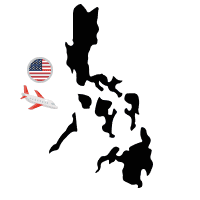
Can US Citizens Travel to the Philippines Right Now?
Yes, US citizens are permitted to travel to the Philippines .
However, you must first make sure you meet the Philippine entry requirements for US citizens.
Do US Citizens Still Need eTravel for the Philippines?
Yes, US citizens are still required to complete the eTravel Declaration for the Philippines to enter the country . It’s now officially known as the Philippine One-Stop Electronic Travel Declaration System.
Initially introduced as a COVID-19 safety measure and called the eArrivalCard, the eTravel system now serves as a traveler declaration for the Philippines. It also replaces the paper-based arrival/departure card for the Philippines.
Where Can I Register for the eTravel Philippines as a US Citizen?
US citizens can complete our Philippines eTravel Electronic Traveler Declaration form completely online using any device with an internet connection.
Here's a simplified guide to the application process:
- Access the eTravel Philippines application form
- Select Transportation Type : Choose between Air or Sea transport, and specify if you are disembarking by sea
- Provide Dates : Enter your Date of Arrival (for entry)
- Email Submission : Enter your email address for communication and verification purposes. Sign a declaration confirming the accuracy of your information
- Wait for Approval : Your application will undergo review. If approved, you will receive a PDF of your eTravel QR code via email
Once approved, you can either print the QR code or take a screenshot on your mobile device for presentation upon arrival in the Philippines.
Information US Citizens Need to Declare on the Philippines eTravel
When completing the eTravel Philippines application, you need to provide the following information :
Registration details/Transport Information
- Passport details (Number, Sex, Birth Date, Citizenship, Country of Passport, Occupation)
- Mobile Number (with country code)
- Permanent Country of Residence (Address details)
Travel Details
- Date of Arrival/Departure
- Country of Origin/Destination
- OFW status (if applicable)
- Flight/Vessel details (Name, Number, Airport/Seaport)
Destination Upon Arrival in the Philippines
- Address of accommodation in the Philippines (or select "Transit" if applicable)
- Contact information for the chosen accommodation
Health Declaration
- Information about your current health status and recent exposure to communicable diseases
Additionally, you need to pay the eTravel Application processing fee to submit the form for consideration. Please ensure all details are accurate to prevent processing delays or refusal of your request .
Should I Register for eTravel Philippines before Departing from the US?
You can complete your eTravel form for the Philippines as soon as you know your travel plans . We’ll submit it for official processing at the correct time.
Apply with philippinesetravel.com and your request will be processed in 1 to 2 days . There is also a priority service for delivery in 1 hour.
Benefits of Applying for the Philippine eTravel for Americans with Us
There are several benefits to registering with us over the government Philippine One-Stop Electronic Travel Declaration System application.
What Are the Philippines Entry Requirements for US Citizens?
US citizens can enter the Philippines visa-free for a stay of up to 30 days . To gain entry, they must have the following:
- Passport : Ensure your American passport is valid for at least 6 months beyond your intended stay. You must have at least one blank page for an entry stamp
- Return or Onward Ticket : You'll need to show proof of a return or onward ticket to another destination
- Approved eTravel Declaration : All international travelers must complete the Philippines eTravel Electronic Traveler Declaration form to travel by air or sea.
Note : The Philippine Bureau of Immigration (BI) may penalize and detain you if you stay in the country after the "admit until" date that immigration officials have printed on your passport.
Depending on the length of your stay, you may also require an approved visa . Please check Philippine visa requirements in advance to see what you need according to your travel plans.
Entering the Philippines as a US Citizen with eTravel
When planning your trip to the Philippines as a US citizen with an eTravel Declaration, you have the flexibility to select from numerous entry points . These include major international airports and seaports.
The Philippines is well-connected to the United States. Here are some of the main flight routes and their estimated journey times:
- Los Angeles to Manila: Direct flights are available and typically take approximately 13-15 hours
- San Francisco to Manila: Non-stop flights are an option, with an average travel time of around 15-17 hours
- New York to Manila: While flights from the East Coast may have layovers, the total travel time is approximately 18-20 hours
Please note that the journey times mentioned are approximate and can vary based on factors such as flight availability , layovers, and specific flight routes.
It's advisable to check with airlines for the most current schedules and travel durations when planning your trip to the Philippines.
Here’s What You Need to Know About Philippine Departure Procedures
Most of us, if not all, have been holed up inside our homes for quite some time now. That said, it’s understandable how some of us are excited to go out and get back to our travel itineraries, whether locally or abroad, for work or leisure. With this in mind, it’s important that you know the travel guidelines. In this post, we will discuss the departure guidelines in the Philippines , as shared by Philippine Airlines .
Even though the majority of the world continues to struggle with the global health crisis, it’s important that you know the existing procedures and protocols that are in effect, especially if you plan to work abroad or travel overseas for business and other important matters. Keep on reading until the end of this guide to learn more.
Table of Contents

Things to Know if You Travel Outside the Philippines
Of course, even before you consider traveling outside of the country, you need to first weigh the (1) urgency and (2) necessity of your travel. Can this wait until the situation improves? If I do not attend to this in person, what are the possible repercussions? After you consider these things and affirm the need to travel overseas, you should then be guided by these protocols before your flight:
- Register and complete the Passenger profile and health declaration (PPHD) Form thru this link: https://bit.ly/PALIntPPHD before you leave for your trip. After filling out the form, save the confirmation email and QR code.
- Health documents (including COVID-19 testing as necessary) and other travel papers are required when traveling to a destination country. Please refer to the requirements for your destination country.
Note : As these requirements may change from time to time, the advisories are only meant to be a guide and should not be relied on as a replacement for actual regulations.
- Before boarding a plane, check-in with the airport’s documentation check. The check-in process involves assessing the validity and completeness of your documents.
- Passengers are reminded to go through additional security screening before they check in. It is also suggested that they adjust their arrival time at the terminal:
- At least four hours before scheduled departure or by 8 pm latest for international flights.
- At least three hours for all international flights.
It is also best to be informed about the country’s requirements prior to your trip. Most countries now require visitors to undergo quarantine before they can enter the country. This is part of the responsibility that you need to perform before you even decide to consider traveling outside of the country.
Who Are Eligible for International Travel?
Disclaimer : The IATF has issued the guidelines on the pilot implementation of the alert levels system for COVID-19 response. This system will help prevent the spread of COVID-19 and its variants in the National Capital Region.
The following individuals are allowed to travel to any part of the world through the airports or seaports in the Philippines, as long as they follow the country’s travel requirements and the regulations of the local government units.
- Overseas Filipino Workers (OFWs)
Requirements :
- Philippine Passport
- Valid work visa and contract;
- Overseas Employment Certificate (OEC);
- Pre-Departure Orientation Seminar (PDOS) certificate;
- Seafarer’s Identification and Record Book (for seaman);
- Departure Card
- Required travel and health documents as specified by the destination
- Bureau of Immigration (BOI) Declaration acknowledging the risks of travelling. To download a copy of the BOI Declaration form, click this link: https://www.philippineairlines.com/en/~/media/files/coronavirus/travelrulesandrestrictions/oct2020/travel%20declaration.pdf?la=en .
- Registration to the PAL Passenger Profile and an accomplished Health declaration form submitted as early as five days prior to departure via this link: https://bit.ly/PALIntPPHD
- All international travelers must show proof of their COVID-19 vaccination. This includes proof of their immunization.
- For international travelers, a certificate of Vaccination is required. This document can be obtained from the Bureau of Quarantine. For more information, contact the hotline of the Bureau of Quarantine (BOQ) at (632) 5318-7500 loc. 121.
Note : It is not necessary to request an ICV because it is not required for all travelers.
- To get digital proof of vaccination, travelers must log in to the VaxCertPH portal and provide their own vaccination certificate. By going to https://vaxcert.doh.gov.ph/, fully vaccinated tourists can get their certificate of vaccination.
Note : Only those who got their COVID-19 vaccinations in the Philippines (Metro Manila and Baguio) and traveling outside the country may use this facility.
- Students enrolled abroad and participants accepted in an exchange visitor program.
Requirements:
- Commission on Filipino Overseas (CFO) Certificate (for first-time travelers)
- All international travelers must show proof of their COVID-19 vaccination.
- To get a digital proof of vaccination, travelers must log in to the VaxCertPH portal and provide their own vaccination certificate. By going to https://vaxcert.doh.gov.ph/, fully vaccinated tourists can get their certificate of vaccination.
- Outbound Filipinos
Requirements
- Supporting documents and medical/health requirements (required by the destination country)
- Confirmed roundtrip ticket
- Travel and health insurance to cover travel disruptions and hospitalization in case of COVID-19 infections during their allowable period of stay abroad
- Visa holders who live in another country and are subject to the laws of that country and are authorized to reside there.
- Foreign Nationals (individuals with a passport other than that of the Philippine Passport).
Frequently Asked Questions
- Do I need to register before I leave the Philippines?
All passengers must register via https://bit.ly/PALIntPPHD before they depart by five days prior to their departure. This process can be done in two steps.
- Is there any requirement to secure an onward flight from another country to another airline?
To secure entry at all points of arrival, travelers must secure their travel documents and health documents.
- Do I need to go through a Covid-19 test before I leave?
Some countries, such as the US, require travelers to submit a Covid-19 test before they board their plane. The test results may vary depending on the facilities and testing partners that offer it. For safe measure, it’s best that you get tested (as early as 3 days) before your travel, or as instructed by the embassy of your country of destination.
- Can a local Manning Agency secure my requirements?
Depending on the arrangement, your local Manning Agency may secure the necessary documents on your behalf, including travel and health documents.
- What is the testing fee at PAL testing centers?
RT-PCR Tests are priced at PHP 2,599 with results released in 24 hours and Antigen Tests are priced at PHP 700 with results released in 30 minutes.
Despite the current circumstances, if you’re an OFW or an outbound Filipino national, it’s important that you are aware of the existing travel protocols during these times. As mentioned, while travel requirements are bound to change depending on the situation, preparing for these requirements ahead of time will be key to ensure a hassle-free transition through the points of entry/exit from the Philippines and in other countries.
Moreover, you should know the existing health and safety protocols adopted by the country you will be visiting. This includes the proper wearing of masks and personal protective equipment applicable to the place you will go to. These unprecedented times require due precaution and diligent measures. As a reminder, let us all do our part to stay safe and healthy during these times.
READ NEXT: 7-Day Quarantine in Philippines for Vaccinated Travellers
Leave a Comment Cancel reply
You must be logged in to post a comment.
Cookies on GOV.UK
We use some essential cookies to make this website work.
We’d like to set additional cookies to understand how you use GOV.UK, remember your settings and improve government services.
We also use cookies set by other sites to help us deliver content from their services.
You have accepted additional cookies. You can change your cookie settings at any time.
You have rejected additional cookies. You can change your cookie settings at any time.
Bring photo ID to vote Check what photo ID you'll need to vote in person in the General Election on 4 July.
- Passports, travel and living abroad
- Travel abroad
- Foreign travel advice
Philippines
Entry requirements.
This advice reflects the UK government’s understanding of current rules for people travelling on a full ‘British citizen’ passport from the UK, for the most common types of travel.
The authorities in the Philippines set and enforce entry rules. If you’re not sure how these requirements apply to you, contact the Embassy of the Philippines in the UK .
To enter the Philippines as a visitor, you must have a ticket for your departure. Most airlines will not carry you if you cannot produce your departure ticket.
You must also register with the ‘e-travel’ system 72 hours or less prior to your arrival.
COVID-19 rules
There are no COVID-19 testing or vaccination requirements for travellers entering the Philippines.
Passport validity requirements
Your passport must have an ‘expiry date’ at least 6 months after the date you arrive.
Check with your travel provider that your passport and other travel documents meet requirements. Renew your passport if you need to.
You will be denied entry if you do not have a valid travel document or try to use a passport that has been reported lost or stolen.
Visa requirements
UK passport holders do not need a visa to visit the Philippines for 30 days.
If you overstay your visa-free 30 days without getting an extension , or if you overstay any visa without authority, it is a serious matter. You could face fees and fines, and detention if you cannot pay them, or you could be deported at your own expense.
If you want a visa to live, work, or study in the Philippines, you’ll need to meet the requirements of the Philippine immigration regulations . This includes having certain UK documents (birth certificates, marriage certificates, UK police certificates, school documents) legalised by the Legalisation Office (not by the Philippine Embassy in London).
Children travelling without their parents
If your non-Filipino children aged 14 or under are travelling without either parent, you must apply for a waiver of exclusion ground for entry into the Philippines .
Vaccination requirements
At least 8 weeks before your trip, check the vaccinations and certificates you need in TravelHealthPro’s Philippines guide .
Depending on your circumstances this may include:
- a yellow fever vaccination certificate
- a polio vaccination certificate
Customs rules
There are strict rules about goods you can take into or out of the Philippines . You must declare anything that may be prohibited or subject to tax or duty.
Taking money into the Philippines
You cannot bring in more than 50,000 Philippine pesos. If you are bringing in foreign currency (cash or cheques) worth more than 10,000 US dollars, you must complete a foreign currency declaration form on arrival.
Exit requirements
If you have stayed in the Philippines for 6 months or more on a tourist visa, you must get an emigration clearance certificate ( ECC ) during the 72 hours before you leave the country.
If you were in the Philippines on a visa issued by the Department of Justice ( DoJ ), the Board of Investments ( BoI ), the Philippine Retirement Authority ( PRA ) or the Philippine Economic Zone Authority ( PEZA ), you will need a travel pass from the department that issued your visa to leave the Philippines. If you have an ECC , you do not need a travel pass.
Airport tax
If you’re leaving the country from Cebu Mactan airport you must pay a departure tax of 850 Philippine pesos in local currency or the equivalent in US dollars. There’s no longer a departure tax at Manila airport. This information can change and you should check with local authorities before you travel.
Related content
Is this page useful.
- Yes this page is useful
- No this page is not useful
Help us improve GOV.UK
Don’t include personal or financial information like your National Insurance number or credit card details.
To help us improve GOV.UK, we’d like to know more about your visit today. Please fill in this survey (opens in a new tab) .
We’re sorry, this site is currently experiencing technical difficulties. Please try again in a few moments. Exception: request blocked
Filipino Travel Abroad: What's The Latest?
- Last updated Jun 23, 2024
- Difficulty Beginner
- Category Travel

As of 21 October 2020, Filipinos are allowed to travel abroad for non-essential purposes. However, they must comply with certain requirements, such as providing a negative COVID-19 test result taken within 24 hours before departure and a signed immigration declaration form acknowledging the risks of travel. Upon their return, travellers must follow existing protocols for returning overseas Filipinos, including undergoing a swab test and a mandatory 14-day quarantine. It is important to note that travel policies are subject to change, and individuals should contact the appropriate authorities for the latest information.
What You'll Learn
Requirements for travel: negative covid-19 test, confirmed return ticket, travel insurance, and immigration declaration form, scams and crime: common in the philippines, especially manila and mindanao, quarantine rules: on return, travellers must follow protocols, including swab tests and mandatory quarantine, travel advisories: dfa provides advisories on travel restrictions by foreign countries, visa requirements: for non-visa-required countries, proof of filiation and identification certificate are needed.

As of 2024, Filipinos are allowed to travel abroad for non-essential purposes. However, there are several requirements that must be met before departure, including:
Negative COVID-19 Test
Those travelling abroad must present a negative COVID-19 antigen test result, taken within 24 hours before departure. The type of test may depend on the destination country.
Confirmed Return Ticket
All travellers must have a confirmed return or round-trip ticket. This is to ensure that travellers will be returning to the Philippines within the allowed length of travel.
Travel Insurance
Travel and health insurance is mandatory for those travelling on a tourist visa. It is recommended that travellers have insurance coverage in case of medical emergencies, including COVID-19 infection, as treatment abroad can be very expensive.
Immigration Declaration Form
All travellers must sign an immigration declaration form acknowledging the risks involved in travelling. This form can be downloaded online.
In addition to the above, all travellers must possess a passport valid for at least six months from the date of departure, and an appropriate visa, if required by the destination country.
Is a Visa Infinite Hotels Booking Considered a Travel Credit?
You may want to see also
Scams and crime are common in the Philippines, especially in Manila and Mindanao. The country has high levels of robbery, gang participation, and terrorism. Tourists should be aware of the dangers of drink spiking, ATM card skimming, illicit drugs, and piracy.
Manila, a city of over 15 million people, has a significant problem with gun crime and armed robbery, although most of the violence is concentrated in the city's slums rather than tourist areas. However, tourists are still advised to take precautions and avoid displaying valuables in public. The city also has a problem with corruption and bribery, and visitors should be cautious when dealing with the police.
Mindanao, in the southern Philippines, has been plagued by violent Islamic terrorists, including the Abu Sayyaf Group, which is notorious for kidnappings and ransom demands. Terrorist groups in the region have carried out bombings and suicide attacks in public places, and tourists are warned to avoid crowded areas that could be potential targets, such as shopping centres, nightlife districts, and busy markets.
Scams are also prevalent in the Philippines, with local con artists targeting tourists in busy areas. Common scams include money-changing scams, where tourists are tricked into accepting less money than they should; horse-drawn carriage scams, where tourists are quoted a low price and then demanded to pay a much higher fare; and taxi scams, where drivers overcharge foreigners or refuse to use the meter. Tourists should also be wary of strangers who approach them and try to engage in conversation, as they could be pickpockets or scammers.
In addition to these crimes, the Philippines has also been a hub for online scam centres, where young people are lured into running illegal operations such as money laundering, crypto fraud, and "pig butchering" romance scams. These scam centres often entrap their victims through human trafficking and force them to participate in criminal activities.
Tips for Preventing Travel Sickness during Pregnancy: A Guide for Expecting Mothers
The Philippines has implemented stringent travel protocols and restrictions for U.S. government employees under the U.S. Embassy’s security responsibility when travelling to certain areas of the country.
If you are returning to the Philippines, you must:
- Monitor local media for breaking news and adjust your plans accordingly.
- Avoid demonstrations.
- Enrol in the Smart Traveller Enrollment Program (STEP) to receive alerts and make it easier for the authorities to locate you in an emergency.
- Follow the Department of State on Facebook and Twitter.
- Review the Country Security Report for the Philippines.
- Visit the CDC page for the latest travel health information.
- Prepare a contingency plan for emergency situations. Review the Traveler’s Checklist.
The Sulu Archipelago and Sulu Sea
Do not travel to the Sulu Archipelago and the southern Sulu Sea due to the high threat of terrorism, civil unrest, crime, and kidnapping.
Marawi City in Mindanao
Do not travel to Marawi City in Mindanao due to the risk of death or injury from ongoing clashes between terrorist group remnants and Philippine security forces.
The U.S. government’s ability to provide emergency services to U.S. citizens in Marawi City is very limited.
Mindanao (except Davao City, Davao del Norte Province, Siargao Island, and the Dinagat Islands)
Reconsider travel to other areas of Mindanao due to crime, terrorism, civil unrest, and kidnapping.
The U.S. government has limited ability to provide emergency services to U.S. citizens in large parts of Mindanao.
Understanding the Costs: Do Companies Cover Travel Expenses for Job Interviews?
Filipinos have been allowed to travel abroad for non-essential purposes since 21 October 2020. However, they must comply with the requirements mandated by the Inter-Agency Task Force on Emerging Infectious Diseases (IATF). These include:
- Confirmed round-trip tickets
- Travel and health insurance (if travelling with a tourist visa)
- Negative COVID-19 test result taken within 24 hours before departure
- Signed immigration declaration form acknowledging the risks of travel
On top of these, Filipinos must also comply with the travel restrictions and requirements of their destination country. These vary from state to state, so it is best to contact the appropriate agency in the country of your destination to know what other documents to bring and what other protocols to follow.
- Afghanistan has reopened its border with Iran, which was previously closed to all air and ground travel. However, there are currently no commercial options for international travellers leaving Kabul.
- Albania requires all persons entering from risk-epidemiological areas identified by the World Health Organization to complete a traveller's file at the border crossing points and undergo a compulsory 15-day self-quarantine from the date of entry.
- All land borders in Algeria are closed. Air and sea travel with Europe and Africa is suspended. Non-cargo international air and maritime travel is also suspended. Domestic flights are suspended as of 22 March 2020.
- Antigua and Barbuda has an entry ban on foreign nationals who have travelled to China, Italy, Iran, Japan, South Korea, and Singapore in the previous 28 days.
- Argentina will not permit the entry of any foreigner who is not a resident until 1 April 2020.
- Aruba will restrict entry to all travellers except for legal residents from 17 March at midnight through 31 March.
- Australia bans its citizens and permanent residents from travelling overseas. Dual nationals or foreign nationals with permanent residency status in Australia need to secure an exemption from the ABF Commissioner before leaving, even if using the passport of their other nationality.
- Bangladesh does not permit passengers arriving from Saudi Arabia, Kuwait, and India to enter without undergoing a compulsory 14-day self-quarantine immediately upon arrival.
- Belizeans are not allowed to leave the country.
- Benin will place all air travellers in a government-designated quarantine facility for a period of 14 days in self-isolation. For non-Beninese travellers, the costs of the stay will be incurred by the traveller.
- Bolivia will only permit the entry of Bolivian citizens, who will be subject to health protocols. All international flights are suspended from 21 March.
- Bosnia and Herzegovina does not allow passengers (except residents) who have been in China (People's Rep.) (Hubei - Wuhan Province), Iran, Italy, or Korea (Rep.) to enter.
- Brunei Darussalam continues to implement a temporary travel restriction prohibiting the entry of foreign nationals since 24 March 2020.
Traveling from B28 to E29: Navigating Houston Airport
As of 21 October 2020, Filipino citizens have been allowed to travel abroad for non-essential purposes. However, there are still some visa requirements and other conditions that must be met before travel.
For countries that do not require a visa for Filipino citizens, proof of filiation and identification certificates are still needed. A valid passport is also required, with a validity of at least six months beyond the intended stay. Additionally, travellers must hold a valid ticket for their return journey or their next destination.
For Filipino citizens who are permanent residents of the US, Canada, or the UK, there are additional visa-free privileges available when travelling to certain countries. For example, permanent residents of Canada and the US can stay in the Philippines for up to 30 days without a visa. Similarly, Filipino citizens with a valid multiple-entry Schengen visa can enter certain countries visa-free.
How to Travel from Corfu Airport to Akrotiri Beach Hotel
Frequently asked questions.

- Elani Piper Author Editor Reviewer

- Cagri Burak Author Reviewer Traveller
It is awesome. Thank you for your feedback!
We are sorry. Plesae let us know what went wrong?
We will update our content. Thank you for your feedback!
Leave a comment
Travel photos, related posts.

Traveling Abroad in September: Is it Possible?
- Jun 24, 2024

The Ultimate Guide for Traveling from Granada to Malaga Airport
- May 17, 2024
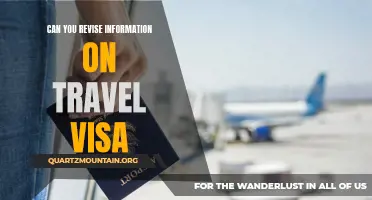
How to Easily Revise Travel Visa Information for a Seamless Trip
- Mar 26, 2024
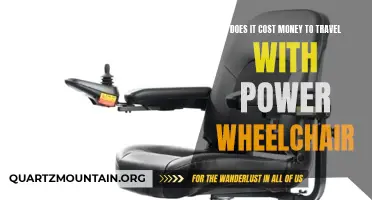
The Price of Traveling with a Power Wheelchair: What You Need to Know
- May 12, 2024

The Best Places in Singapore to Get a PCR Test for Travel
- May 26, 2024

Travel Frenzy: America's Busiest Day
- Jun 21, 2024

I’M HOTEL Festive Offerings 2023

The 2023 Winter Quarterly Edition

Southwest Tours

DOT chief joins high-level UNWTO Global Education Forum as panelist

The Philippines joins UNWTO General Assembly as Vice President for East Asia and the Pacific; prestigious global position held again after 24 years

DTI’s Go Lokal! Program teams up with Okada Manila to propel small businesses
List of requirements and protocols for travelers arriving in the philippines.
Department of Tourism Secretary Berna Romulo-Puyat announced on February 4, 2022 issued a reminder to foreign tourists coming to the Philippines in the next days to prepare all requirements to ensure a seamless travel experience.
Puyat made the statement, following the issuance of Inter-agency Task Force for the Management of Emerging Infectious Diseases’ (IATF-EID) Resolution No. 160-B, which details the new entry, testing and quarantine protocols for foreign nationals coming from 157 visa-free countries arriving from abroad, effective February 10, 2022.
“The new guidelines issued by the IATF are an indication that, while the country has opened its borders to fully vaccinated business and leisure visitors, it is doing so with utmost care and with full regard for the health and safety of both visitors and the general public.”, Puyat said.
Based on the IATF –EID Resolution 160-B, all arriving visitors must be able to present the following:
– Acceptable proof of vaccination
– Negative RT-PCR Test Taken within forty–eight hours (48 hours) before the date and time of departure from the country of origin / first port of embarkation in a continuous travel to the Philippines, excluding lay-overs for their return journey
– Valid tickets for their return journey to the port of origin or next port of destination not later than thirty (30) days from date of arrival in the Philippines
– Passports valid for a period of at least six (6) months at the time of their arrival to the Philipiines
– Travel insurance for COVID-19 treatment costs from reputed insurers, with a minimum coverage of USD 35,000 for the duration of their stay in the Philippines
The Tourism chief reiterated that only fully vaccinated foreign visitors will be allowed entry to the country. Children below 12 years old will be exempted if they are traveling with fully vaccinated foreign parents.
In the case of unvaccinated foreign children below 12 years old that are travelling with their Filipino parent/s, they shall be allowed entry and shall be required to follow the entry, testing, and quarantine protocols that apply to their Filipino parent/s. Meanwhile, those between 12-17 years old must follow the protocols based on their vaccination status, and shall be accompanied by their parents during their facility-based quarantine.
Based on the resolution, an individual is deemed fully vaccinated if he or she received the second dose in a two-dose series or a single dose vaccine more than 14 days before the date and time of departure from the point of origin.
While foreign visitors will not be required to undergo facility-based quarantine, Puyat reminded arriving travelers that they should continue self-monitoring and report to the local government unit of their destination should they exhibit any of the symptoms of the virus.
“The opening of our borders to eligible foreign visitors and the rebound of the tourism industry can only mean the restoration of the livelihood of millions of Filipinos working in tourism-related establishments and businesses who have been displaced by the pandemic. It will contribute greatly to the eventual revival of the Philippine economy”, Puyat added.
— For the full guidelines, please see IATF-EID Resolution 160 B at https://www.officialgazette.gov.ph/downloads/2022/02feb/20220203-RESO-160B-RRD.pdf.
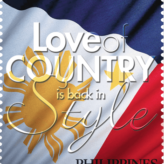
Balikbayan Media Center
Balikbayan Magazine's Media Center serves an audience in 60 countries and 101 cities throughout the World to ignite, drive, and fuel the economic development, progression, and modernisation of the Philippines. Our Media Center curates only the most critical, vital, useful, entertaining, and sometimes amusing information released from both the public and private sector. Our editorial team strongly believes that a well-rounded and well-informed society is a thriving society.
Since reopening, high influx of Balikbayans traveling to the Philippines—mostly from the U.S.
Save the date for the world travel & tourism council global summit in the philippines.
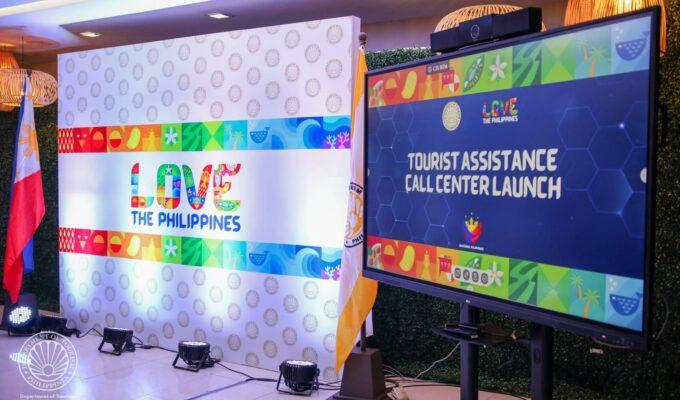
DOT launches Tourist Assistance Call Center

Tourism chief visits Tawi-Tawi in the Philippines, assures LGU, tourism stakeholders of Marcos admin’s full support

Secretary Frasco cites President Bong Bong Marcos, Jr.’s policies, programs for the industry at the Philippine Travel Mart 2023

Tourism Department’s support for the Philippines’ hosting of the FIBA Basketball World Cup 2023 on full display

Department of Tourism, Technical Education and Skills Development Authority ink deal to expand tourism education, reinforce tourism training opportunities

The Department of Tourism and the National Commission on Indigenous Peoples ink partnership to empower indigenous peoples, protect and promote cultural heritage through tourism
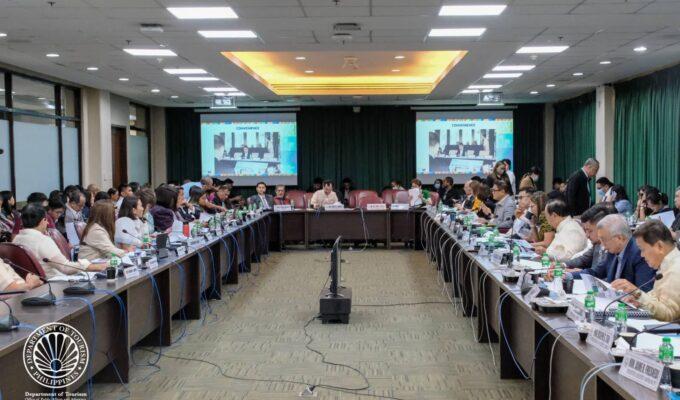
Lawmakers laud tourism initiatives, bat for higher 2024 budget for Department of Tourism

The Philippines records Php 286B tourism receipts from January to July; Frasco bares efforts to support tourism in Central Visayas
Review of the Best eSIM Cards for Travel in Philippines
Having reliable internet connectivity while visiting the beautiful Philippines can massively improve your travel experience. eSIM cards provide a convenient way to get online without the hassle of finding and installing local SIM cards.
In this comprehensive guide, we’ll explore the top eSIM options for travel in the Philippines in 2024 based on value, network quality, ease of use and more. I’ll also share tips on how to choose the right plan to suit your needs.
What is an eSIM and Why Use One in the Philippines?
An eSIM or embedded SIM card is a newer SIM technology that allows you to activate a cellular plan digitally. There’s no need to install a physical nano SIM card to access mobile data.
eSIMs provide several key benefits for travelers in the Philippines:
- Convenience – Activate an eSIM before you travel or when you land with just a smartphone. No need to source a local SIM card on arrival.
- Flexibility – Manage multiple eSIMs via service apps. Easily swap plans if you need more data.
- Accessibility – Connect in more rural or remote areas where physical SIMs are unavailable.
- Savings – Avoid steep international roaming fees from your home cellular provider.
For these reasons, eSIMs have become a very popular SIM card choice for tourists visiting the Philippines.
Factors to Consider When Choosing Philippines eSIM Service
With the growth in eSIM popularity, many providers now offer eSIM plans in the Philippines. But choosing the right service comes down to a few key factors:
1. Coverage & Network Quality
The two major mobile networks in the Philippines are:
- Globe – Known for its strength and reliability, especially in more rural locations.
- Smart – Offers faster overall speeds but less extensive coverage than Globe.
Check which network(s) a provider uses before buying an eSIM service. In the Philippines, Globe’s coverage may be preferable if you plan to travel to remote islands or off-the-grid areas.
2. Speed & Data Allowance
Pay attention to the data speed – is it 4G/LTE or 5G where available? And ensure the plan’s data allowance suits your intended usage.
Remote workers or frequent travelers may require larger 10GB+ monthly data allowances. Occasional users can likely manage fine on 1-5GB plans.
3. Customer Support
Consider checking review sites to gauge the quality of customer service offered by eSIM providers.
Having responsive support via live chat or email can be invaluable if you encounter any activation, usage, or renewal issues while abroad.
4. Value & Affordability
Compare the price per GB when assessing the affordability of Philippines eSIM plans. Cheaper per GB pricing indicates better overall value.
Also note the plan length – longer 30-day plans often work out more economical than shorter 7-14 day options targeting very short-term visitors.
By evaluating providers across these criteria, you can determine the best eSIM plan for your Philippines travel requirements. Next I’ll share my top recommendations.
Top eSIM Services for Travelers in the Philippines

Based on extensive usage across multiple trips to the Philippines, combined with continual monitoring of new providers entering this market, I suggest considering the following three eSIM services for your upcoming visit:
Airalo is my top choice for tourists visiting the Philippines thanks to its competitive pricing and specific local plan options.
They offer Philippines-only eSIMs with Globe LTE coverage at excellent rates:
- 1GB Weekly Plan – $4.50
- 3GB 30-day Plan – $9.50
- 5GB 30-day Plan – $13
- 10GB 30-day Plan – $21
Airalo also has an Asia regional plan including Philippines. But their local options provide far better value.
I’ve used Airalo eSIMs multiple times when traveling in the Philippines without any issues. Their app makes it simple to activate and manage plans.
Another very reliable choice for prepaid eSIMs is Nomad, thanks to their competitively priced Philippines data plans.
They utilize Globe’s extensive 4G/5G networks, with affordable Philippines-only options like:
- 3GB 30-day Plan – $8
- 5GB 30-day Plan – $12
- 10GB 30-day Plan – $17
- 15GB 30-day Plan – $21
Nomad also offers multi-country eSIMs valid in the Philippines. But their dedicated local plans provide the best deals.
I’ve tested Nomad a few times in the Philippines and found speeds and connectivity to be solid, albeit not quite as fast as a direct Globe/Smart SIM. But their prices make Nomad plans worthwhile, especially for tourists focused more on affordability.
3. KnowRoaming
Lastly, KnowRoaming deserves a mention. While not the cheapest provider, they offer completely unlimited high-speed data eSIMs that can be convenient for remote workers or frequent travelers.
Their Philippines unlimited plan via Globe’s LTE network costs $119 for 30 days. So it’s still an affordable way to get endless high-speed data compared to using costly roaming packages.
KnowRoaming also has a Global Hotspot unlimited plan covering 71 destinations including Philippines for $149 monthly. Speed gets throttled to 256kbps overseas but remains high-speed in Philippines.
So for longer stays, KnowRoaming’s unlimited eSIM warrant consideration. But most tourists will likely prefer more affordable fixed data allowances from Airalo or Nomad.
Other Philippines eSIM Providers

There are a few other lesser-known providers like Yesim and Ding that also offer Philippines eSIMs. But at this stage I feel Airalo, Nomad and KnowRoaming provide the best options based on network quality, value and ease of activation.
However, it can be worthwhile keeping an eye on new eSIM startups as this market continues to grow rapidly. I will endeavor to keep this guide updated as other leading contenders emerge.
Key Considerations When Using eSIMs in Philippines
To ensure your Philippines eSIM keeps you conveniently connected throughout your trip, keep the following usage tips in mind:
- Confirm your device supports eSIM functionality before purchasing a plan. All newer phone models are typically eSIM compatible.
- Activate your Philippines eSIM card before departure while you still have a stable internet connection for the activation process.
- Try to avoid activating an eSIM public areas like airports or malls where connectivity may be limited and could disrupt the activation process.
- Prepaid eSIMs have a limited validity period so be mindful of duration when purchasing plans – don’t activate too early.
- Setup data roaming on your device after activation. This allows your eSIM to connect automatically after landing in the Philippines.
By choosing a reliable Philippines eSIM service and properly setting up your plan in advance, you can now travel across this amazing country without worrying about internet connectivity.
Focus on creating amazing memories, and let your eSIM handle keeping you conveniently connected and avoiding expensive roaming fees. Have an incredible trip to the Philippines!
Leave a Comment Cancel Reply
Your email address will not be published. Required fields are marked *
Save my name, email, and website in this browser for the next time I comment.
How to watch Biden vs Trump Presidential Debate online from anywhere
It begins. Biden vs Trump went head-to-head in the first live televised debate of the 2024 race for the White House.

- Unblock any stream
- Watch in the U.S.
- Watch in the U.K.
- Watch in Canada
- Watch in Australia
The biggest political debate of the year so far has already happened. The two candidates aiming to become President of the United States of America have exchanged opening blows in the race for the White House. The first Presidential live debate of the 2024 election was a must-watch on CNN (and not always for the right reasons). But even though you missed it live, you can watch it back now from anywhere with a VPN and potentially for free!
CNN 2024 Presidential Debate live stream takes place Thursday, June 27. • Time: 9 p.m. ET / 6 p.m. PT / 2 a.m. BST (Jun. 28) • FREE STREAMS — CNN YouTube (U.S.) | CBCNews (CAN) | SBS On Demand (AUS) • U.S. — Watch on CNN via Sling , Hulu or Max . • CAN — CTV News • U.K. & AU — CNN International • Watch anywhere — try NordVPN 100% risk free
Later this summer, Joe Biden and Donald Trump will become the official Democrat and Republican candidates for the 2024 Presidential Election. Until now, the campaigning has been via soundbites and speeches conducted at arm's length but they met head-to-head for the first live televised debate of the campaign on CNN on Thursday, June 27.
More than 73 million people watched the first presidential debate between Trump and Biden in September 2020 and, although that number may not be beaten this time, the 90-minute long slugfest will still have pulled in more viewers than almost any other show this year.
The rules regarding qualification and the format of the debate can be found below. Read on to find where you can watch the first U.S. Presidential Debate from anywhere in the world, with plenty of free live streams available.
How to watch the CNN Presidential Debate from anywhere
If you're not at home for the first live televised debate of the 2024 Presidential election you can still tune in via a virtual private network, or VPN. A VPN makes it appear like you're surfing the web from your home allowing you to access the streaming services you already pay for. It's legal and easy to do.
We've tested many different VPN services and our favorite is NordVPN ; it offers superb speeds, excellent customer service and a no-questions-asked 30-day money-back guarantee, so you can try it out first to see if it's right for you. But you've got other VPN options too, so check out our full list of the best VPN services .
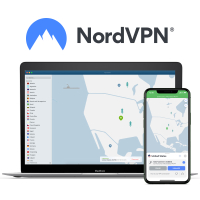
There's a good reason you've heard of NordVPN. We specialize in testing and reviewing VPN services and NordVPN is the one we rate as the best. It's outstanding at unblocking streaming services, it's fast and it has top-level security features, too. With over 5,000 servers, across 60 countries, and at a great price, it's easy to recommend.
Get 70% off NordVPN with this deal
Using a VPN is incredibly simple.
1. Install the VPN of your choice . As we've said, NordVPN is our favorite.
2. Choose the location you wish to connect to in the VPN app. For instance, if you're in the U.K. and want to view your usual U.S. service, you'd select U.S. from the list.
3. Sit back and enjoy the action. Head to PBS and watch the 2024 Presidential debate live online.
How to watch the first Presidential Debate 2024 in the U.S.

The 2024 CNN Presidential Debate can, naturally enough, be found on CNN .
If you've cut the cord and don't have cable, you still have plenty of options. Our top pick is Sling TV : the Sling Blue package starts at $40 per month (depending on your location) with a discounted first month . It comes with more than 30 channels including CNN. You can also watch CNN on Sling Orange which, again, starts at $40 per month with an initial discount.
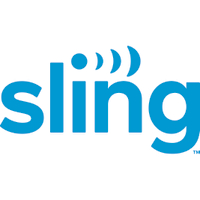
Sling TV offers two packages, Orange ($40 per month) and Blue (from $40 per month). Both Sling Blue and Sling Orange include CNN in their standard channel line-up. New subscribers usually get a healthy discount on their first month.
The debate is available across CNN brands including CNN International via Hulu , CNN en Español, CNN Max via Max and the CNN website.
Many news outlets, including ABC, MSNBC, CBS , Fox, Fox News and Bloomberg will simulcast the debate. Viewers in the U.S. can also watch for free via PBS as part of a new special but check your local listings for all of these.
A free stream of the debate is also now available on CNN's YouTube channel .
Another option cord cutting option is Philo , where you can watch the debate live on the USA Today Channel , available as part of the Philo Core Plan, which costs $28 per month.
If you already use those services but aren't in the U.S. right now, don't panic. You can watch the 2024 CNN Presidential Debate live streams by using a VPN such as NordVPN .
How to watch the first Presidential Debate 2024 in the U.K.

As with the U.S., all the major CNN channels will be carrying the first televised debate between President Biden and Donald Trump and Sky TV users in the UK had the chance to tune into channel 506 at 2a.m. Ouch.
Don't worry though, because it's available in full on the CNN YouTube channel .
However , if you are abroad and can't access your account because it is geographically blocked you can still follow every single well-rehearsed word by using one of the best VPN services, such as NordVPN .
How to watch the first U.S. Presidential Debate 2024 in Canada

If you're in the Great White North, coverage of the debate and what it might mean for Canada will start on CTVNews.ca, CTV News App and CTV News Channel at 8 p.m. (ET) with "Power Play" anchored by Vassy Kapelos and then followed at 9 p.m. with the 2024 CNN Presidential Debate live from the CNN Atlanta studios. Any fall-out from the debate will be back on "Power Play" on the same channels at 10:37 p.m.
It will also be broadcast for free on the CBC News Network and can be streamed on the CBCNews website and the CBC Gem app.
Travelling abroad for work or on vacation and want to access the coverage at home? Don't panic. Just use one of the best VPN services, like NordVPN .
How to watch the first U.S. Presidential Debate 2024 in Australia

In Australia, the debate was available in its entirety from 11 a.m (AEST) on Friday, June 28 as a simulcast live from Atlanta, Georgia.
It was be shown Down Under on CNN via Foxtel and several other networks, including for free on SBS and SBS On Demand .
If you want to catch up on every detail, then you can re-watch the entire debate in full on CNN's YouTube channel .
Travelling abroad for work or on vacation and want to access the coverage at home? Don't panic. Just use one of the best VPN services. NordVPN is our top pick of the options.
Is this early for the first U.S. Presidential Debate of a campaign?
The debate was the earliest of its kind in U.S. electoral history. Since the initial such broadcast between John F. Kennedy and Richard Nixon in 1960, these opening salvos between presumptive candidates of the two major parties have tended to take place in September or October. This extra time ensures that both candidates are in for a long and gruelling battle for the White House.
The 2024 CNN Presidential Debate – Qualification Requirements
In order to qualify [to take part in the live televised debate], candidates had to satisfy the requirements outlined in Article II, Section 1 of the U.S. Constitution to serve as president, as well as file a formal statement of candidacy with the Federal Election Commission.
Also, according to parameters set by CNN in May: "All participating debaters have to appear on a sufficient number of state ballots to reach the 270 electoral vote threshold to win the presidency and receive at least 15% in four separate national polls of registered or likely voters that meet CNN’s standards for reporting."
Polls meeting those standards are sponsored by CNN, ABC News, CBS News, Fox News, Marquette University Law School, Monmouth University, NBC News, The New York Times/Siena College, NPR/PBS NewsHour/Marist College, Quinnipiac University, The Wall Street Journal and The Washington Post.
Much to the fury and resentment of Robert F Kennedy Jnr., Biden and Trump were the only candidates to meet those requirements.
The pair has also agreed to participate in another debate hosted by ABC on September 10.
The 2024 CNN Presidential Debate – Ground Rules
Veteran CNN anchors Jake Tapper and Dana Bash will moderate the debate. It will last 90 minutes and include two commercial breaks.
The two candidates flipped a coin to determine their podium placement and the order of their closing statements. President Biden will appear on the right hand side of the screen, with Trump to his left.
As part of that deal, the former President will get the last word, as he opted for Mr Biden to deliver his closing statement first.
Both candidates will stand for the duration of the debate.
Candidates are forbidden from interacting with any advisers or members of their campaign teams for the duration of the event (specifically including commercial breaks).
No props or pre-written notes are allowed on stage. They will be permitted only a pen, a pad and a bottle of water.
Unlike in their previous showdowns, the candidates will have their microphones muted except for when it is their turn to speak.
There will also be no studio audience – and CNN intends to "enforce timing and ensure a civilised discussion".
More from Tom's Guide
- How to watch Euro 2024 online
- The best VPN service
- How to watch F1 live streams
We test and review VPN services in the context of legal recreational uses. For example: 1. Accessing a service from another country (subject to the terms and conditions of that service). 2. Protecting your online security and strengthening your online privacy when abroad. We do not support or condone the illegal or malicious use of VPN services. Consuming pirated content that is paid-for is neither endorsed nor approved by Future Publishing.
Sign up to get the BEST of Tom’s Guide direct to your inbox.
Upgrade your life with a daily dose of the biggest tech news, lifestyle hacks and our curated analysis. Be the first to know about cutting-edge gadgets and the hottest deals.
Bill Borrows is an award-winning journalist, feature writer and columnist (Times Magazine/ Guardian/ Telegraph/ Daily Mirror/ Mail On Sunday/ Radio Times), author ( The Hurricane : The Turbulent Life and Times of Alex Higgins) and book editor. A frequent contributor on talkSPORT and talkRADIO, his areas of specialisation include sport, history, politics, TV and film. He doesn’t get much free time but does admit to an addiction to true crime podcasts, following Man City home and away, and a weakness for milk chocolate cookies
How to watch Coldplay headline Glastonbury 2024 online and from anywhere
New on Disney Plus in July 2024 — 'The Acolyte' finale, 'Bluey' minisodes and more
Forget Prime Day — these are the 7 best gaming deals in the 2024 Steam Summer Sale
Most Popular
- 2 What is a microsleep and are they dangerous? We ask an expert
- 3 Naturepedic Concerto Pillow Top mattress review 2024
- 4 I brought a mini PC with me on my last trip and I'd do it again in a heartbeat
- 5 These new smart glasses come with a camera and ChatGPT-4o

IMAGES
VIDEO
COMMENTS
U.S. Embassy Manila, Philippines. U.S. Consular Agency Cebu, Philippines June 8, 2022 Message for U.S. Citizens: Philippine Entry and Exit Requirements Entry to the Philippines: Although travel to the Philippines is now permitted, U.S. citizens should know and comply with arrival and departure requirements as promulgated by the Philippine government, which generally include the following as a ...
1. Travelers 15 years and older shall present a remotely supervised/laboratory-based Rapid Antigen Test administered and certified by a healthcare professional in a healthcare facility, laboratory, clinic, or other similar establishment taken 24 hours prior to the date and time of departure from country of origin/first port of embarkation in a ...
April 12, 2023 . Starting April 15, 2023, travelers to and from the Philippines are required to register through the E-Travel portal (https://etravel.gov.ph).This is in line with the directive of the government's Inter-Agency Task Force for the Management of Emerging Infectious Diseases on the complete utilization of the e-Travel system.
Travel and health documents (if required by destination country) Negative COVID-19 Test Result (if required by destination country) Note that these are just the requirements for leaving the Philippines. Your destination country most probably has additional ARRIVAL rules and restrictions that you must follow. These entry requirements vary per ...
Call us in Washington, D.C. at 1-888-407-4747 (toll-free in the United States and Canada) or 1-202-501-4444 (from all other countries) from 8:00 a.m. to 8:00 p.m., Eastern Standard Time, Monday through Friday (except U.S. federal holidays). See the State Department's travel website for the Worldwide Caution and Travel Advisories.
Note: etravel.gov.ph now replaces the One Health Pass and remains mandatory for all travelers, Filipino and non-Filipino alike. The Embassy would like to remind the public that this website is FREE OF CHARGE and to be vigilant in recognizing fraudulent websites.. For International Arrivals in the Philippines: Presentation of vaccination status and vaccination certificate for COVID-19 is no ...
Outbound Travel Restrictions by Philippine Government on Filipino Travelers. As of 19 March 2020. Outbound Travel Restrictions by Philippine Government on Filipino Travelers - All Overseas Filipino Workers (OFWs) and balikbayans shall be allowed to leave the country at any time, subject to availability of flights.
HomeData PolicyFAQContact. Philippine One-Stop Electronic Travel Declaration System. You may only register within 72 hours prior to your arrival or departure in the Philippines. Travelers are enjoined to present their eTravel QR code to flight boarding. Initiative of the Government of the Philippines:
It also has sole and sovereign prerogative on the entry, stay, and exit of all foreign citizens into the Philippines. The final evaluation and decision on who may enter (especially foreign nationals) and leave (all nationals) rests with BI. Thus, compliance to their requirements is strongly advised.
Philippine One-Stop Electronic Travel Declaration System. In compliance with Ease of Doing Business Law (R.A. 11032), an act promoting ease of doing business and efficient delivery of government services.
At the middle of the COVID-19 pandemic sometime late 2020, the Philippines allowed non-essential travel for their citizens or those who are traveling abroad for the purpose of tourism. This post COVID season, requirements have been lessened but it is still wise to prepare these documents. Travel requirements for outbound Philippine passport ...
Travel requirements are subject to change at short notice by the issuing government authority. As such, posting of the advisories below is not real-time and serve only as a guide. Please confirm your requirements directly with the offices/websites of your place of origin and destination. All passengers are encouraged to follow the guide ...
However, travelers must still meet the following requirements: As of April 2023, all travelers, including children. are required to register via the Electronic Travel Declaration System no earlier than 72 hours from the intended arrival. Passport must be valid for at least six months at the time of arrival.
The lowering of Travel Advisory Levels in four areas of Mindanao, including Davao City, Davao del Norte Province, Siargao Island, and the Dinagat Islands, which changed from Level 3 ("Reconsider Travel") to Level 2 ("Exercise Caution"). Updated information on current risk levels.
If you're leaving the Philippines using a temporary passport issued inside the country, consult the Philippine Bureau of Immigration to obtain the required exit stamps. ... Exit requirements Travel pass. Foreign nationals travelling on a visa issued by one of the following authorities must present a travel pass to leave the country: the ...
Yes, US citizens are still required to complete the eTravel Declaration for the Philippines to enter the country. It's now officially known as the Philippine One-Stop Electronic Travel Declaration System. Initially introduced as a COVID-19 safety measure and called the eArrivalCard, the eTravel system now serves as a traveler declaration for ...
At least four hours before scheduled departure or by 8 pm latest for international flights. At least three hours for all international flights. It is also best to be informed about the country's requirements prior to your trip. Most countries now require visitors to undergo quarantine before they can enter the country.
Exit requirements. If you have stayed in the Philippines for 6 months or more on a tourist visa, you must get an emigration clearance certificate (ECC) during the 72 hours before you leave the ...
The Inter-Agency Council Against Trafficking (IACAT) is set to implement its revised guidelines for the departure of Filipinos traveling abroad starting September 3. In a recent statement, the ...
Passport valid at least six months from the date of departure. Boarding pass. Appropriate visa, whenever required. Confirmed return or roundtrip ticket, when necessary. According to Justice ...
U.S. Consular Agency Cebu, Philippines January 31, 2022 Health Alert: Upcoming Changes in Philippine Entry Requirements. Location: Philippines, countrywide Event: As of February 10, the Philippines will grant entry to fully vaccinated visitors from countries that are permitted visa-free travel, including the United States. Fully vaccinated ...
This is to comply with new health requirements announced by the Philippine Inter-Agency Task Force for the Management of Emerging Infectious Diseases (IATF-EID) as part of an overall relaxation of travel protocols in relation to Covid-19. Prior to this latest IATF rule, passengers entering the Philippines were required to present a negative RT ...
Travel and health insurance (if travelling with a tourist visa) Negative COVID-19 test result taken within 24 hours before departure; Signed immigration declaration form acknowledging the risks of travel; On top of these, Filipinos must also comply with the travel restrictions and requirements of their destination country.
Department of Tourism Secretary Berna Romulo-Puyat announced on February 4, 2022 issued a reminder to foreign tourists coming to the Philippines in the next days to prepare all requirements to ensure a seamless travel experience. Puyat made the statement, following the issuance of Inter-agency Task Force for the Management of Emerging Infectious Diseases' (IATF-EID) Resolution…
Airalo is my top choice for tourists visiting the Philippines thanks to its competitive pricing and specific local plan options. They offer Philippines-only eSIMs with Globe LTE coverage at excellent rates: 1GB Weekly Plan - $4.50; 3GB 30-day Plan - $9.50; 5GB 30-day Plan - $13; 10GB 30-day Plan - $21
In order to qualify [to take part in the live televised debate], candidates had to satisfy the requirements outlined in Article II, Section 1 of the U.S. Constitution to serve as president, as ...